Seen on the Farm
/This one isn't actually on OUR farm. I love this sunflower crop that is Across the Road.
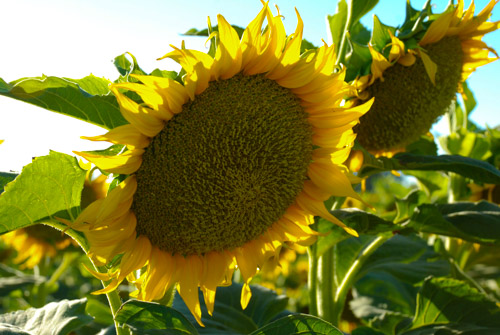
I took the rest of these photos here.
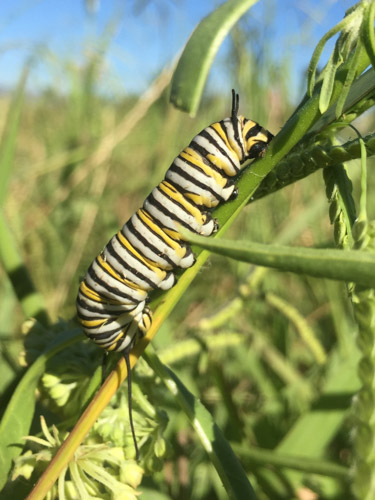
Monarch caterpillar on narrow-leaf milkweed.
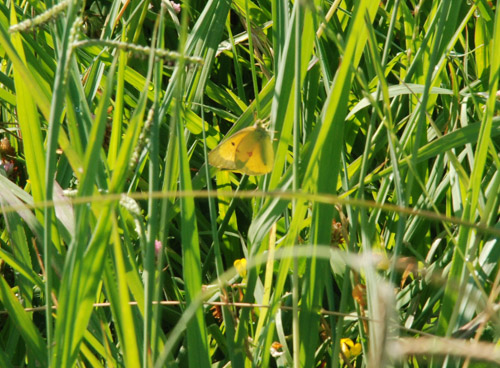
Alfalfa butterfly. The caterpillars are considered pests in fields of alfalfa. They also consume other legumes (like clover and trefoil in my pasture).
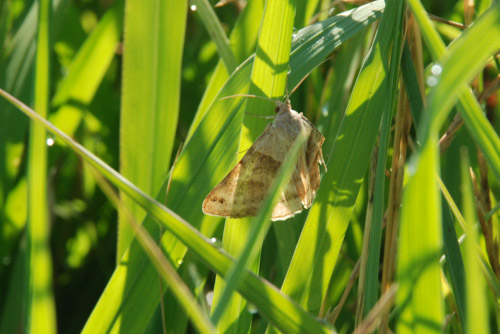
I still don't know what this one is. Previously I tentatively identified one in a better photo as a forage looper moth. Maybe? Do you know how hard it is to chase a butterfly/moth that doesn't want to be photographed?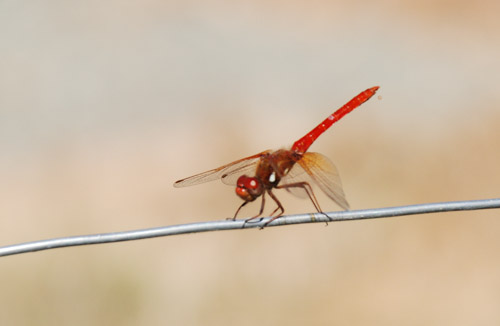
California Red Dragonfly. While we're looking at insects here are nasty ones that supposedly the dragonflies eat.
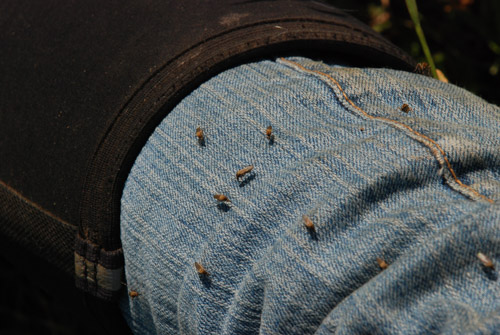
We were doing pretty well keeping the pasture mosquitoes at bay. I guess it was the last irrigation followed by a heat wave that brought them on to this degree. This morning in the pasture I was covered head to foot--overalls and a hooded sweatshirt with the hood tied around my face. I could still hear them buzzing.
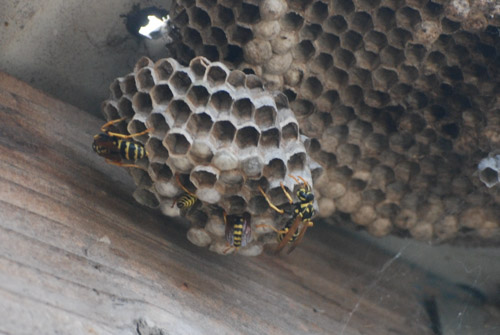
While on the subject of nasty buzzing things in the barn last year's paper wasp nests are active again. I guess I need to find the wasp spray.
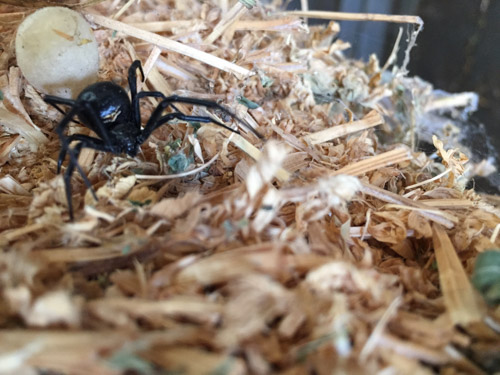
Same subject. Different pest. This is another black widow on the hay. You have to be careful pulling bales of hay away from the wall or off the floor.
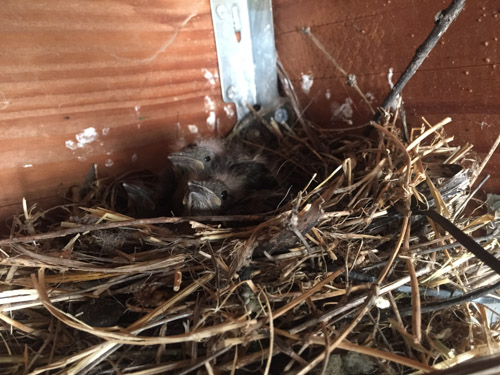
Also in the barn but no stings or bites (except maybe when the parents dive-bomb the dogs). This is another nest of Brewer's blackbirds. This photo was taken a couple of weeks ago...
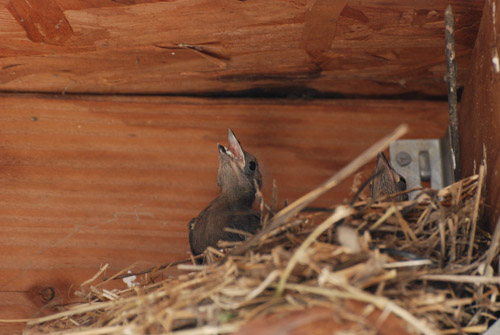
...and this one a little later. These birds have left the nest now.
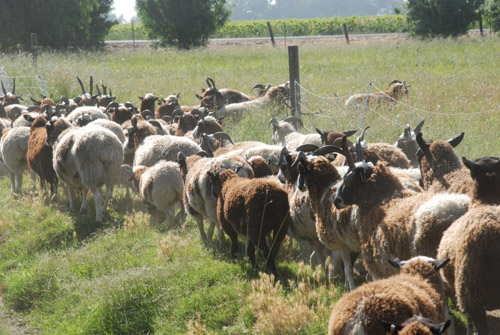
Sheep going to pasture in the morning.
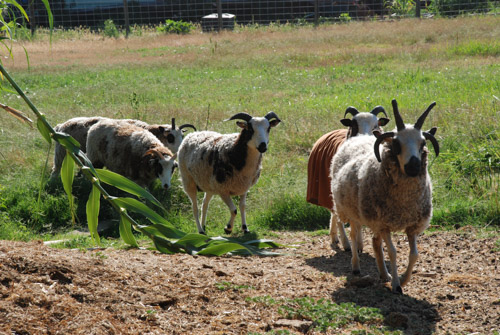
These are some of the new sheep. That's Bronagh who seems to take the lead. They are out with the rest of the flock now and are as anxious to come to the fence for grain when I rattle the bucket as the other sheep.

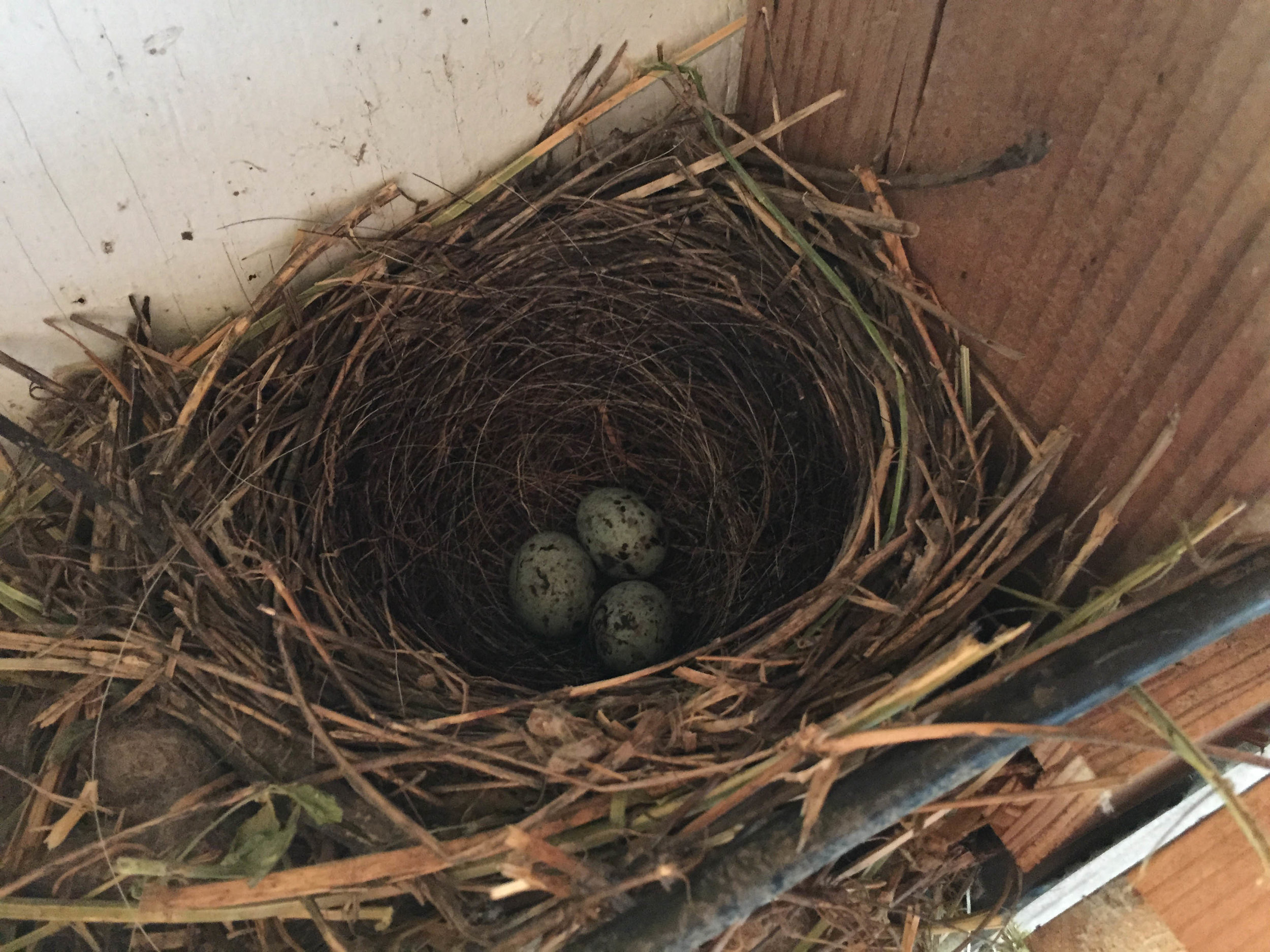 This is one of several Brewer's Blackbirds' nests in the barn. This one is on a convenient shelf just over my lambing calendar. I've read that Brewer's blackbirds eat seeds, grains, and insects.
This is one of several Brewer's Blackbirds' nests in the barn. This one is on a convenient shelf just over my lambing calendar. I've read that Brewer's blackbirds eat seeds, grains, and insects.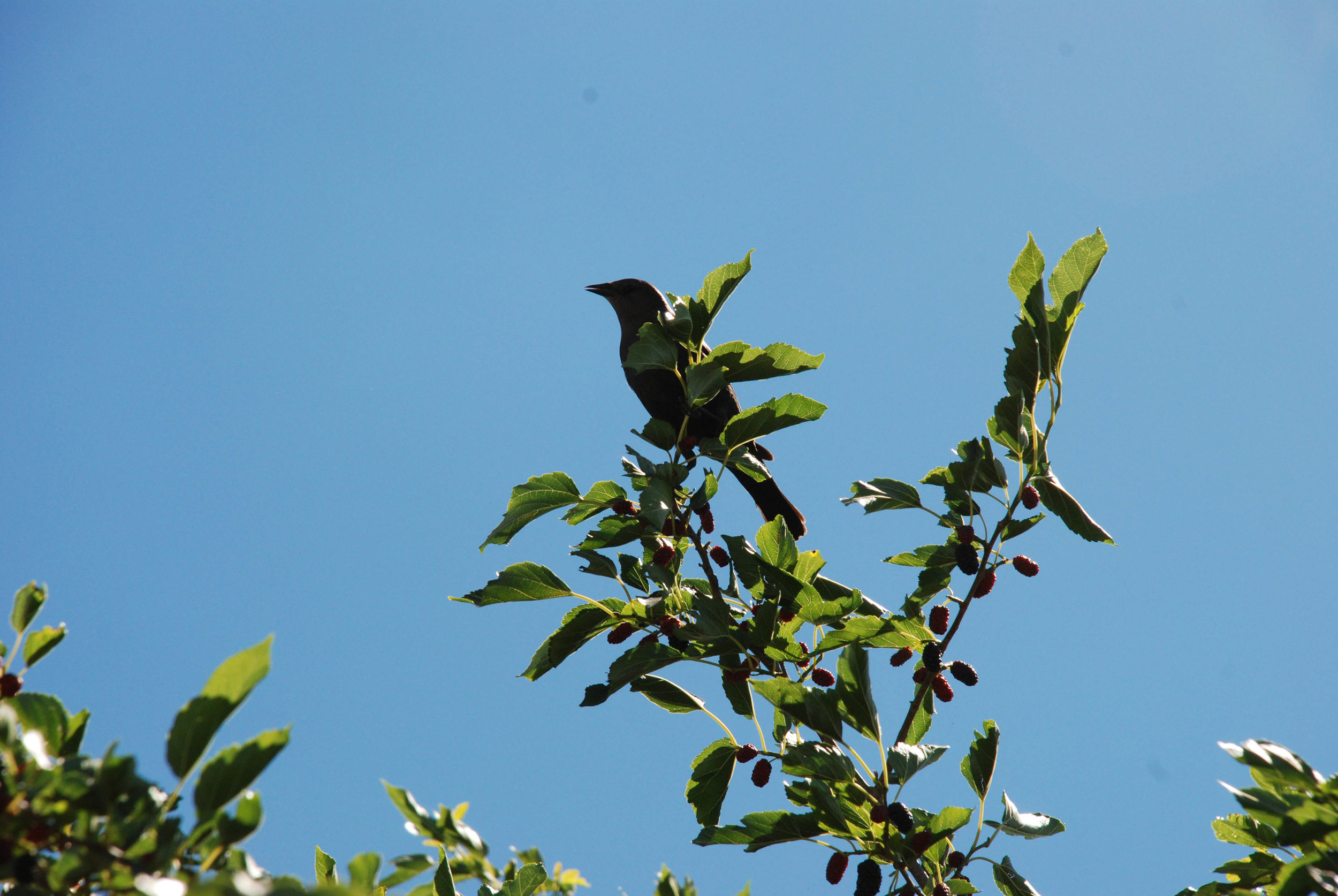 However, our blackbirds do quite well on the mulberry tree that overhangs the ram pen and is loaded with mulberries right now.
However, our blackbirds do quite well on the mulberry tree that overhangs the ram pen and is loaded with mulberries right now. 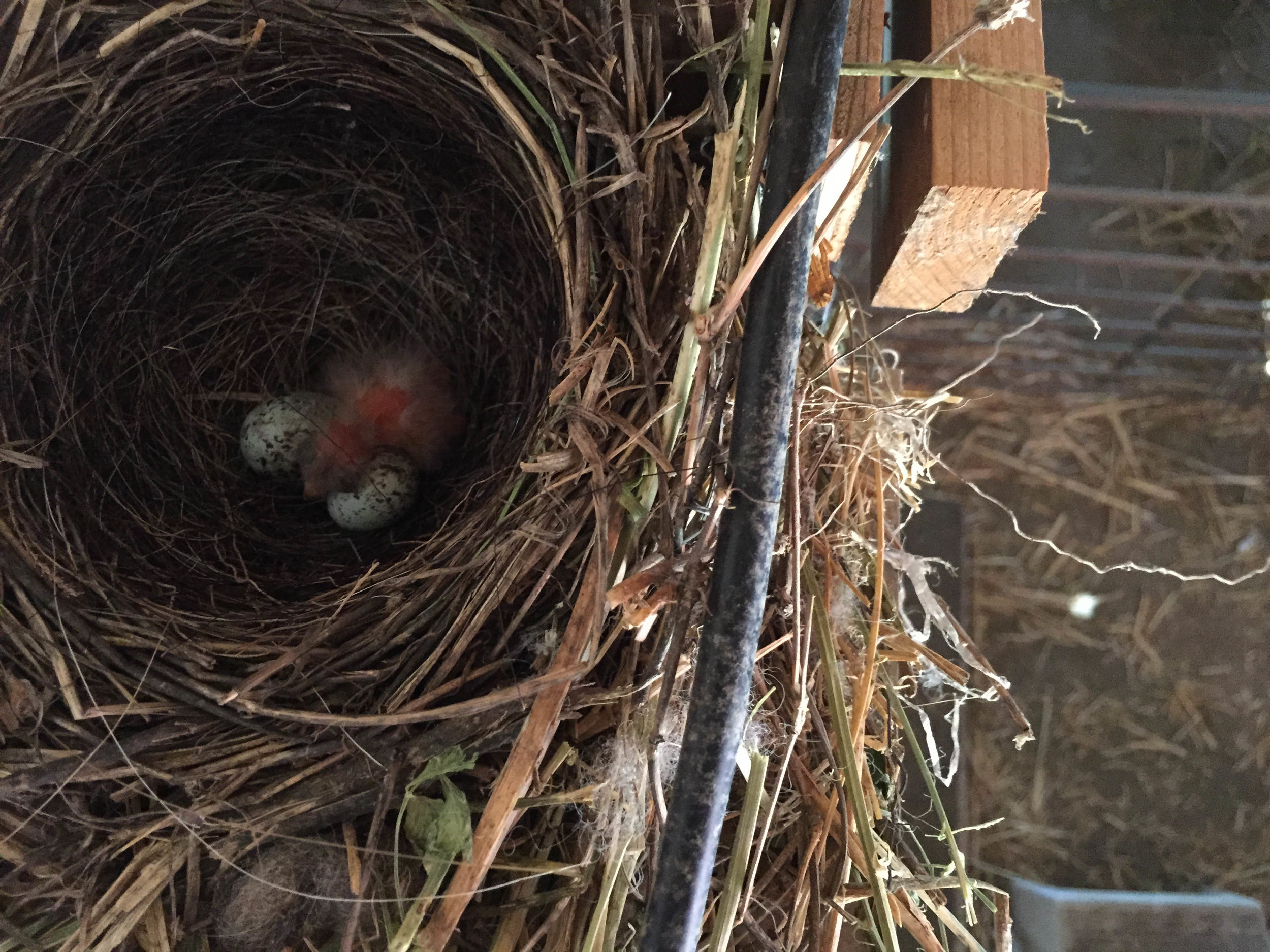 This bird hatched on April 30. Anytime we walk in the barn, the parents harass us relentlessly.
This bird hatched on April 30. Anytime we walk in the barn, the parents harass us relentlessly.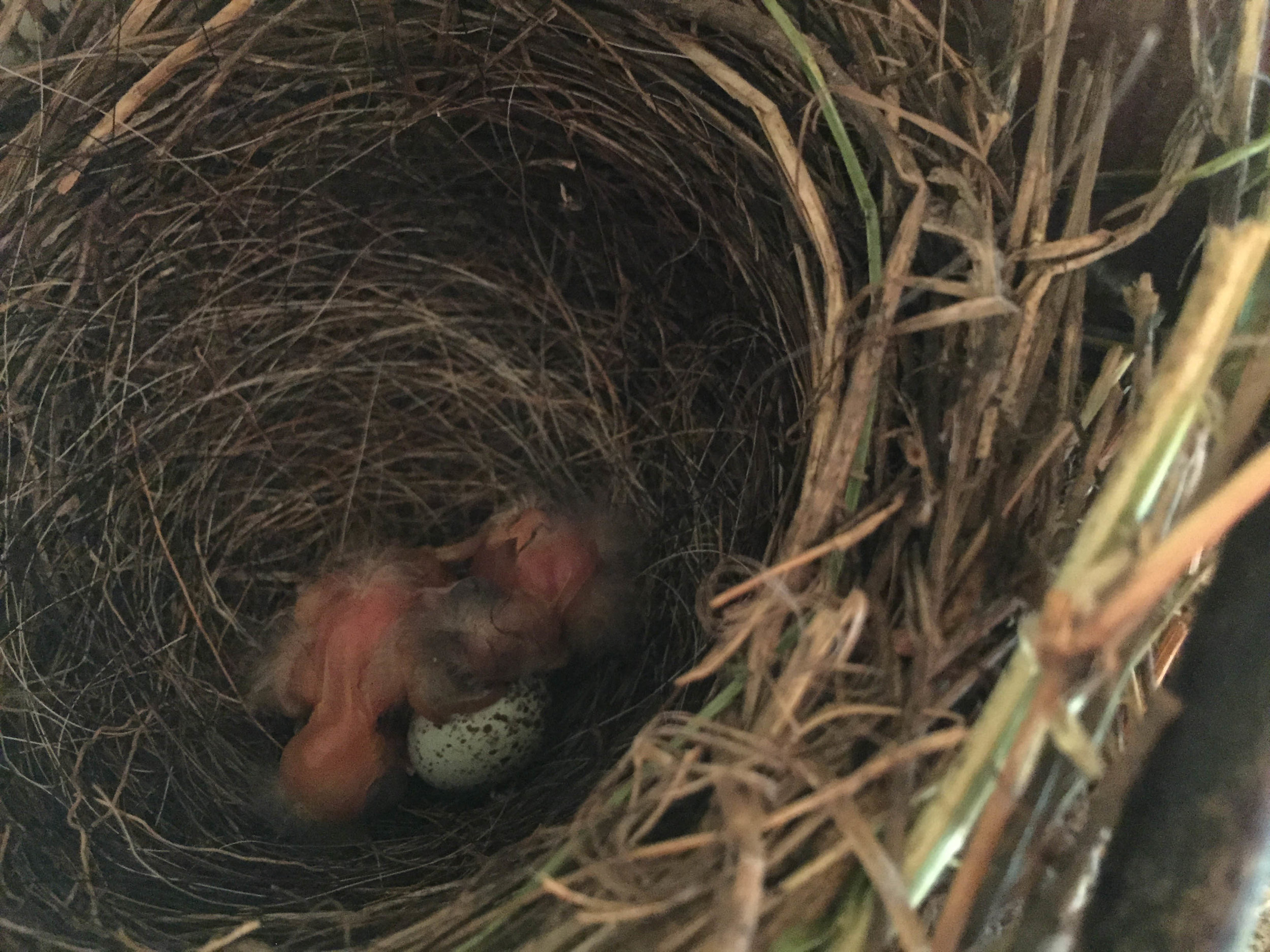 This photo was taken two days later on May 2.
This photo was taken two days later on May 2.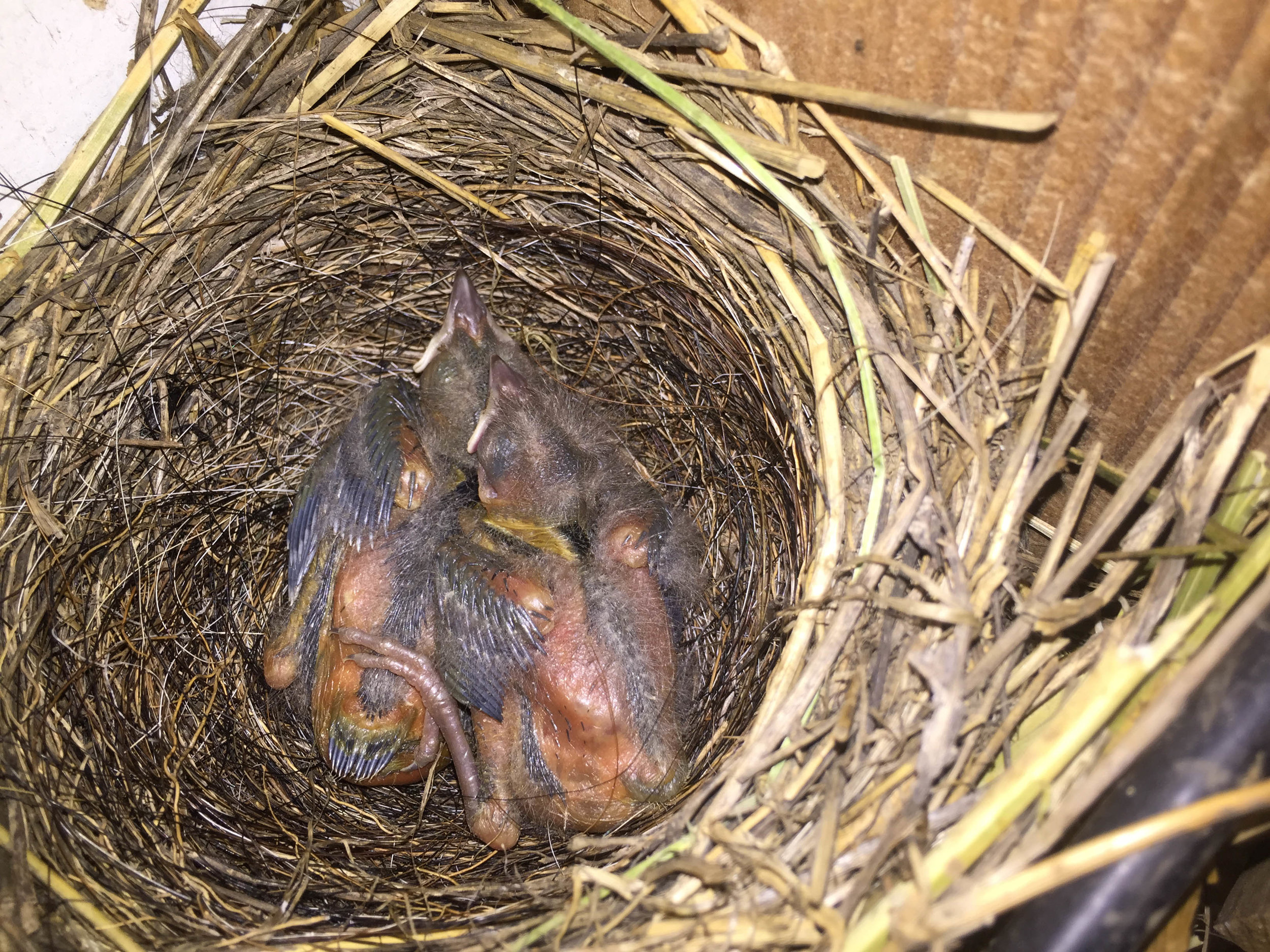 May 6.
May 6.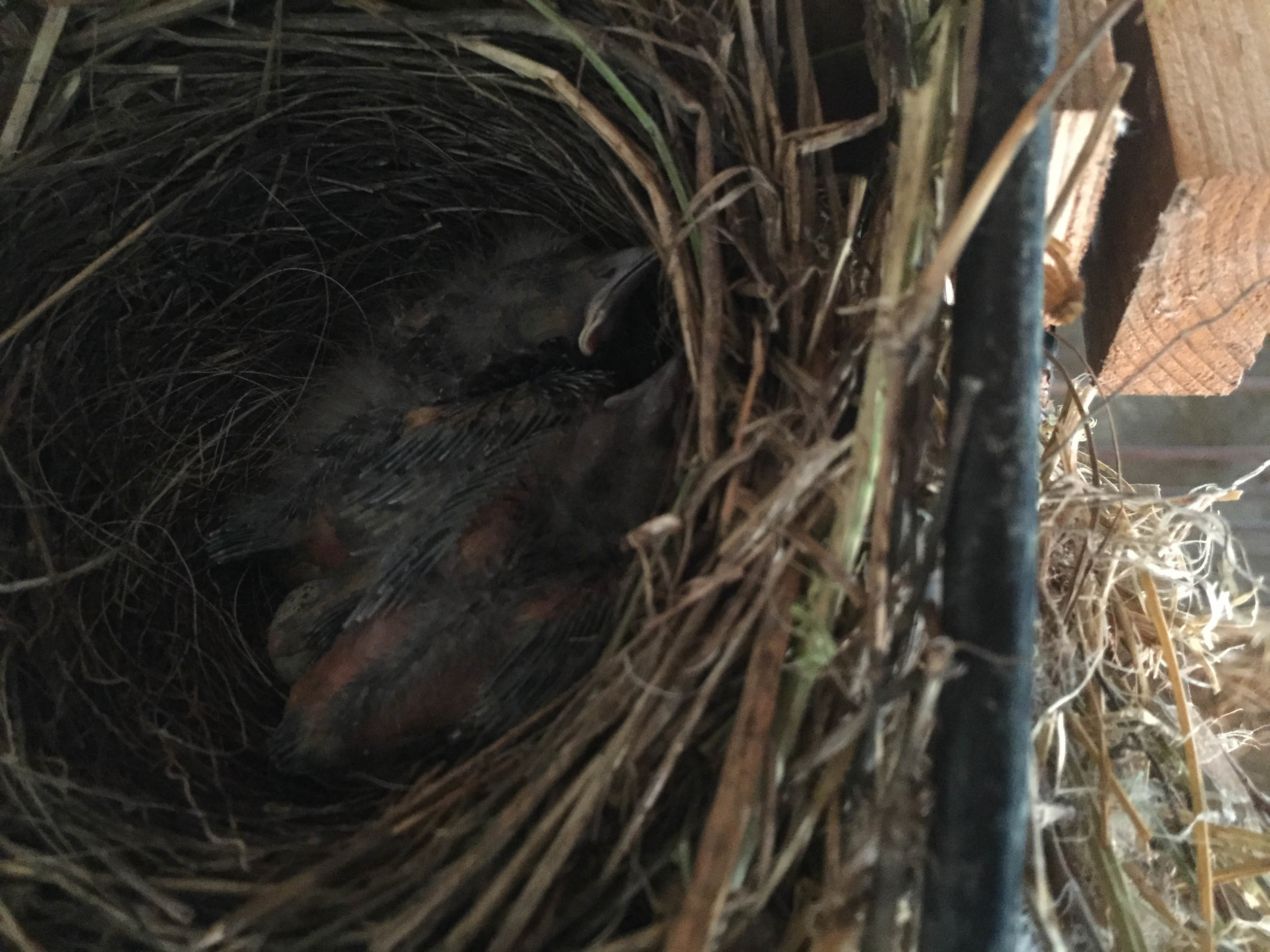 May 8. They grow quickly.
May 8. They grow quickly.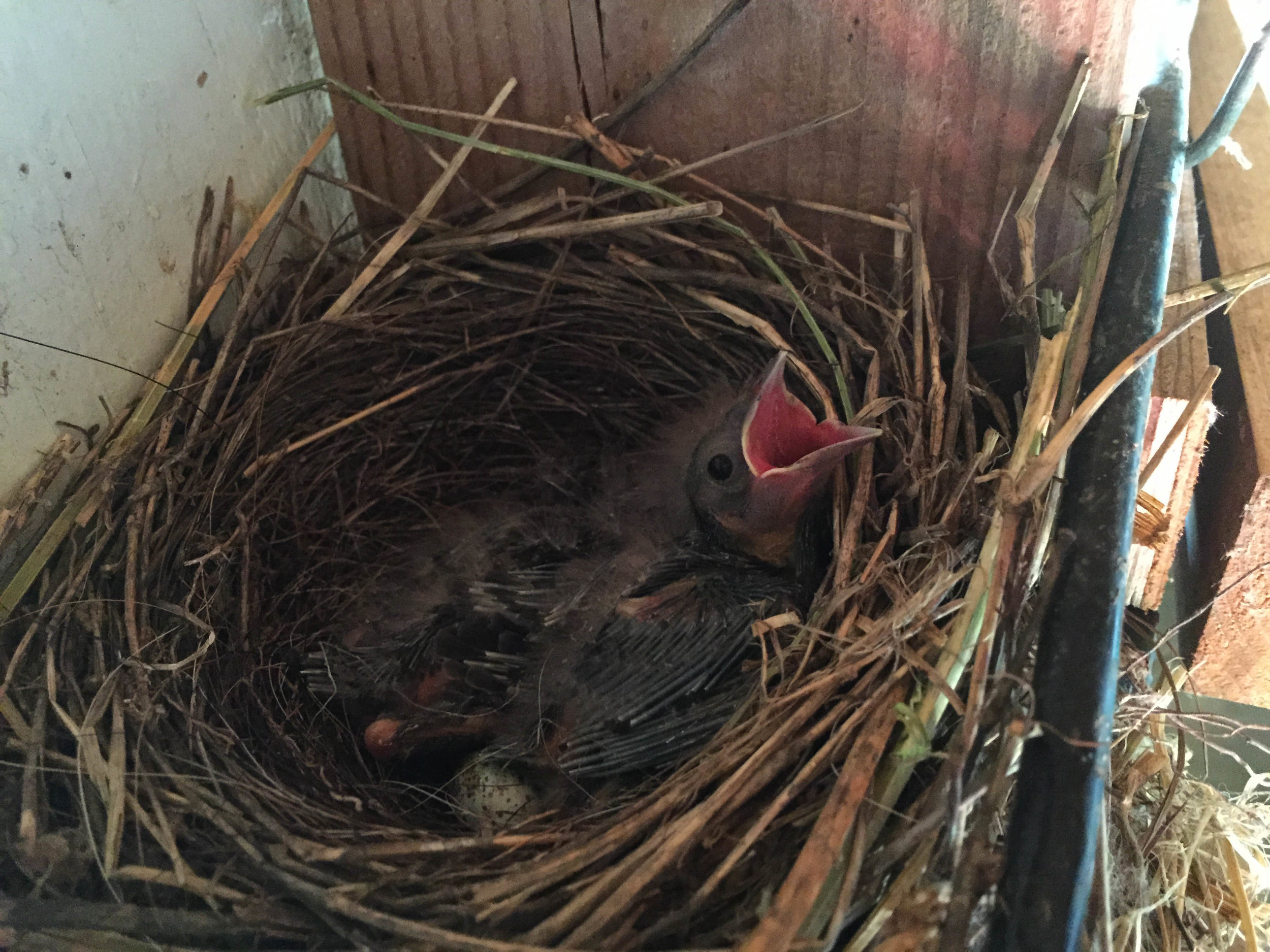 This is May 9. The first baby is 9 days old.
This is May 9. The first baby is 9 days old.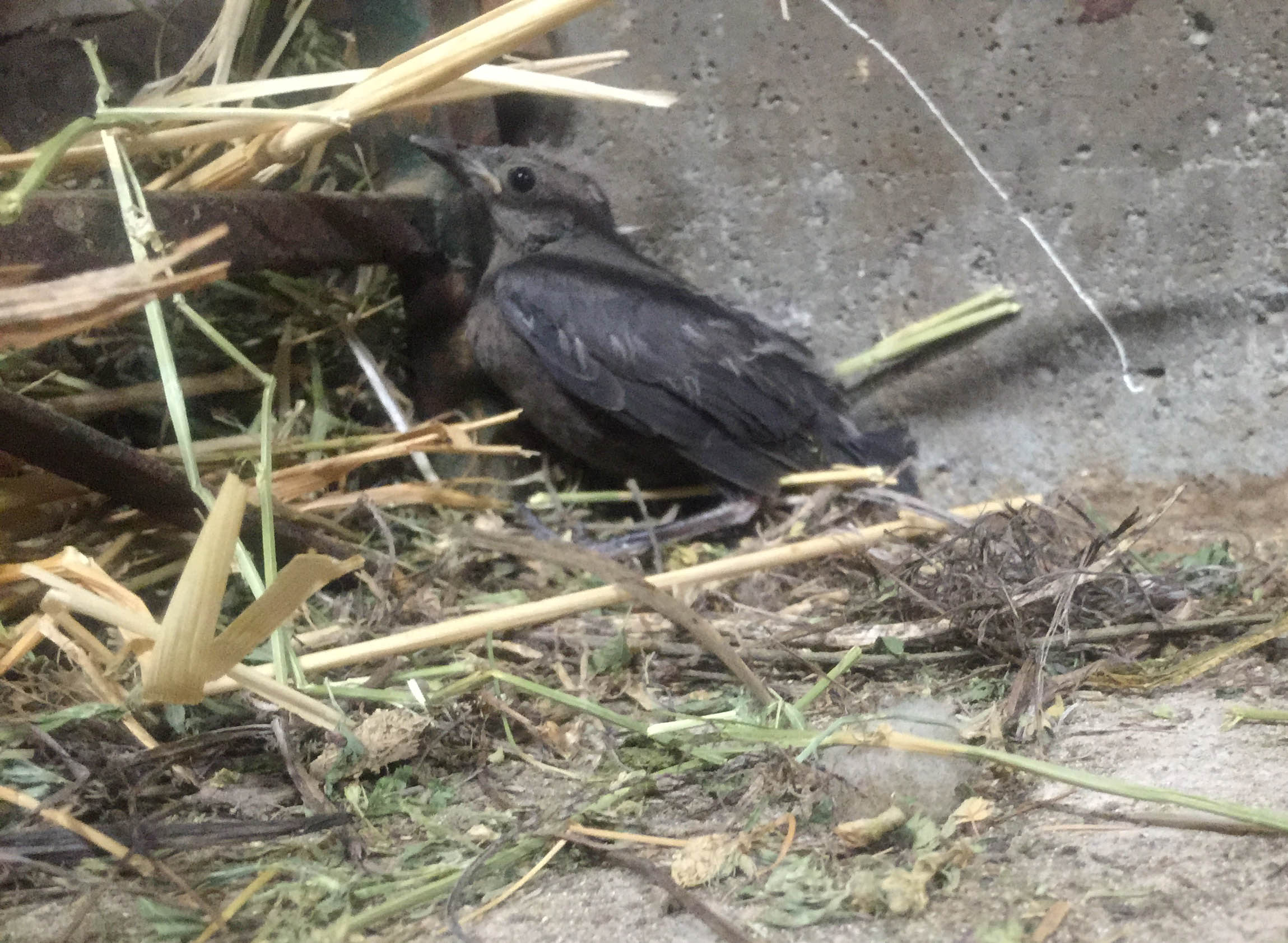 May 12. Out of the nest. There is a day or two when I find babies out of the nest. The parents are frantic. Maggie needs to be restrained because she is truly a varmint dog. She things that anything small and alive is fair game for her.
Now the birds are out of the barn. I don't know if there will be a second crop. Last year I felt as though Baby Bird Season lasted a lot longer.
May 12. Out of the nest. There is a day or two when I find babies out of the nest. The parents are frantic. Maggie needs to be restrained because she is truly a varmint dog. She things that anything small and alive is fair game for her.
Now the birds are out of the barn. I don't know if there will be a second crop. Last year I felt as though Baby Bird Season lasted a lot longer.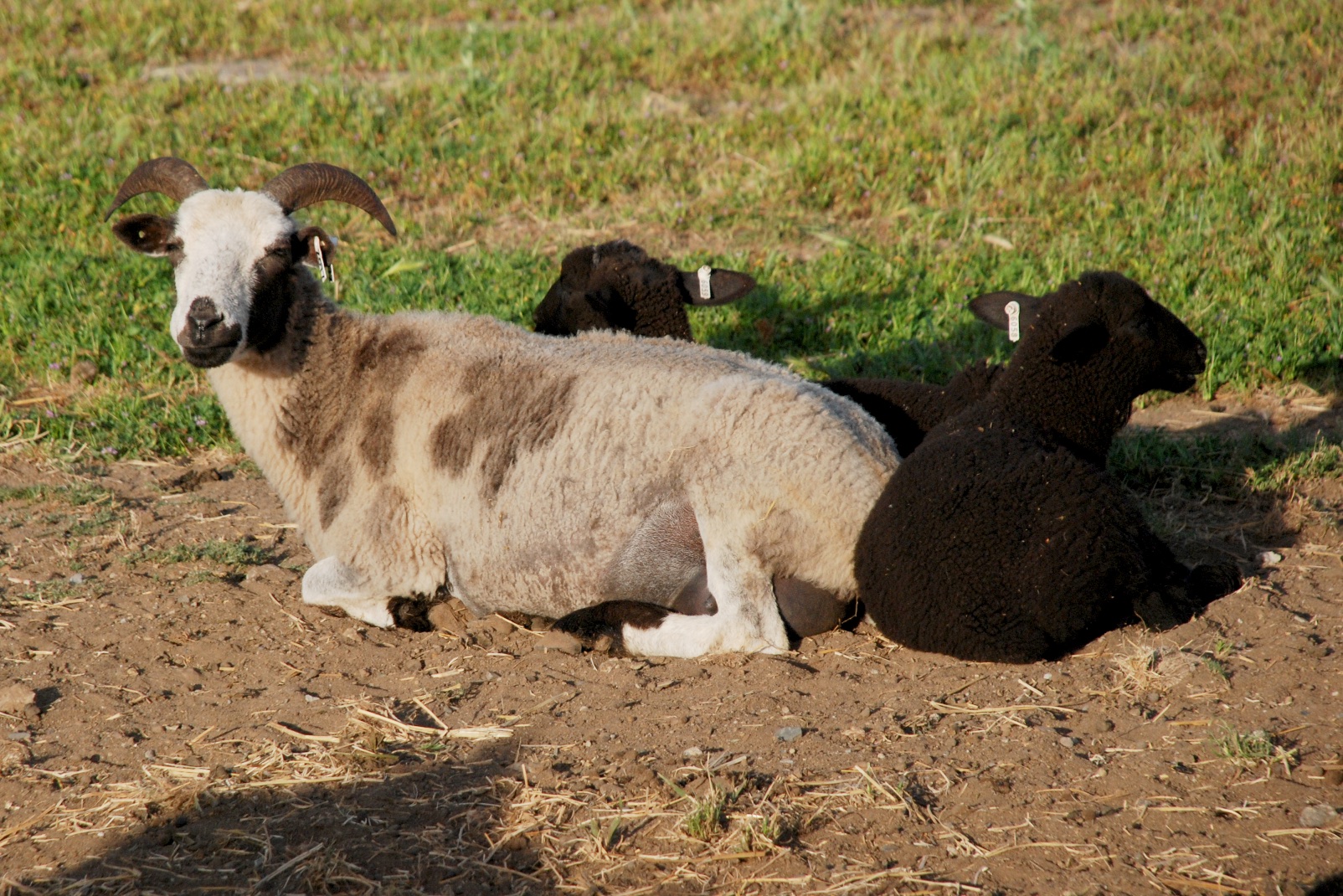 Ginseng and BFL-X lambs.
Ginseng and BFL-X lambs.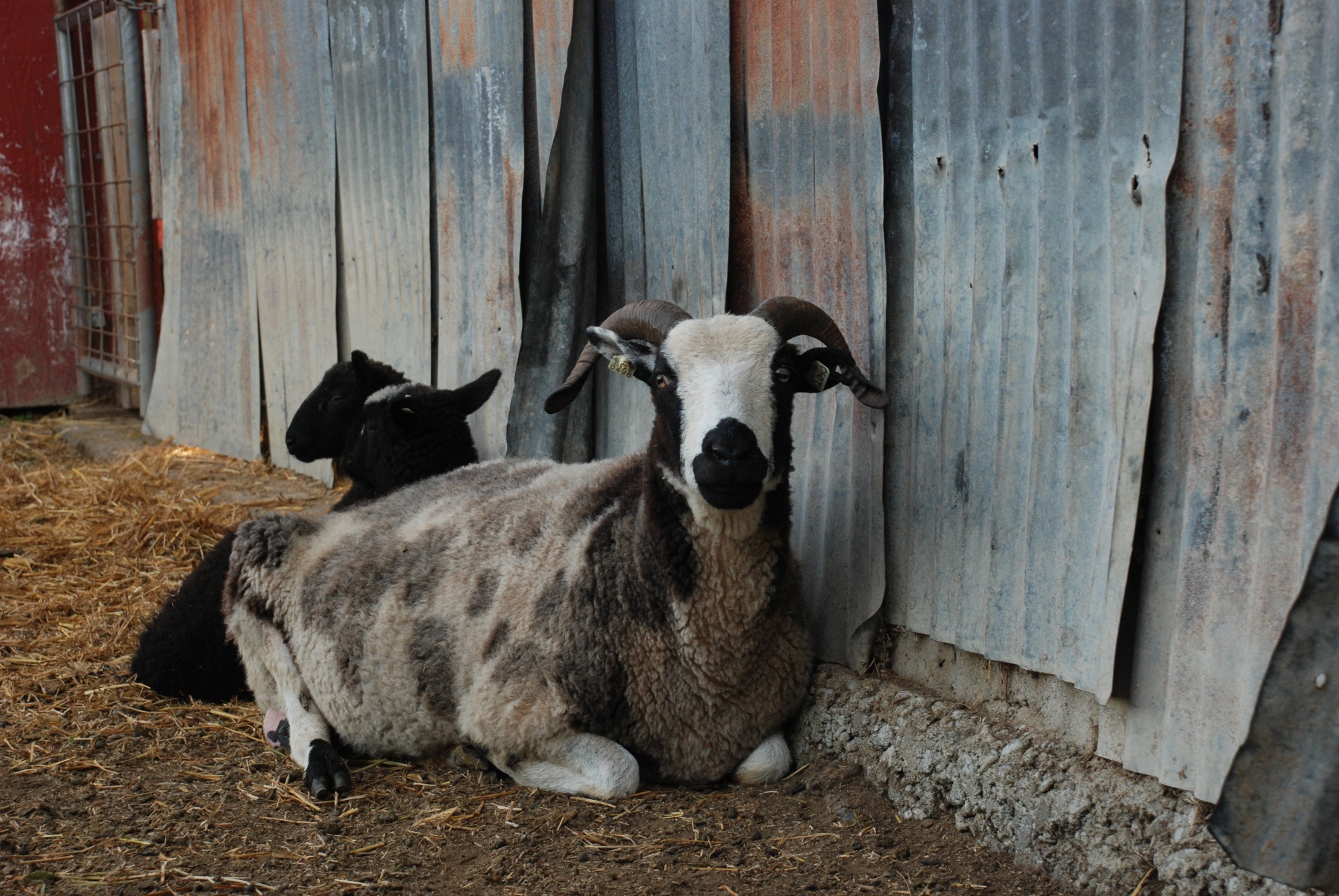 Fandango with lambs.
Fandango with lambs.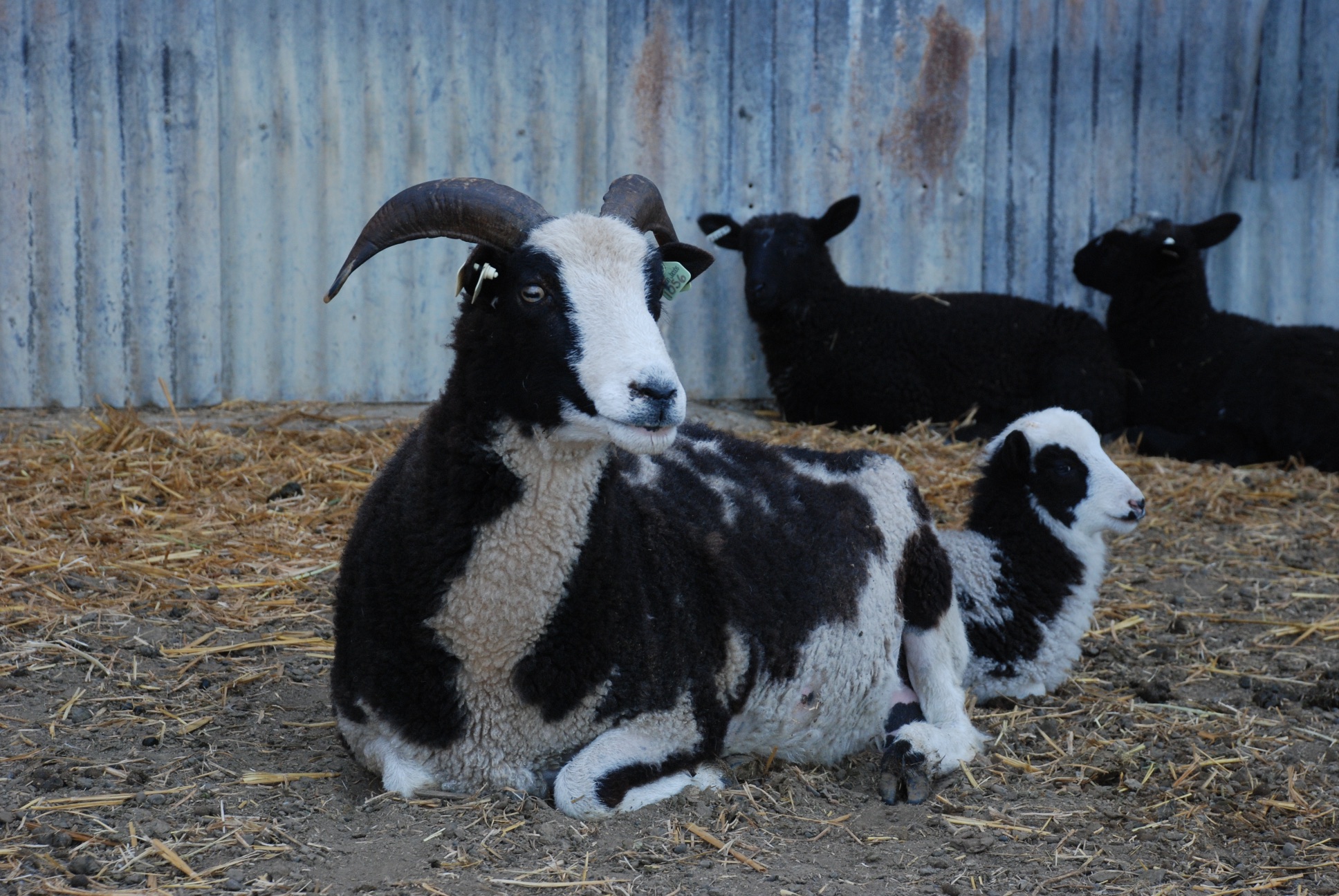 Hot Lips and lamb.
Hot Lips and lamb.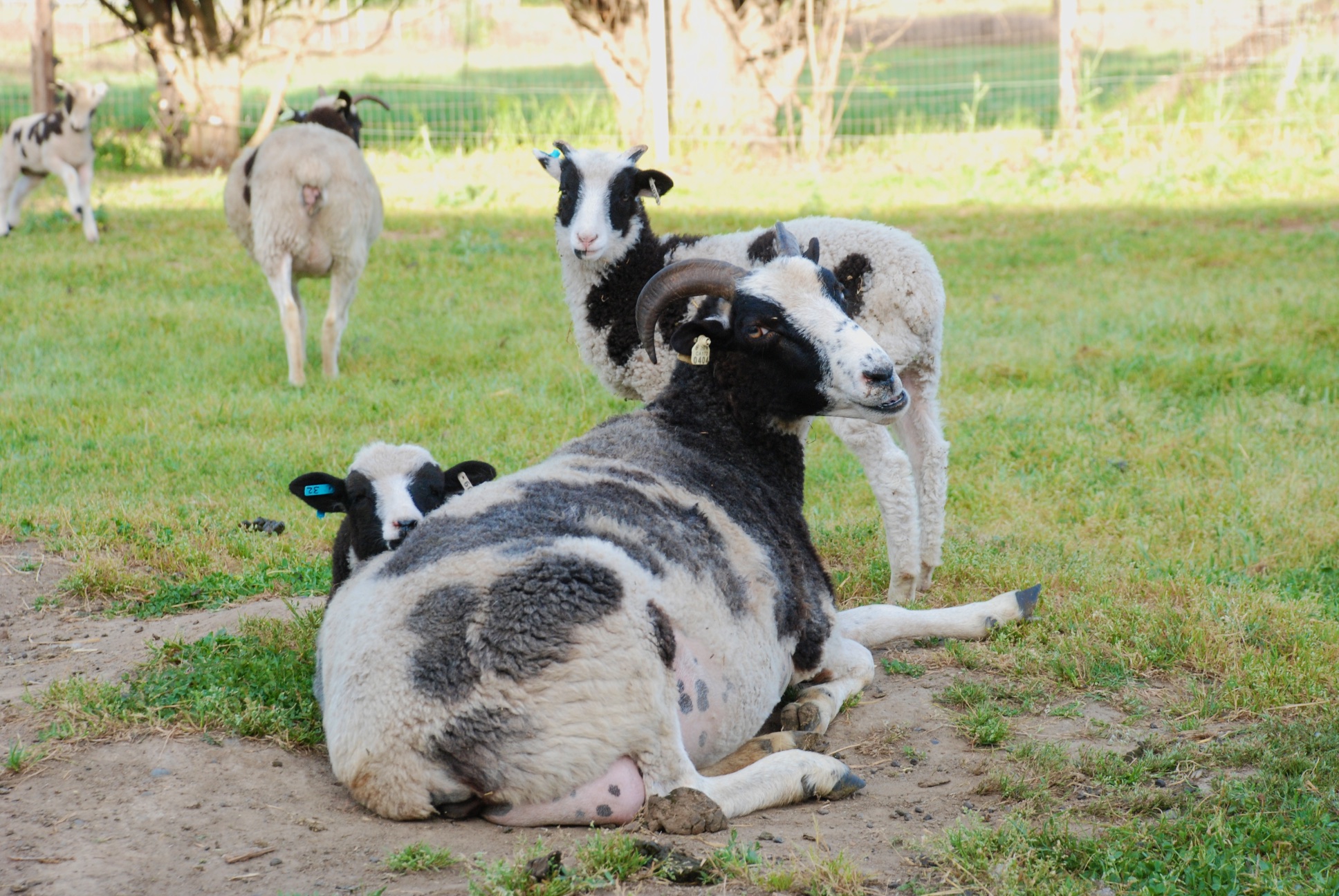 Alexandria and her lambs.
Alexandria and her lambs.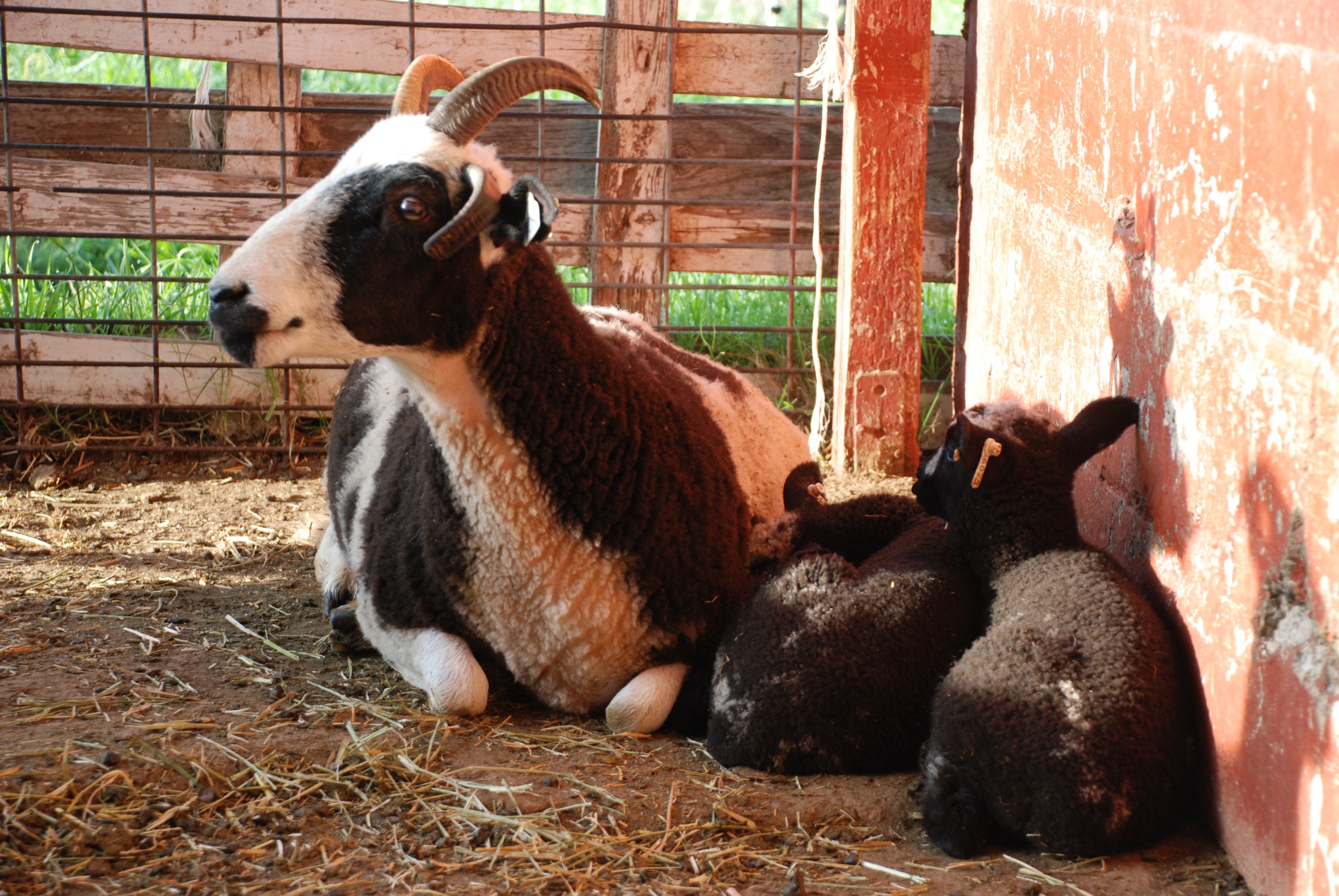 Isabelle with lambs.
Isabelle with lambs.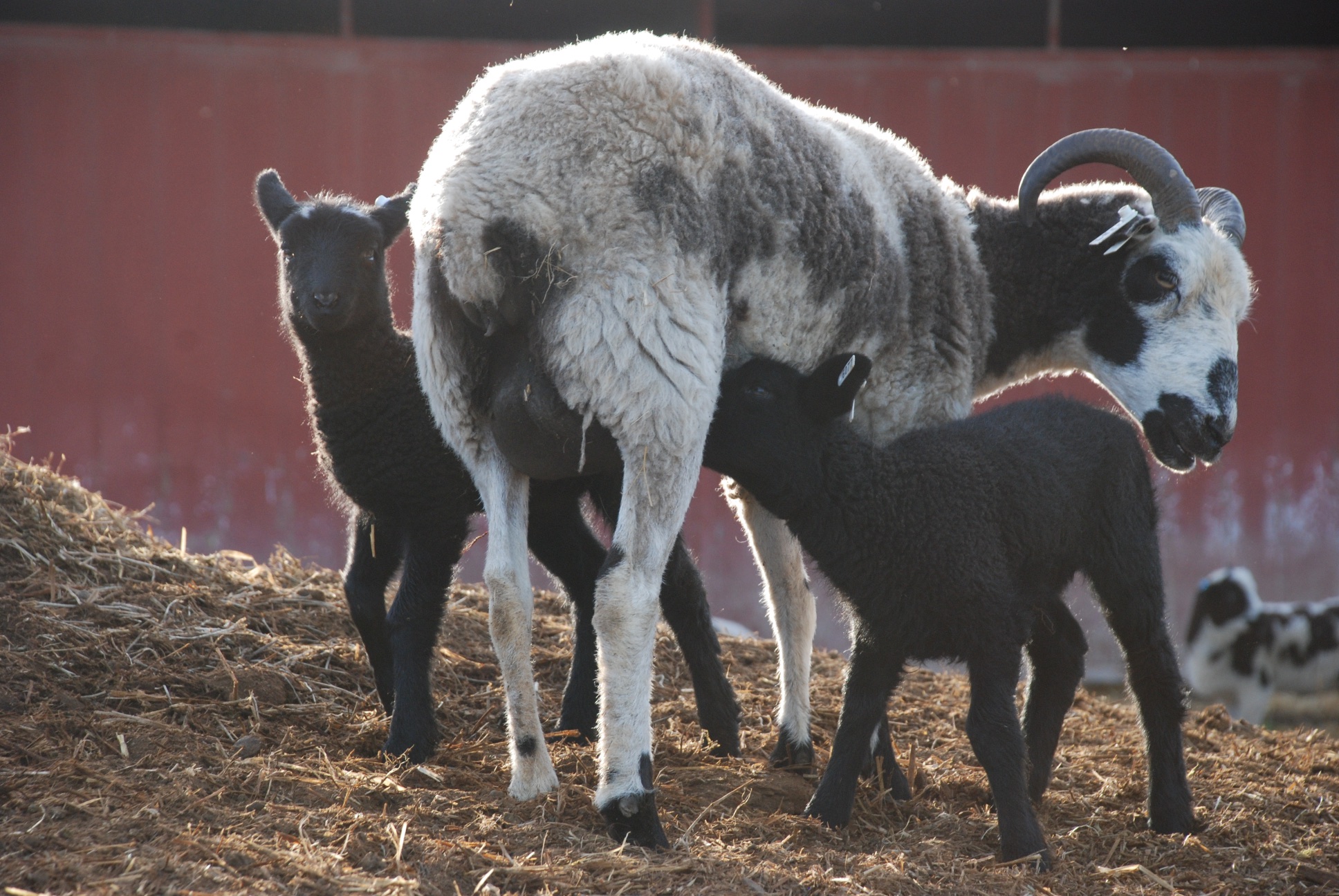 Melinda and lambs.
Melinda and lambs.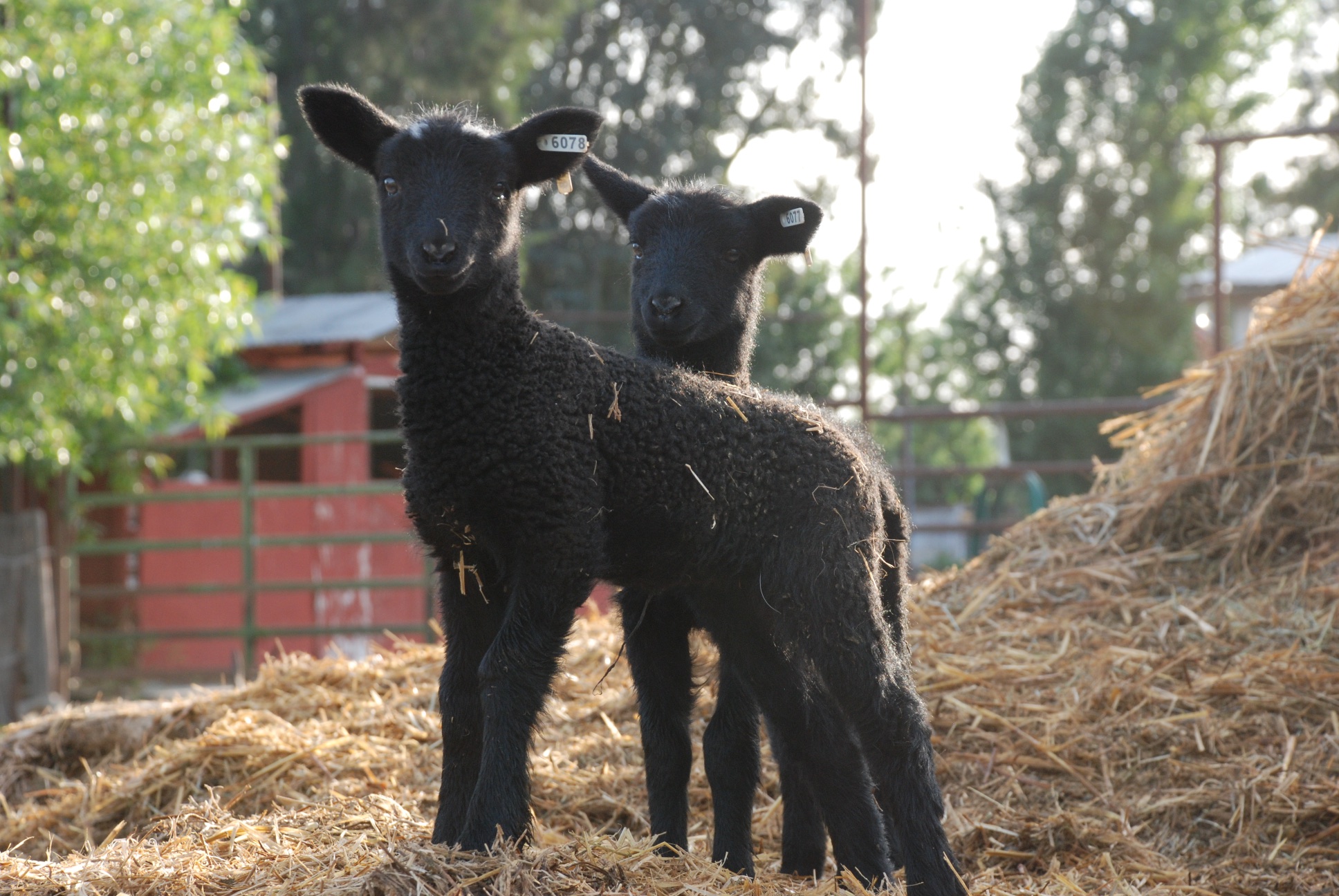 These were the last ones born this year.
These were the last ones born this year.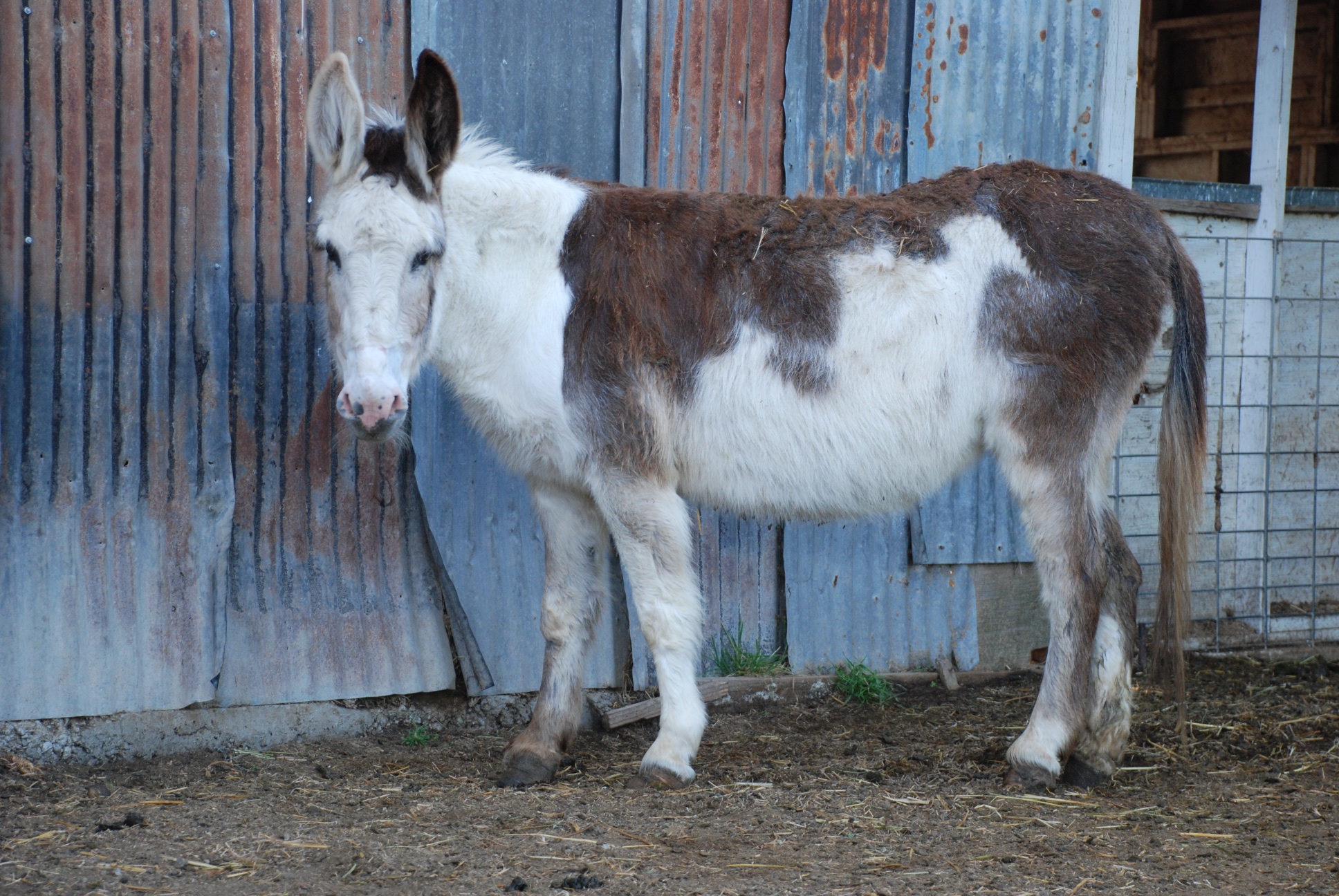 Amaryllis.
Amaryllis.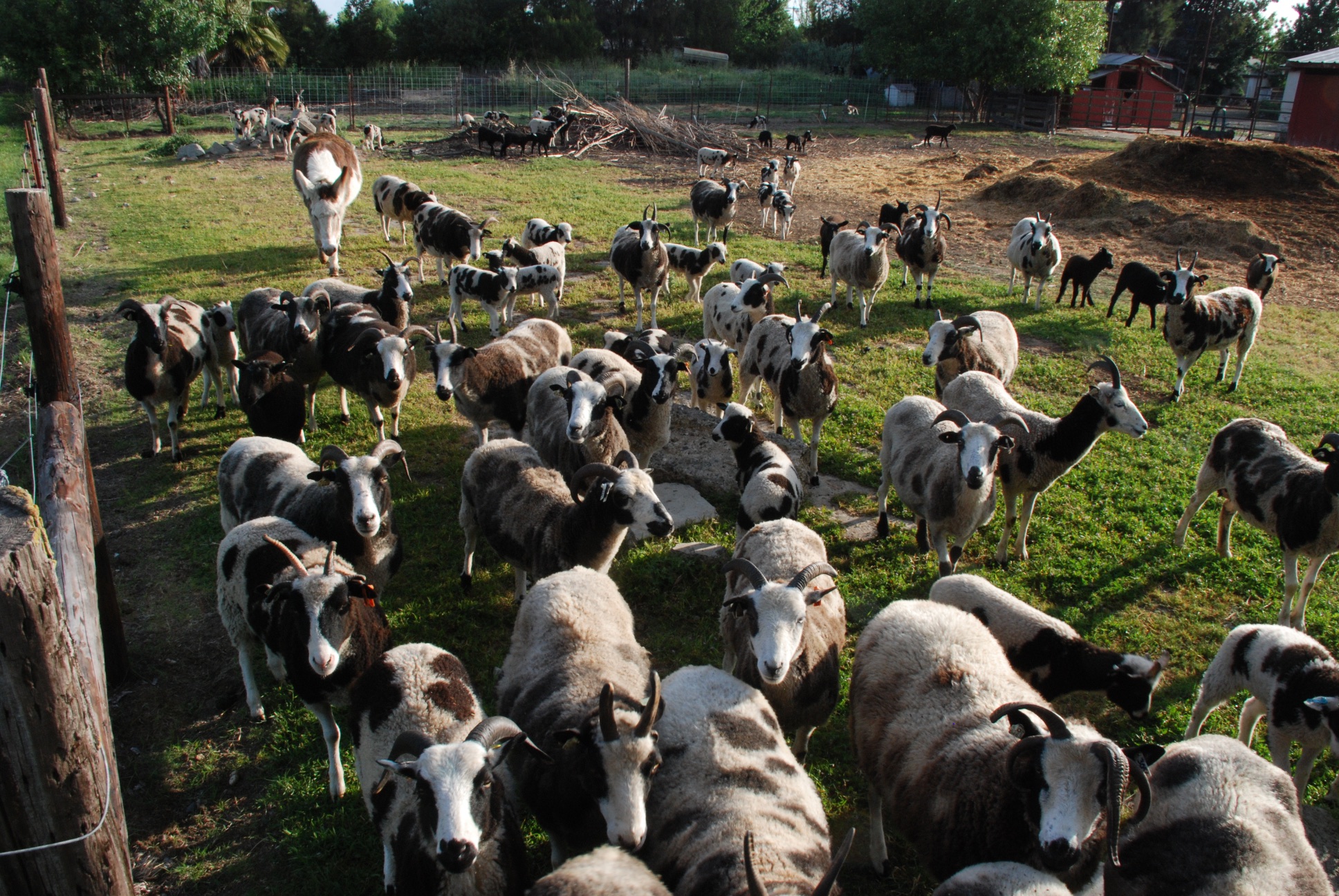 Sheep looking hopeful as I climb back over the gate.
Sheep looking hopeful as I climb back over the gate.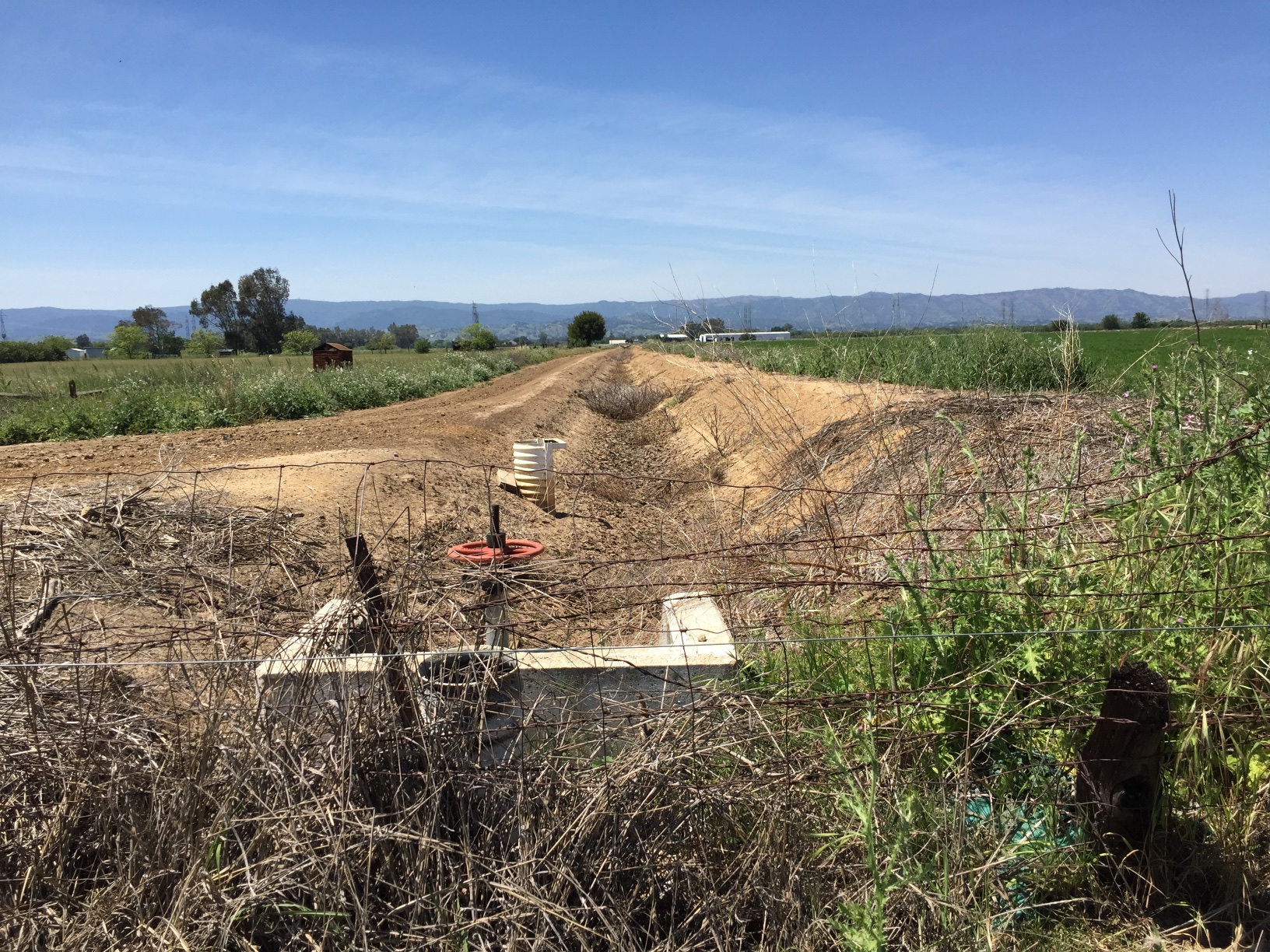 This was taken from standing in the northwest corner of the property and looking west. When SID (Solano Irrigation District) opens the right gate the water comes down that canal, through a gate in the cement structure at the bottom of the photo and...
This was taken from standing in the northwest corner of the property and looking west. When SID (Solano Irrigation District) opens the right gate the water comes down that canal, through a gate in the cement structure at the bottom of the photo and...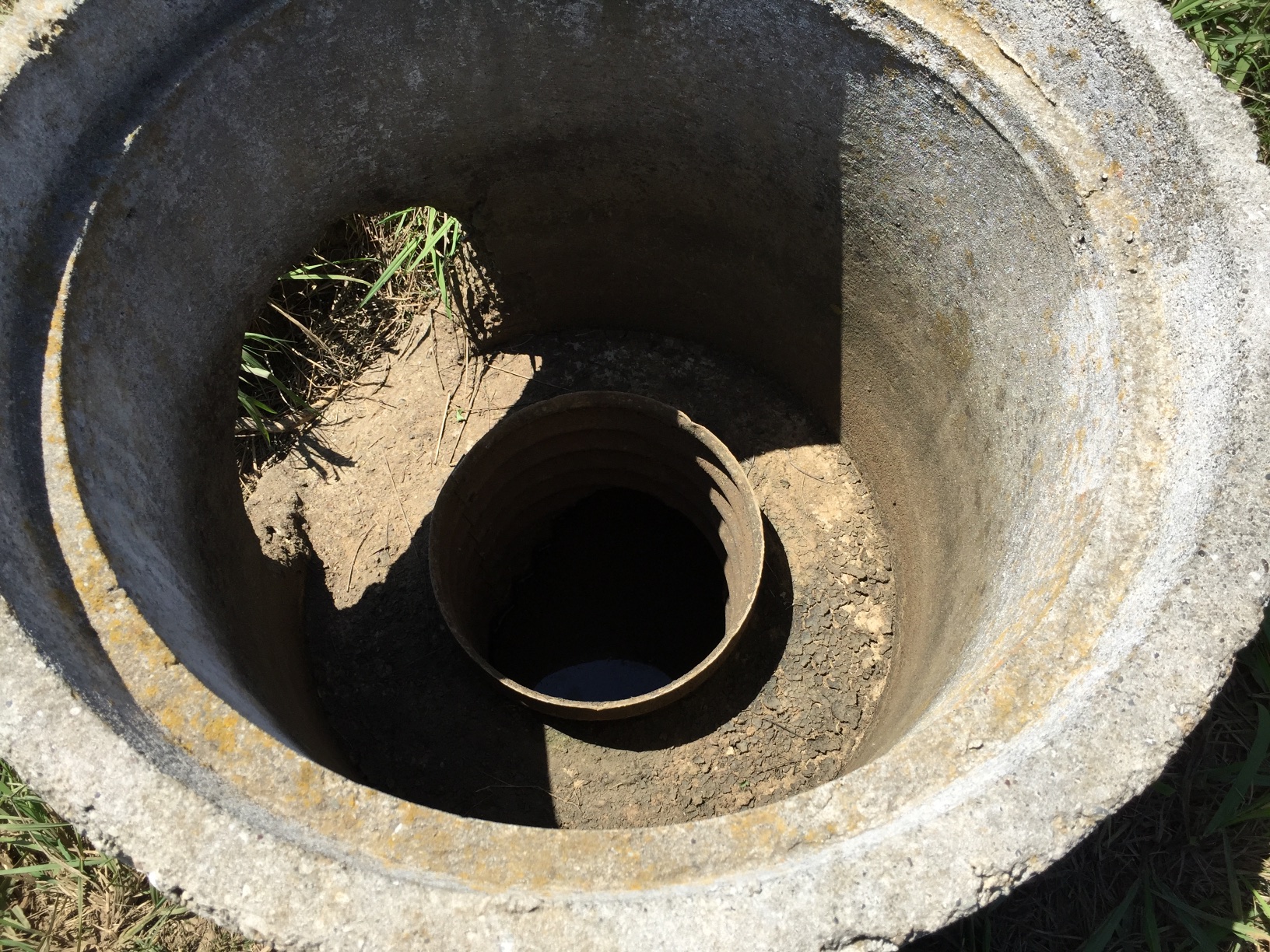 ...comes up through this standpipe. It goes out that hole on the left and...
...comes up through this standpipe. It goes out that hole on the left and...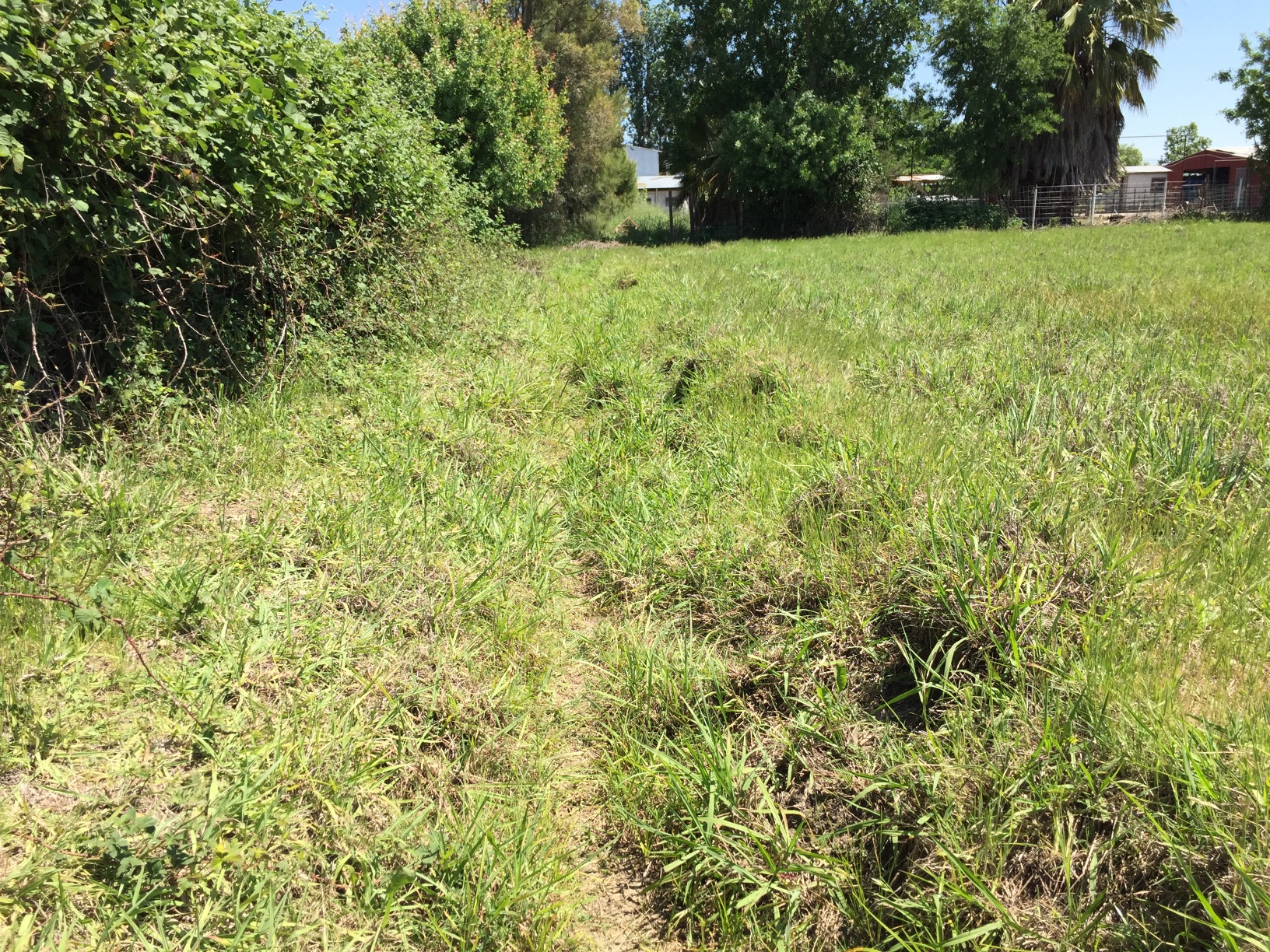 into this ditch. At the end of the ditch it turns south and goes into the other part of the pasture. Later in the year this ditch will require weed-wacking for the whole length to allow the water to flow. This time I didn't need to do that.
into this ditch. At the end of the ditch it turns south and goes into the other part of the pasture. Later in the year this ditch will require weed-wacking for the whole length to allow the water to flow. This time I didn't need to do that.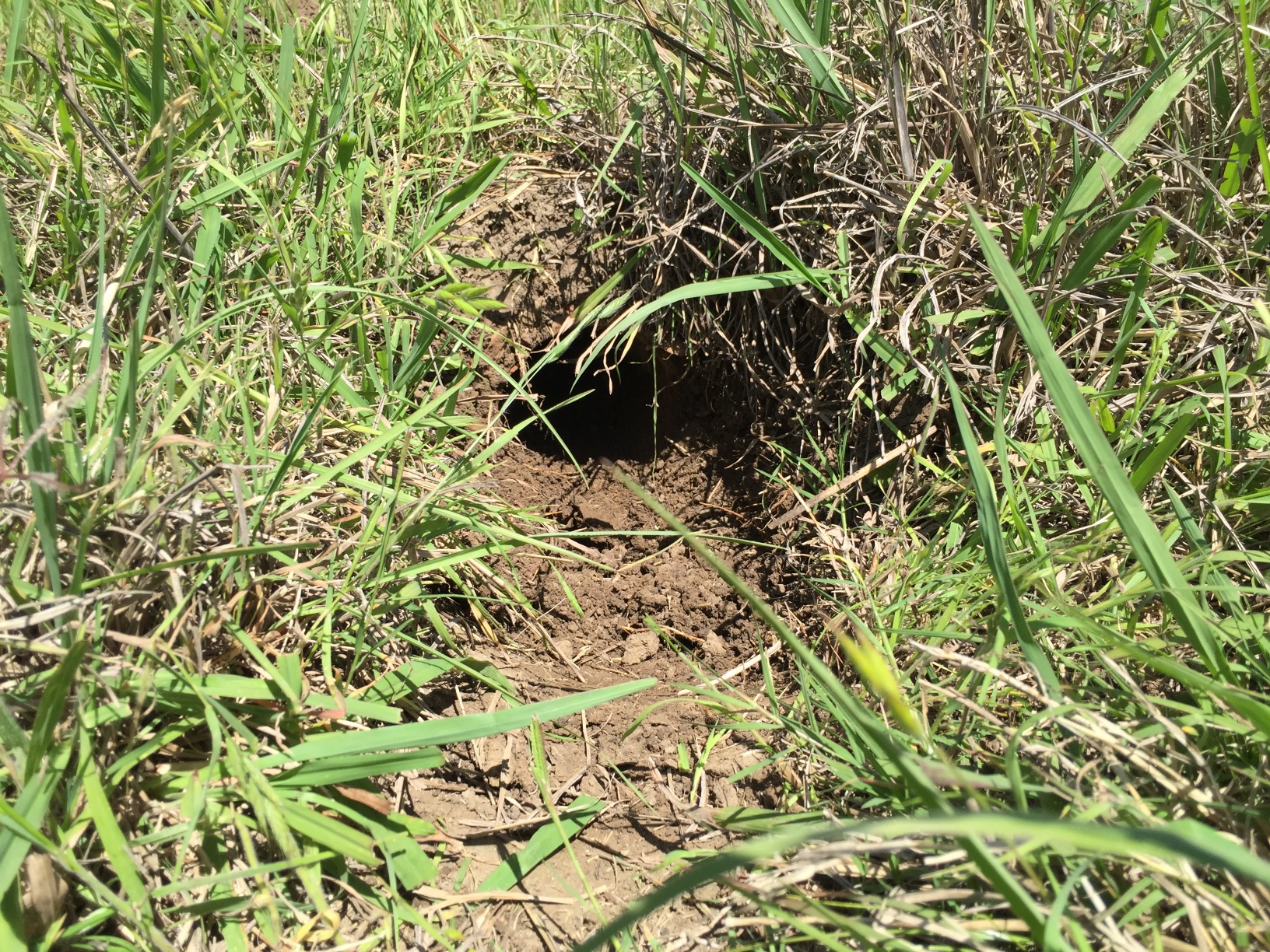 This part of the ditch has old pipes that take the water under the burm. I can find two of the three that used to be functional.
This part of the ditch has old pipes that take the water under the burm. I can find two of the three that used to be functional.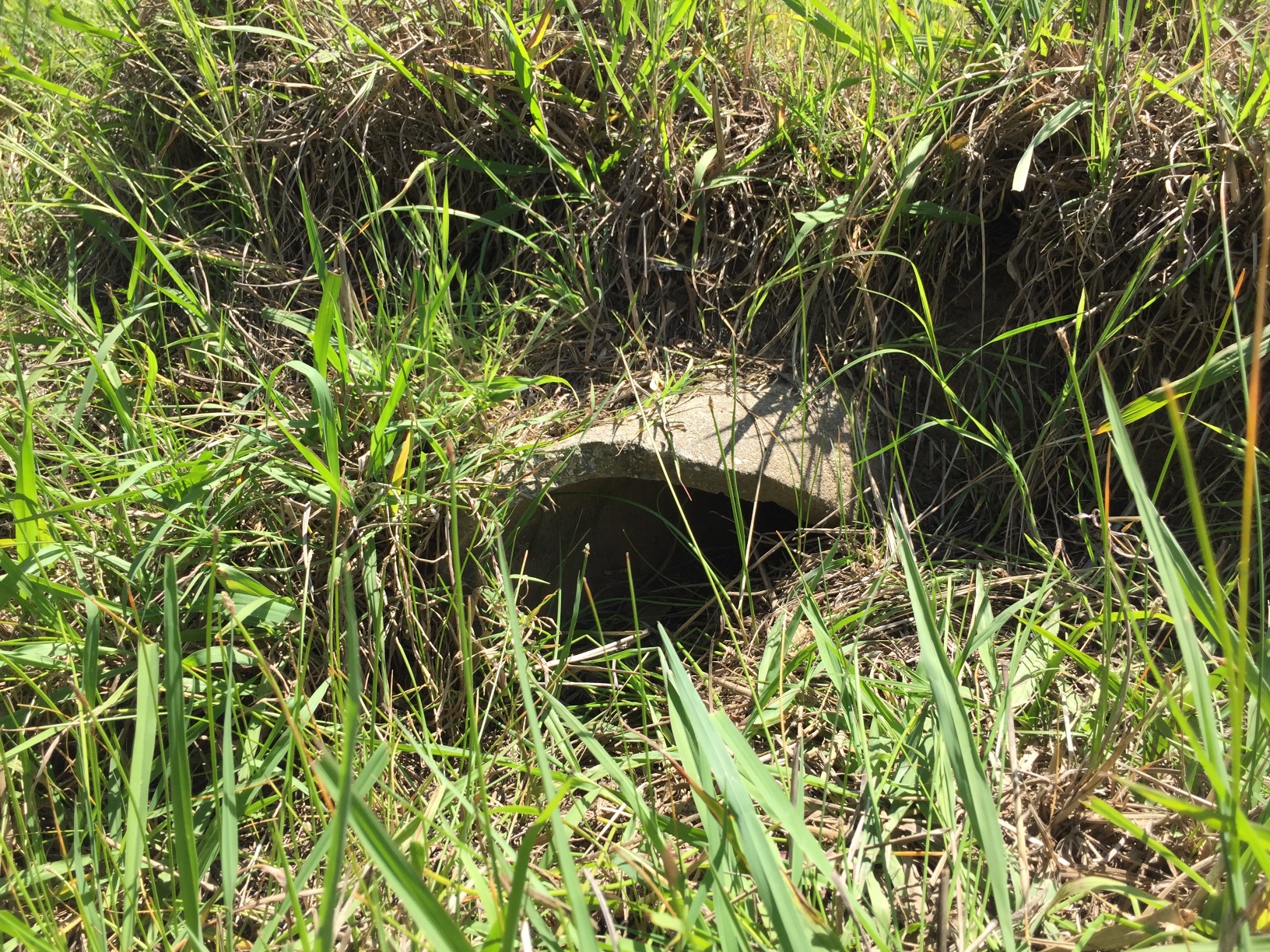 The first job is to dig out around both ends of these.
The first job is to dig out around both ends of these.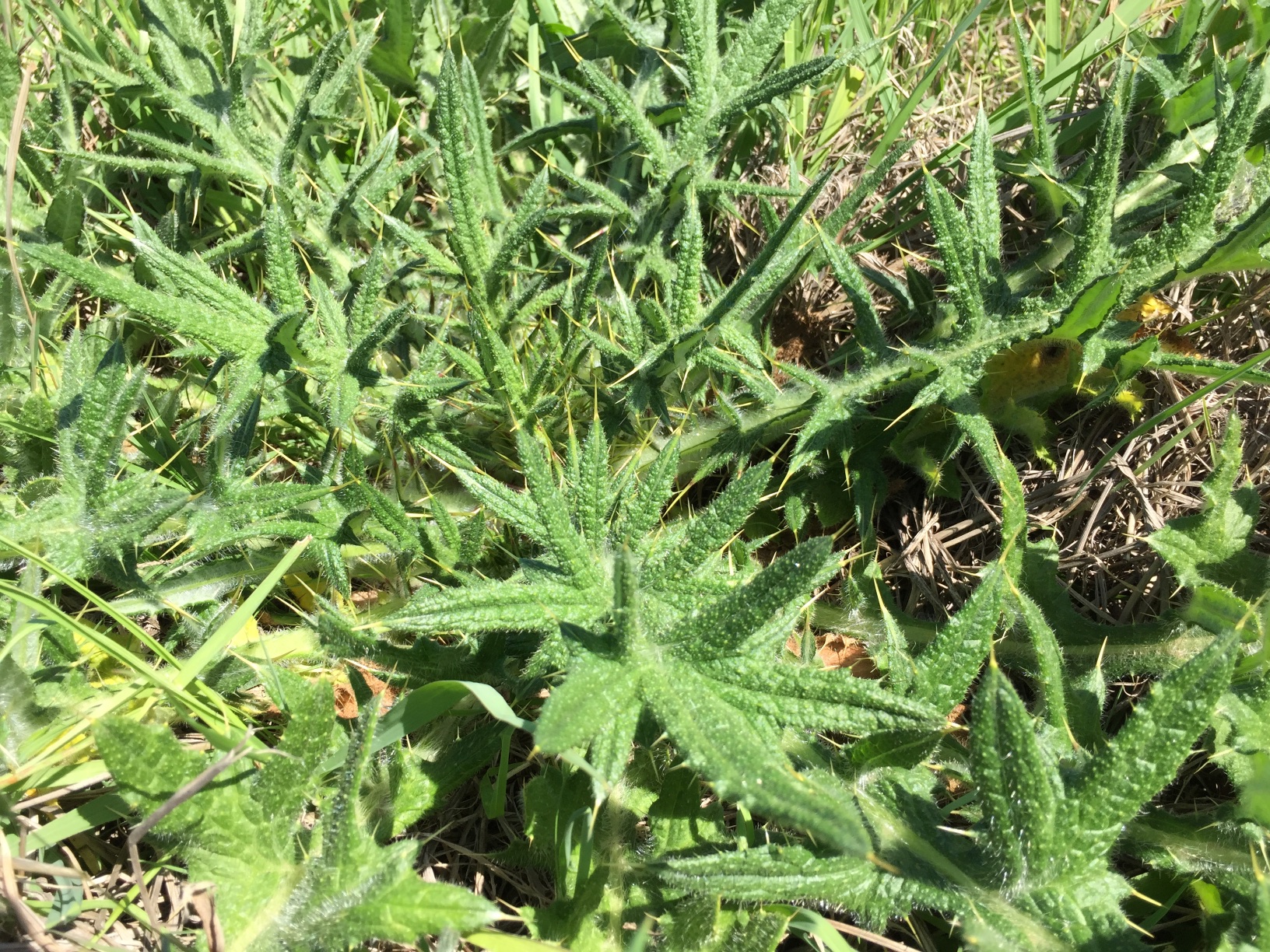 As I walk through the pasture I find thistles that need to be chopped.
As I walk through the pasture I find thistles that need to be chopped.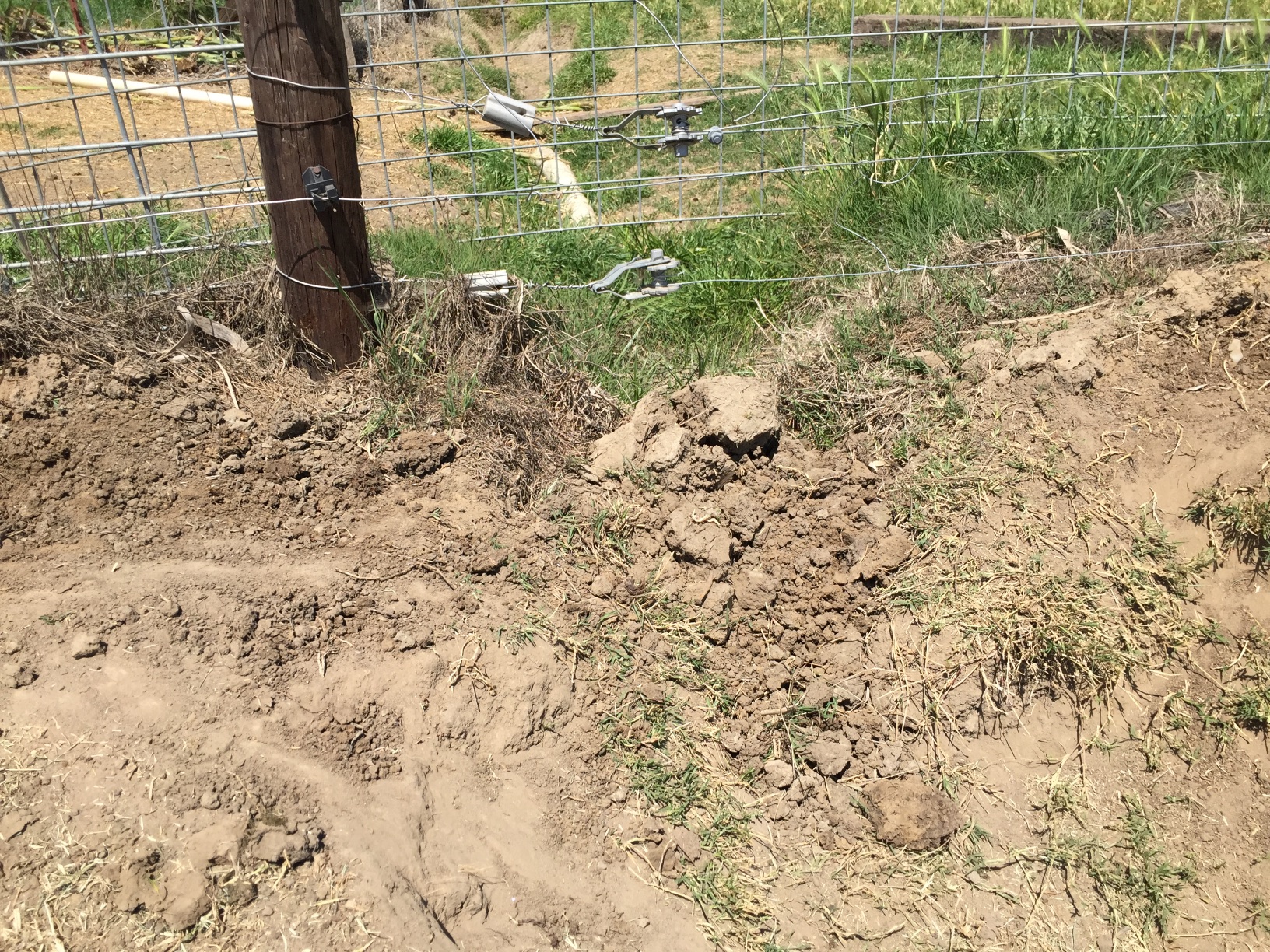 The rest of the pasture doesn't have those pipes, but instead has cut-outs or places where the burm is cut away to allow the water to flow from the ditch into the pasture. I didn't get photos of those. This photo is a cut-out (under the fence) that I had to fill in because it was where we had cut through the burm to allow water flow INTO the ditch in the winter to help drain the rainwater that was all around the barn.
The rest of the pasture doesn't have those pipes, but instead has cut-outs or places where the burm is cut away to allow the water to flow from the ditch into the pasture. I didn't get photos of those. This photo is a cut-out (under the fence) that I had to fill in because it was where we had cut through the burm to allow water flow INTO the ditch in the winter to help drain the rainwater that was all around the barn. 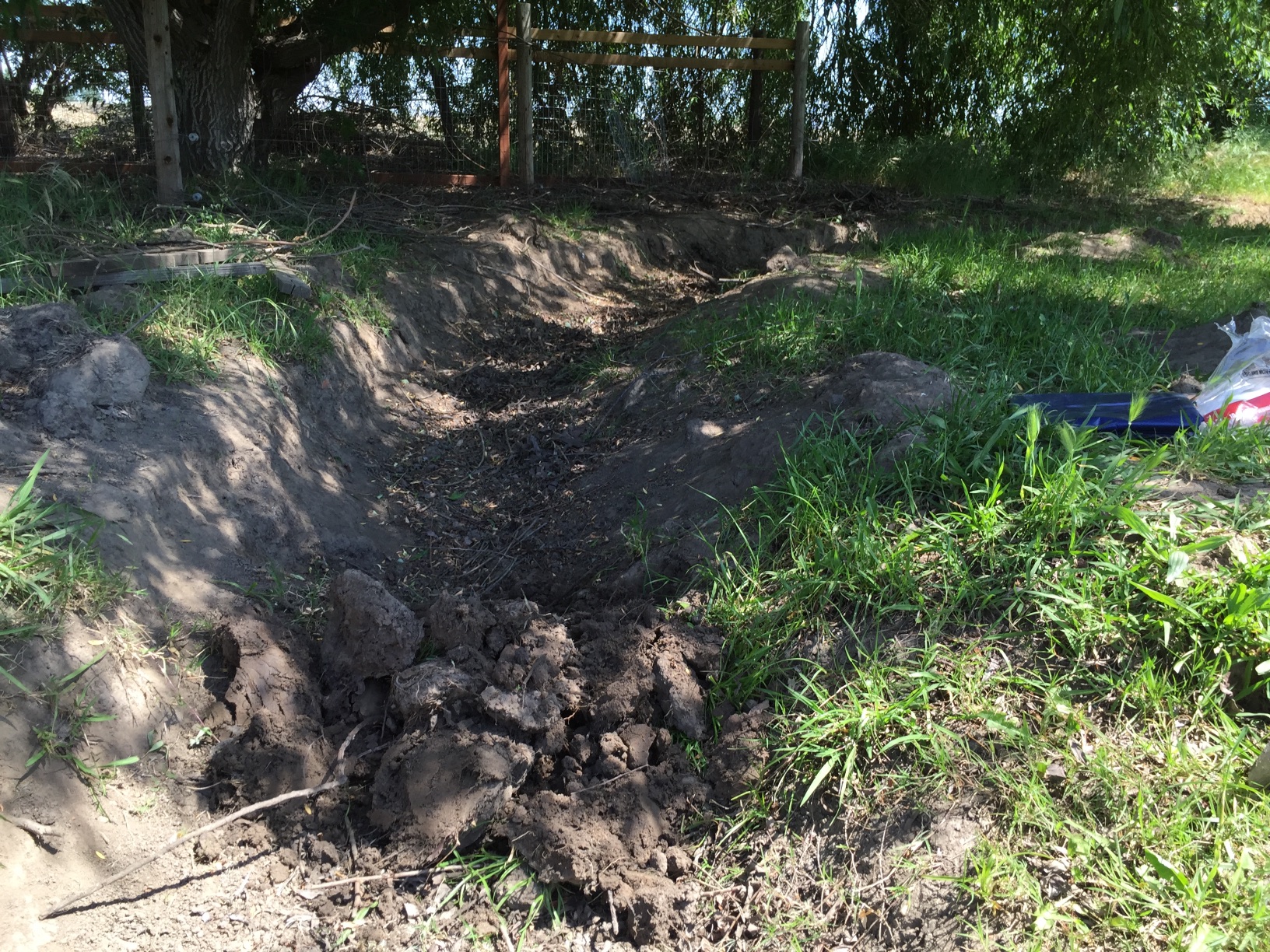 Here is the place at the northeast corner of the pasture where I have to put a tarp to keep the water backed up in the ditch. After this point the ditch turns south and drains at the southeast corner of the property.
Here is the place at the northeast corner of the pasture where I have to put a tarp to keep the water backed up in the ditch. After this point the ditch turns south and drains at the southeast corner of the property.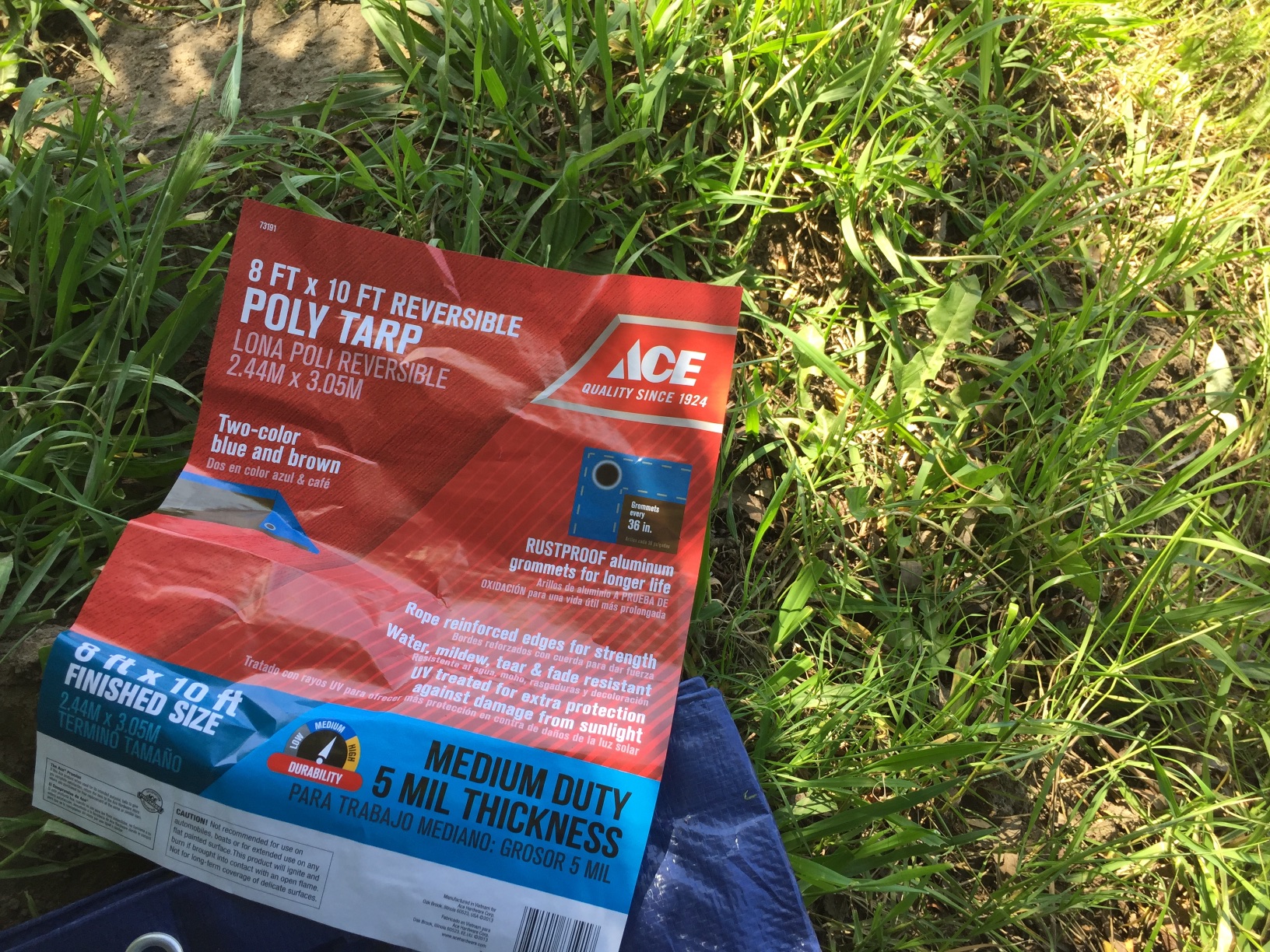 I can never remember what size tarp to get. I bought 2 sizes and took this photo to remind myself that this one is just fine.
I can never remember what size tarp to get. I bought 2 sizes and took this photo to remind myself that this one is just fine.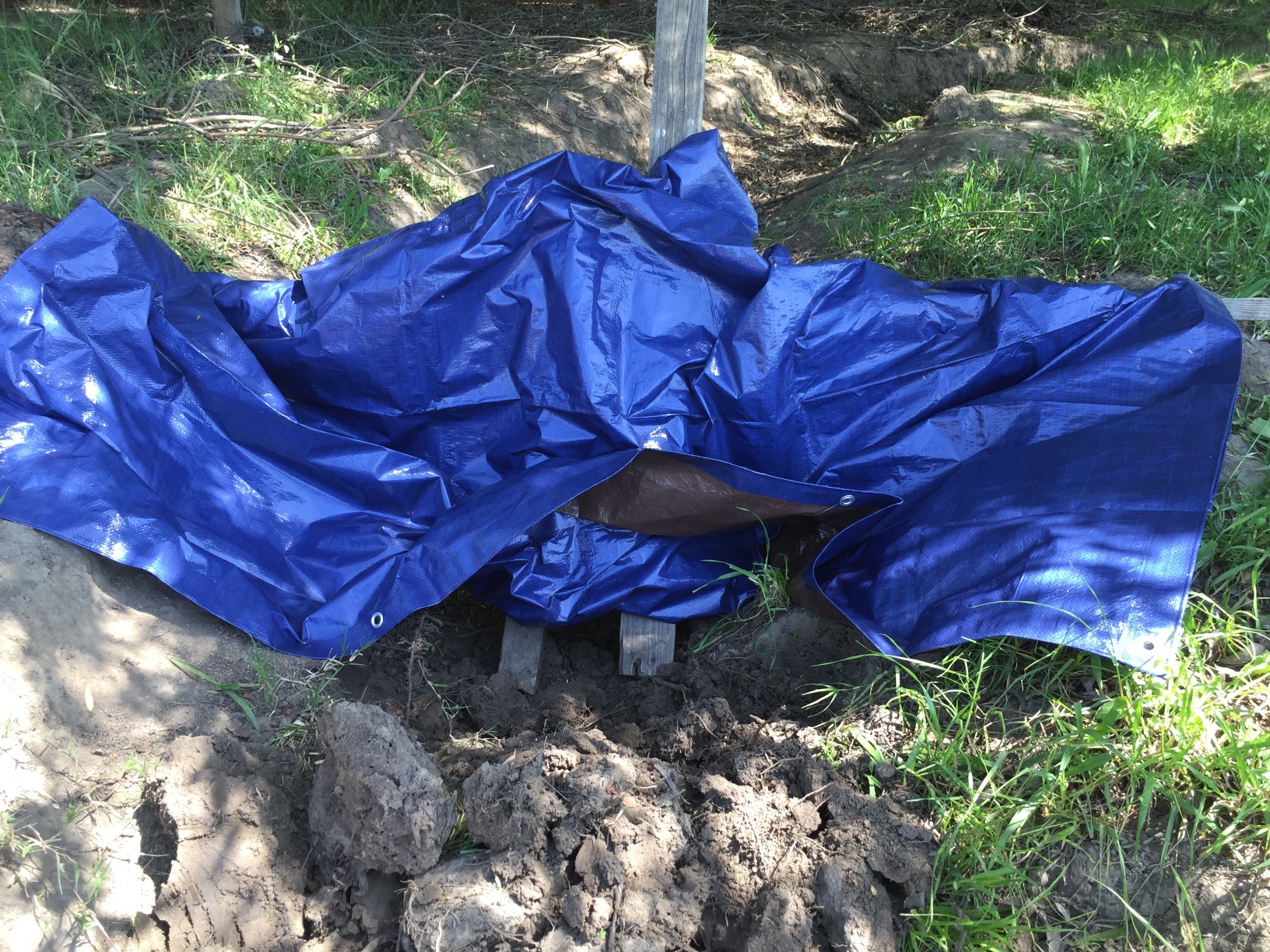 The idea is to set the tarp so that the edges are buried in dirt and those boards behind will keep the water from pushing the tarp down flat. I did this twice.
The idea is to set the tarp so that the edges are buried in dirt and those boards behind will keep the water from pushing the tarp down flat. I did this twice. 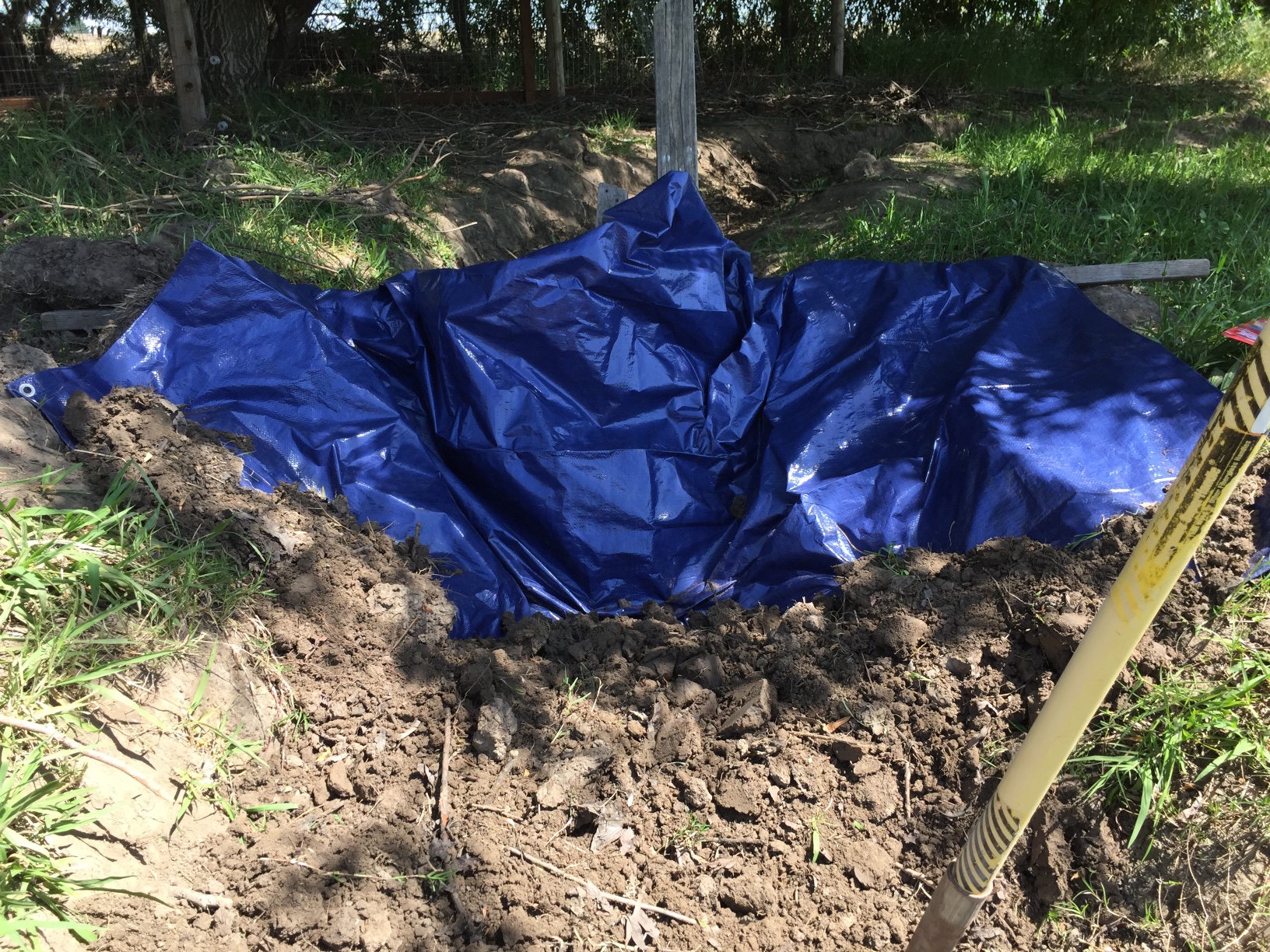 The first time the dirt that holds the tarp down on the bottom was too high. That means when I released the tarp at the end of irrigating there would still be a dam. I have a hard enough time getting the ditch to empty that I don't need to impede it more.
The first time the dirt that holds the tarp down on the bottom was too high. That means when I released the tarp at the end of irrigating there would still be a dam. I have a hard enough time getting the ditch to empty that I don't need to impede it more.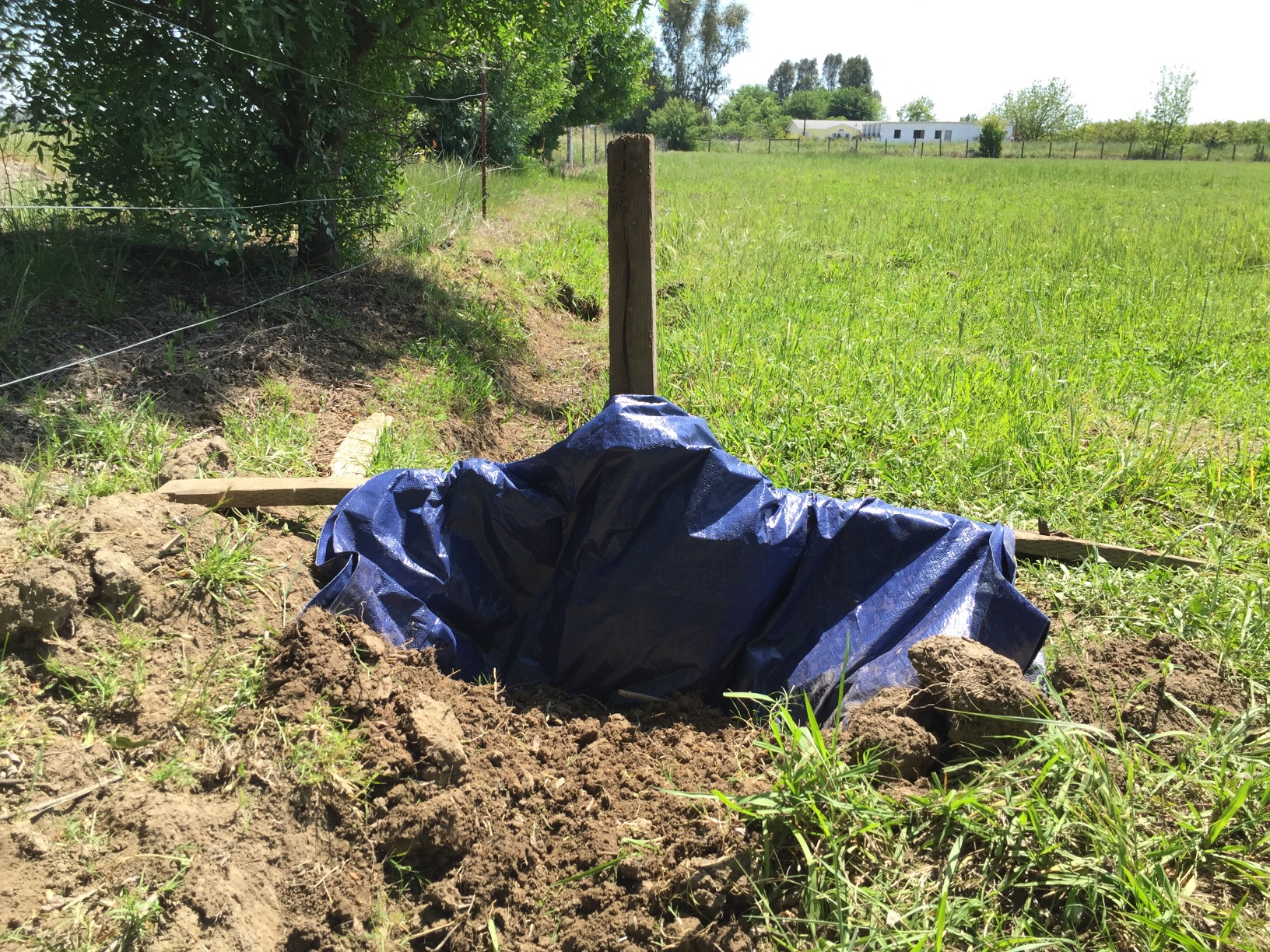 This is a second tarp that I set just around the corner in the ditch that goes south. I shouldn't have to do this, but due to gopher holes, tree roots, and maybe my lack of irrigator skills it seems that one is never enough. Two tarps hold the water back better. Or at least one is a back-up for the other.
This is a second tarp that I set just around the corner in the ditch that goes south. I shouldn't have to do this, but due to gopher holes, tree roots, and maybe my lack of irrigator skills it seems that one is never enough. Two tarps hold the water back better. Or at least one is a back-up for the other.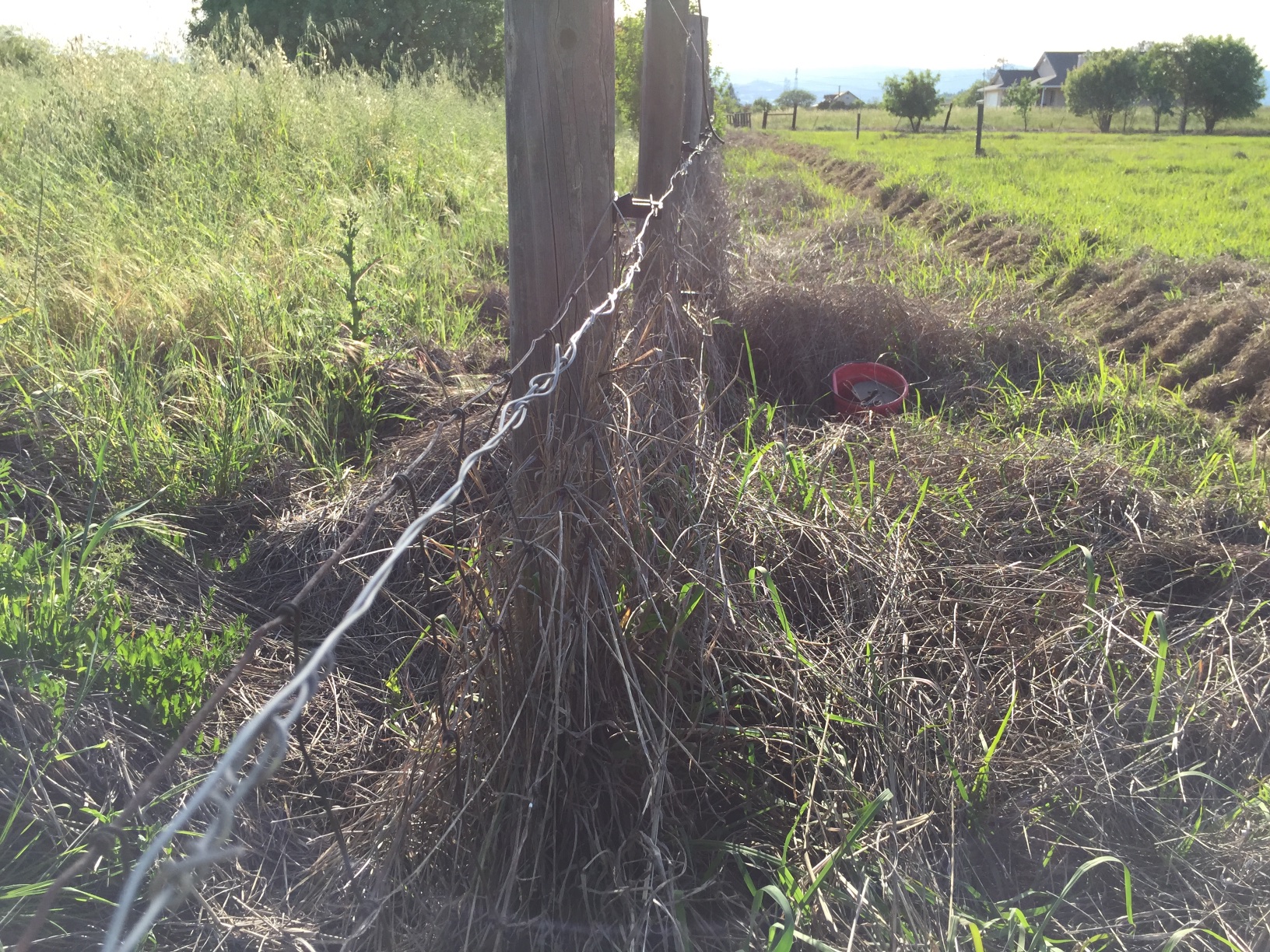 While I was working in the pasture I saw that a couple of lambs had their heads through the electric net fence and didn't seem to care. That prompted a search for the problem with the electric fence. I found a broken wire at the south end. I got new wire and fixed it but then found several more places where I had joined new wire to old. The more times you do that the less conductivity there is. So I took out a long stretch of the old pieced-together wire and replaced it. Low and behold, my tester showed higher strength than it has in years!
While I was working in the pasture I saw that a couple of lambs had their heads through the electric net fence and didn't seem to care. That prompted a search for the problem with the electric fence. I found a broken wire at the south end. I got new wire and fixed it but then found several more places where I had joined new wire to old. The more times you do that the less conductivity there is. So I took out a long stretch of the old pieced-together wire and replaced it. Low and behold, my tester showed higher strength than it has in years!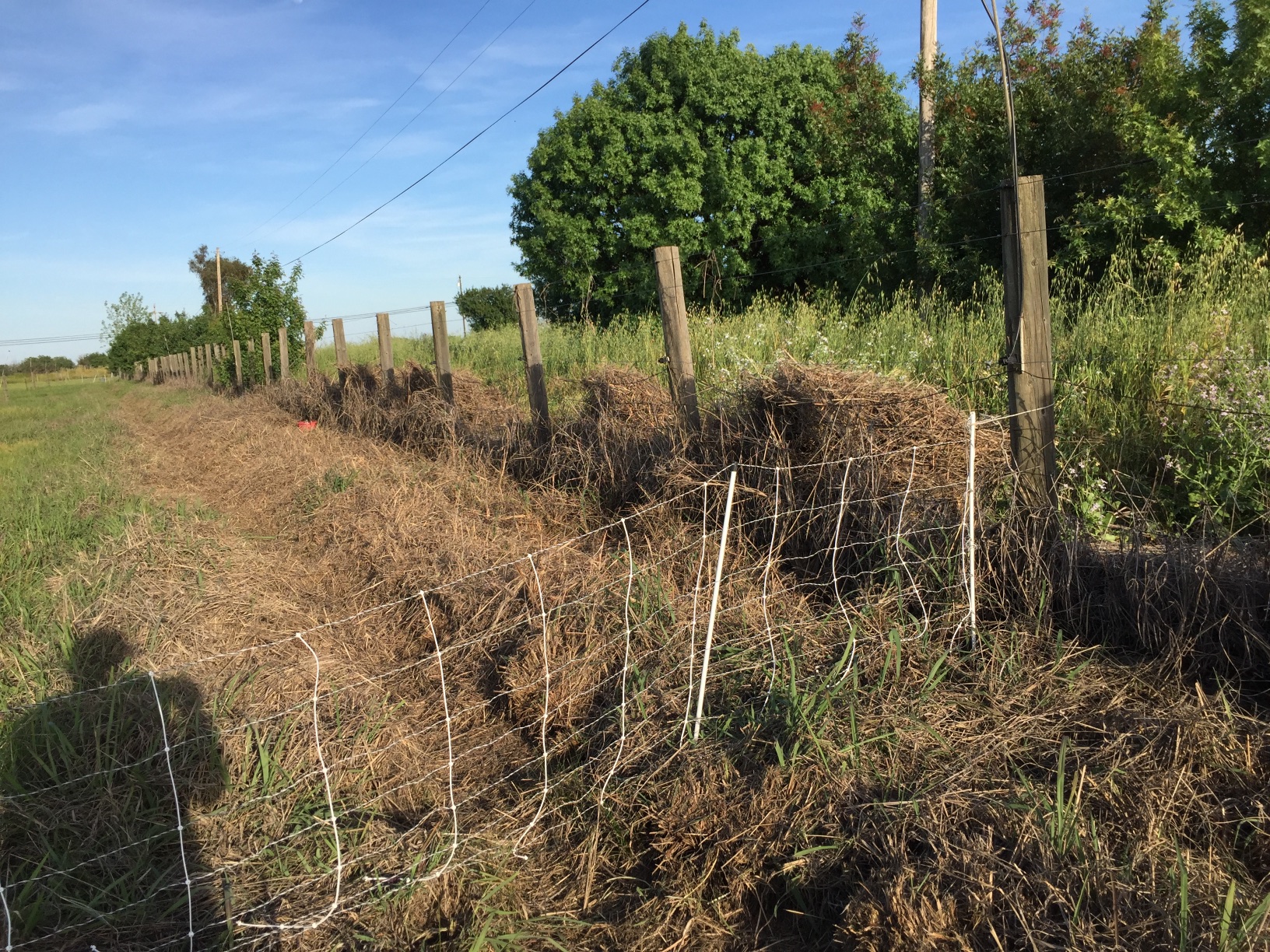 One thing leads to another. While I was at that end of the pasture I was bothered again by the old dallisgrass that effectively mulches my pasture. It's one thing to mulch a garden to keep weeds from growing, but mulching a pasture is counter-productive. If you search dallisgrass in this blog you'll find many attempts to deal with this. This time I was simply knocking it off the electric wire that is about a foot and a half up on inside this fenceline. It broke and pulled away so easily at this time (this is last year's dry grass) that I started pulling it away by the armfuls. I didn't have any tools or even gloves, but threw mounds of it over the fence--hey, I'll mulch the outside of the fence and maybe keep the growth down there. That felt somewhat productive although it may not be useful at all. But at least I could see a difference in the before and after.
One thing leads to another. While I was at that end of the pasture I was bothered again by the old dallisgrass that effectively mulches my pasture. It's one thing to mulch a garden to keep weeds from growing, but mulching a pasture is counter-productive. If you search dallisgrass in this blog you'll find many attempts to deal with this. This time I was simply knocking it off the electric wire that is about a foot and a half up on inside this fenceline. It broke and pulled away so easily at this time (this is last year's dry grass) that I started pulling it away by the armfuls. I didn't have any tools or even gloves, but threw mounds of it over the fence--hey, I'll mulch the outside of the fence and maybe keep the growth down there. That felt somewhat productive although it may not be useful at all. But at least I could see a difference in the before and after.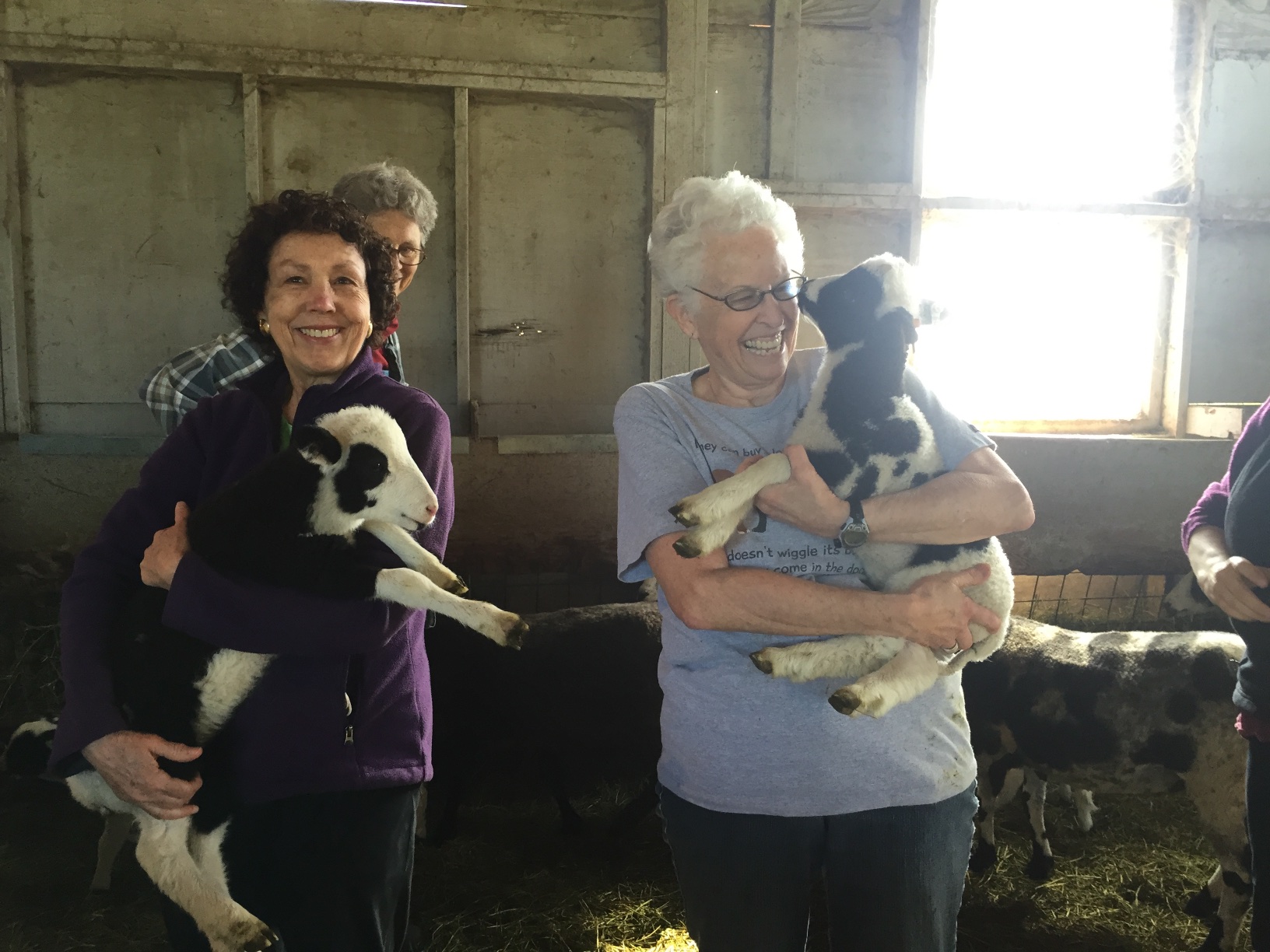 We caught all the lambs to check for number of horns and split eyelids (a trait that is sometimes seen in 4-horn lambs).
We caught all the lambs to check for number of horns and split eyelids (a trait that is sometimes seen in 4-horn lambs). 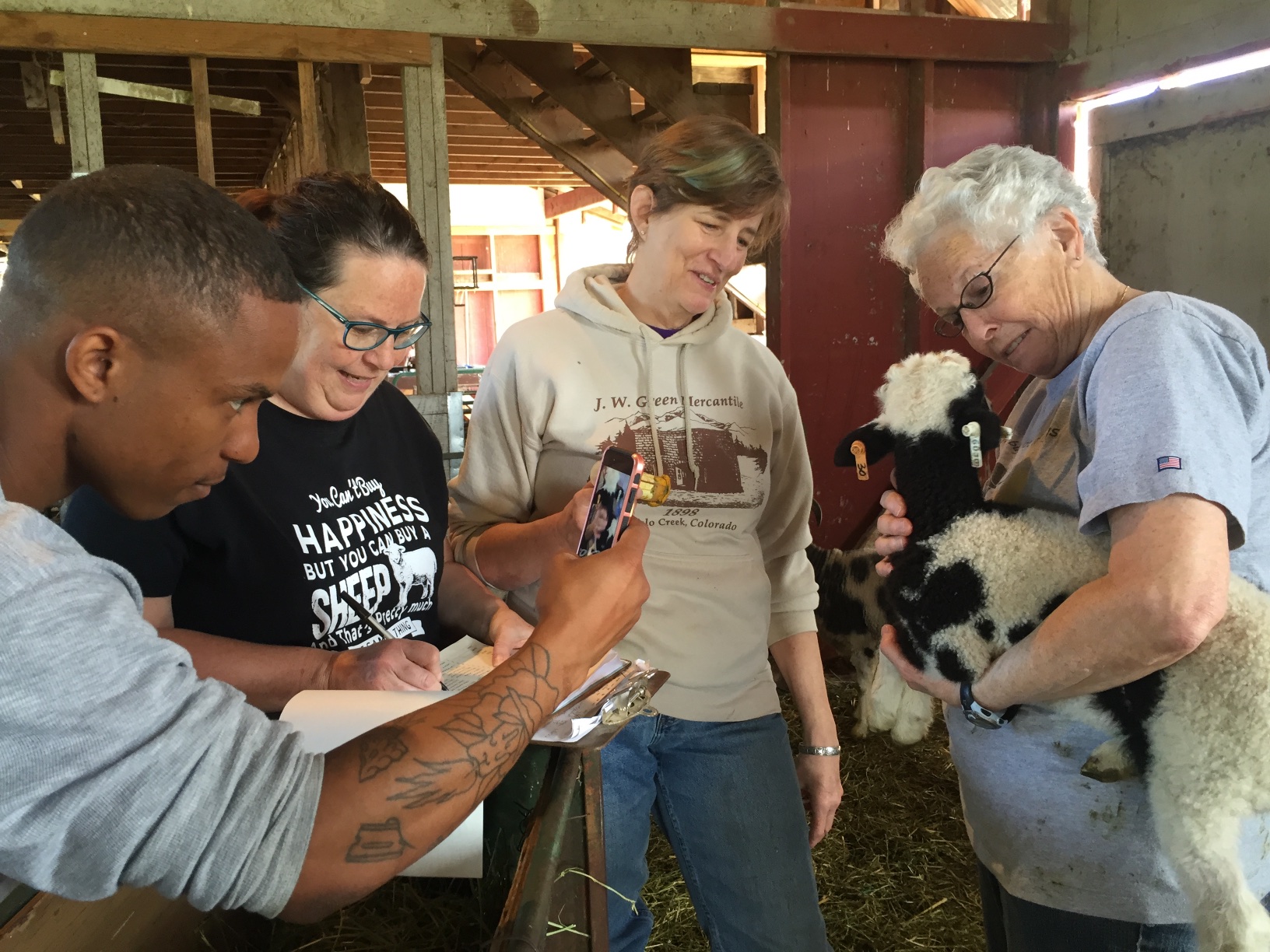 This was also a good time to check the paperwork and make sure that I had recorded the gender and sires correctly.
This was also a good time to check the paperwork and make sure that I had recorded the gender and sires correctly.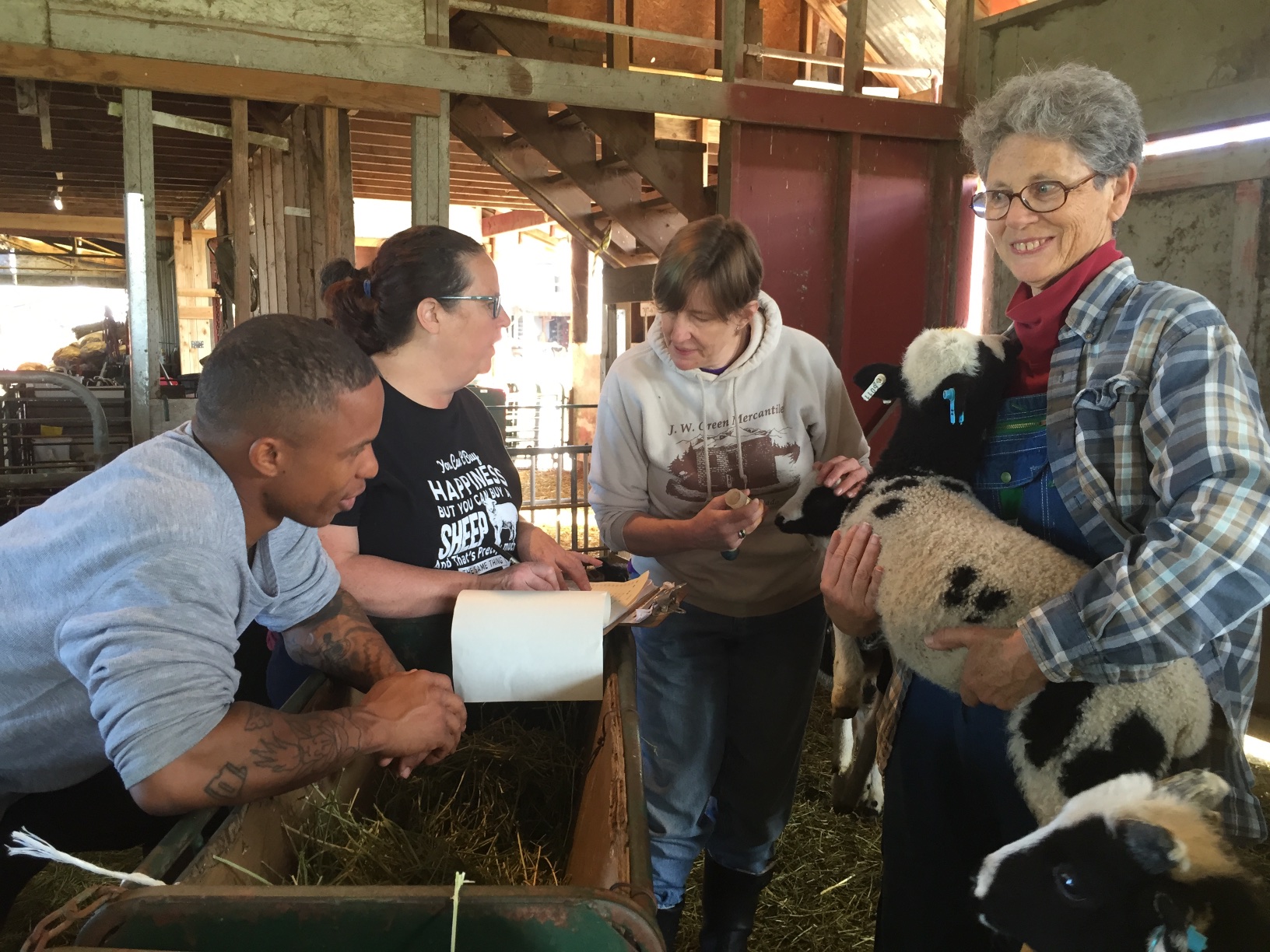 My neighbor who recently purchased sheep was here also to get some hands-on experience. He told me that a recently purchased goat had kidded that morning and he wasn't sure the kid had nursed.
My neighbor who recently purchased sheep was here also to get some hands-on experience. He told me that a recently purchased goat had kidded that morning and he wasn't sure the kid had nursed.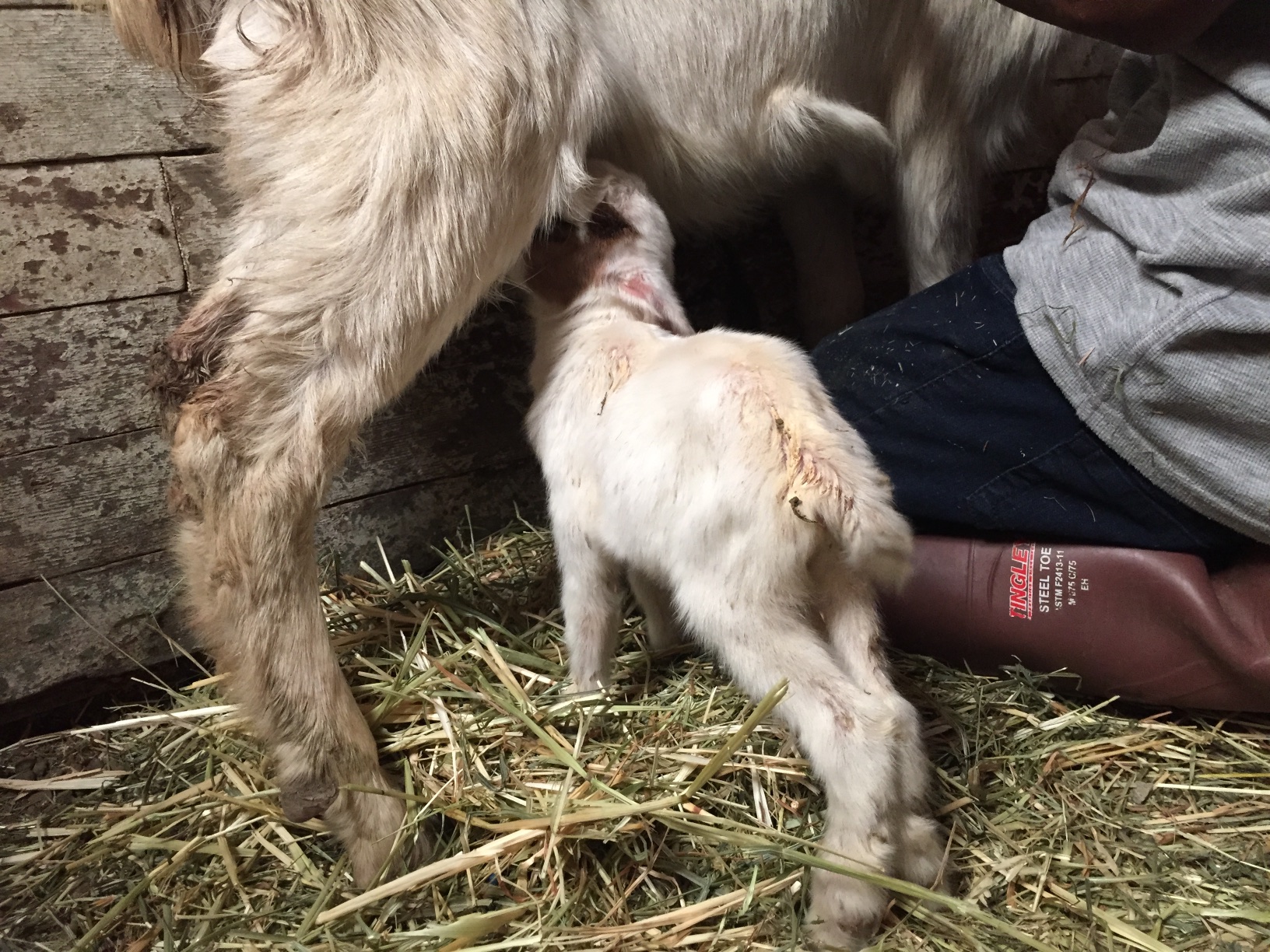 I went to his place at lunchtime to check on the kid and while he held the doe (very skittish) I got the kid nursing.
I went to his place at lunchtime to check on the kid and while he held the doe (very skittish) I got the kid nursing.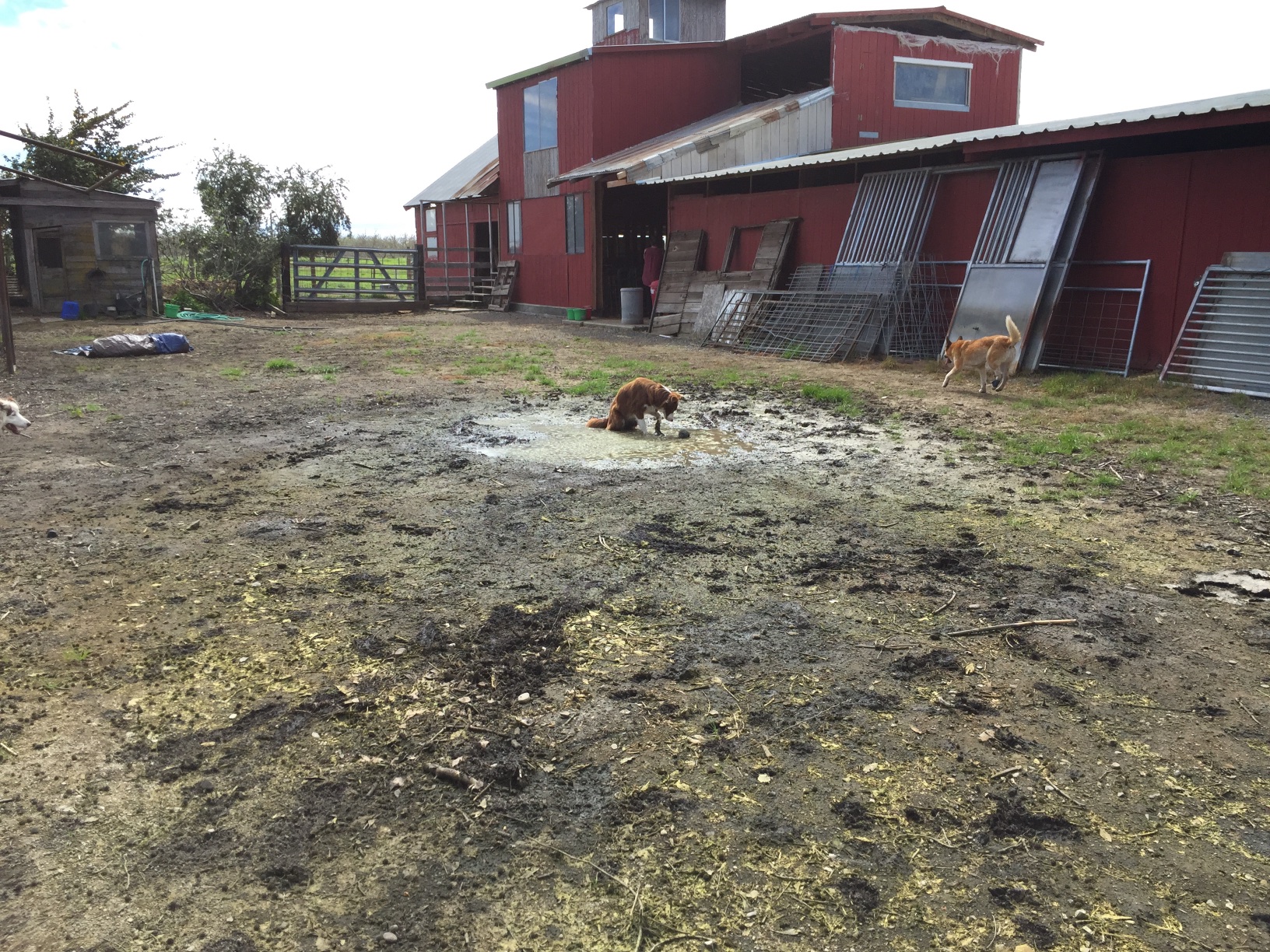 Back at our place, we finished moving sheep around. I moved "Ginny's flock" of wethers and she was so hot when she was finished that she found the only accessible mud puddle to sit in.
Back at our place, we finished moving sheep around. I moved "Ginny's flock" of wethers and she was so hot when she was finished that she found the only accessible mud puddle to sit in.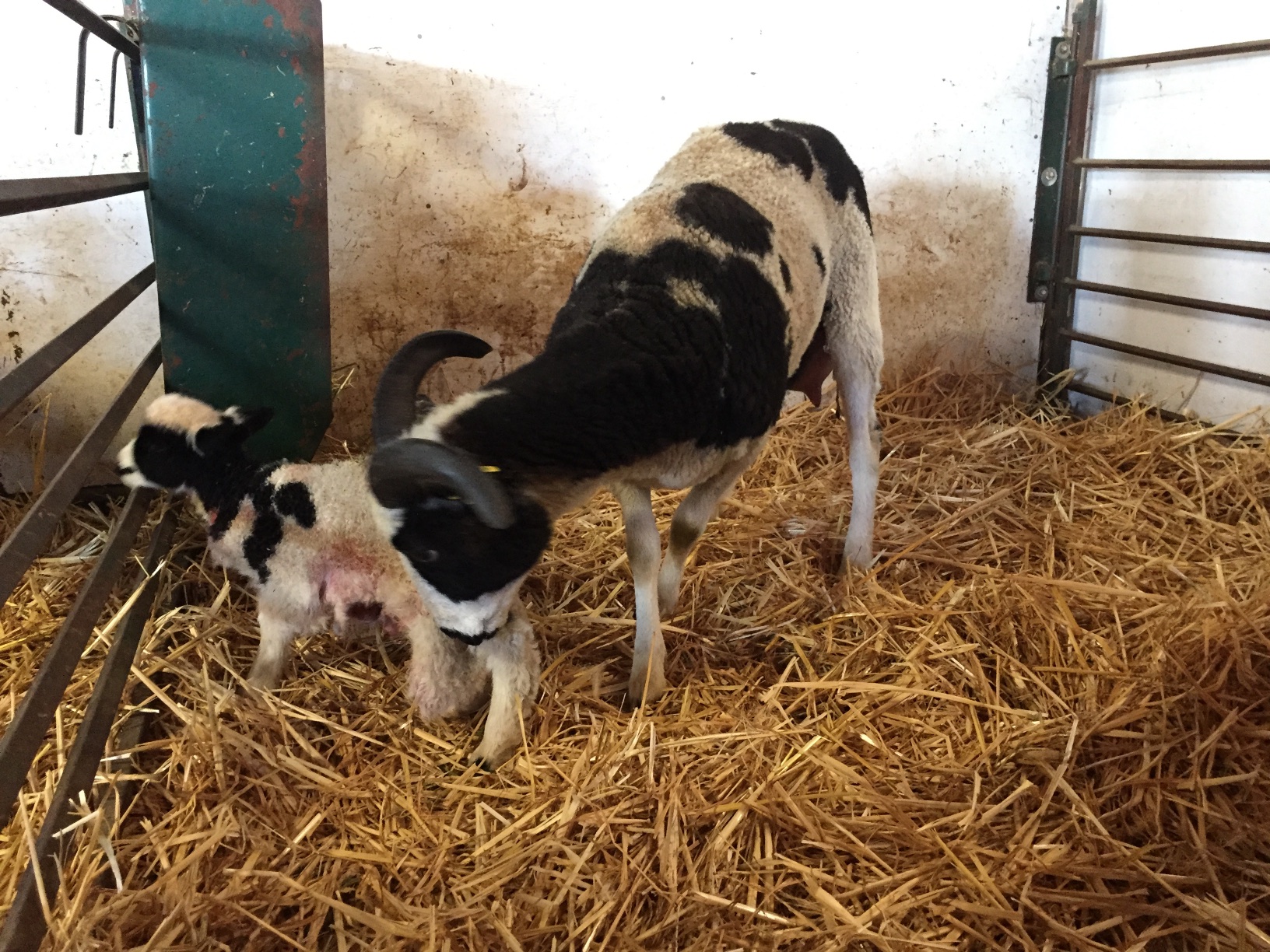 Last in the afternoon we decided to try grafting a lamb onto a ewe whose lamb had been killed the day before. I had debated it that day and at the time didn't want to deal with it. But I had some new twins and though it was worth a try. This method of grafting is not as pleasant or as satisfying as "slime" grafting where you just cover the adopted baby in the birth fluids so that the mom will think the lamb is hers. With this method there is a dead lamb and you need to use it's skin to cover the adoptive lamb to trick the mom into thinking it's hers. That photo above is the lamb in the skin before I cut it to fit better. Bea, the young ewe, was unsure. The scent of her lamb was there but the sound wasn't right. The lamb didn't want to nurse at first and when it did Bea wasn't happy about it.
Last in the afternoon we decided to try grafting a lamb onto a ewe whose lamb had been killed the day before. I had debated it that day and at the time didn't want to deal with it. But I had some new twins and though it was worth a try. This method of grafting is not as pleasant or as satisfying as "slime" grafting where you just cover the adopted baby in the birth fluids so that the mom will think the lamb is hers. With this method there is a dead lamb and you need to use it's skin to cover the adoptive lamb to trick the mom into thinking it's hers. That photo above is the lamb in the skin before I cut it to fit better. Bea, the young ewe, was unsure. The scent of her lamb was there but the sound wasn't right. The lamb didn't want to nurse at first and when it did Bea wasn't happy about it.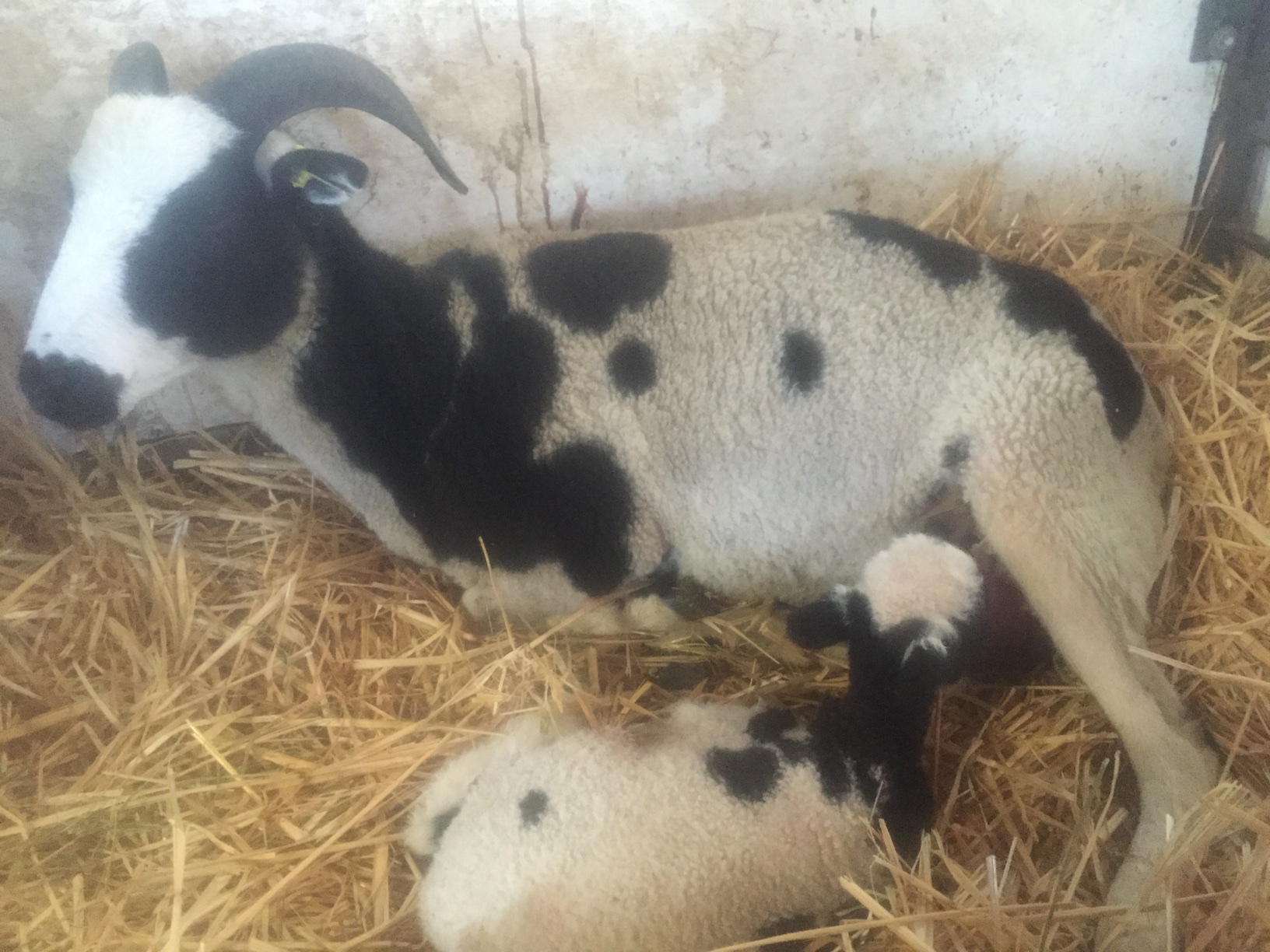 This photo is blurry because I must have smeared my iPhone lens while working with the lamb. When Bea finally lay down while trying to avoid me attaching the lamb to her teat I was able to get the lamb to nurse on the engorged udder. For a day or two I needed to halter her or just stand there.
This photo is blurry because I must have smeared my iPhone lens while working with the lamb. When Bea finally lay down while trying to avoid me attaching the lamb to her teat I was able to get the lamb to nurse on the engorged udder. For a day or two I needed to halter her or just stand there.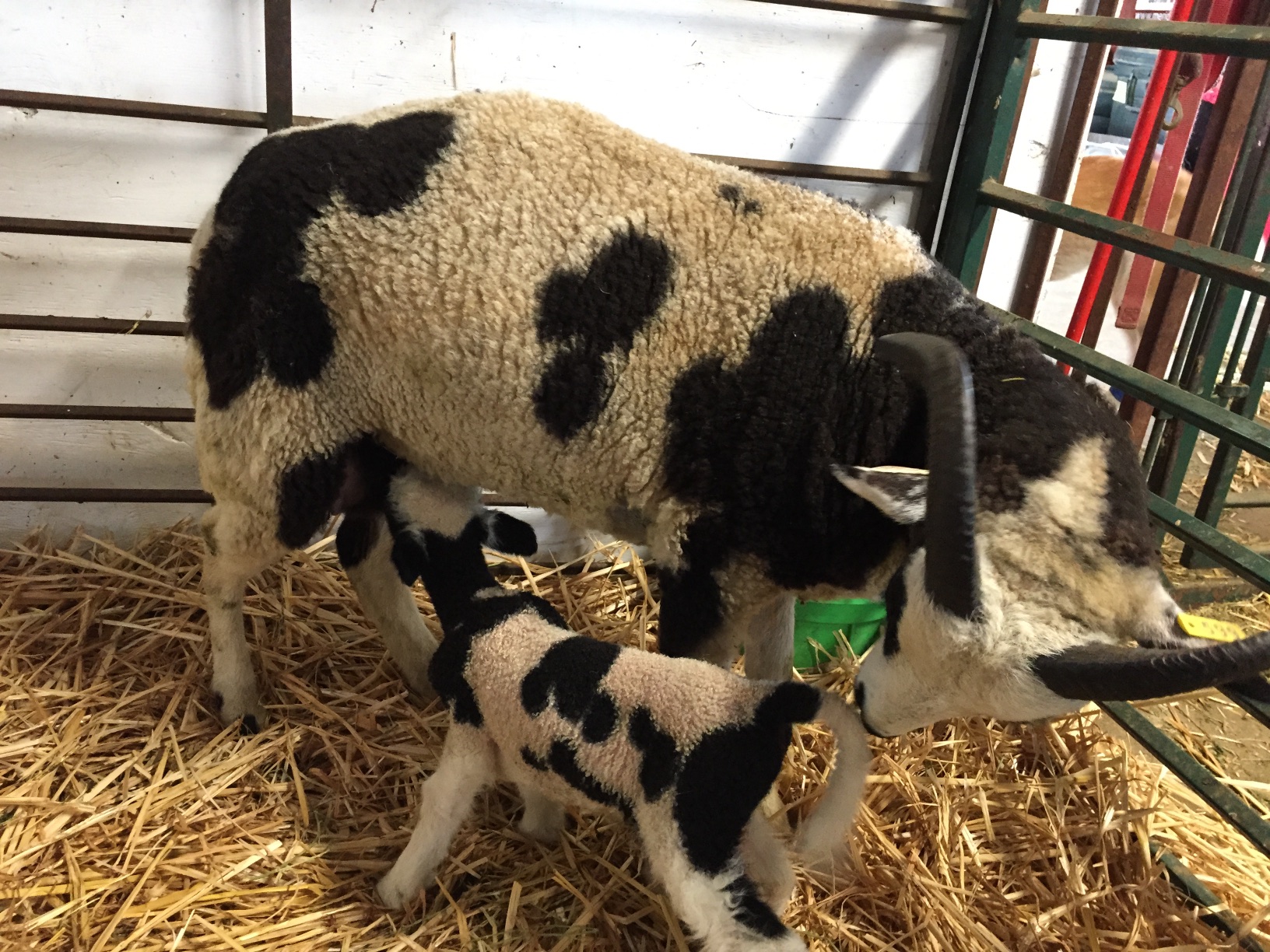 At this point Bea has completely claimed the lamb as her own. (The dead lamb's skin is gone in this photo--I took it off the next morning.)
At this point Bea has completely claimed the lamb as her own. (The dead lamb's skin is gone in this photo--I took it off the next morning.)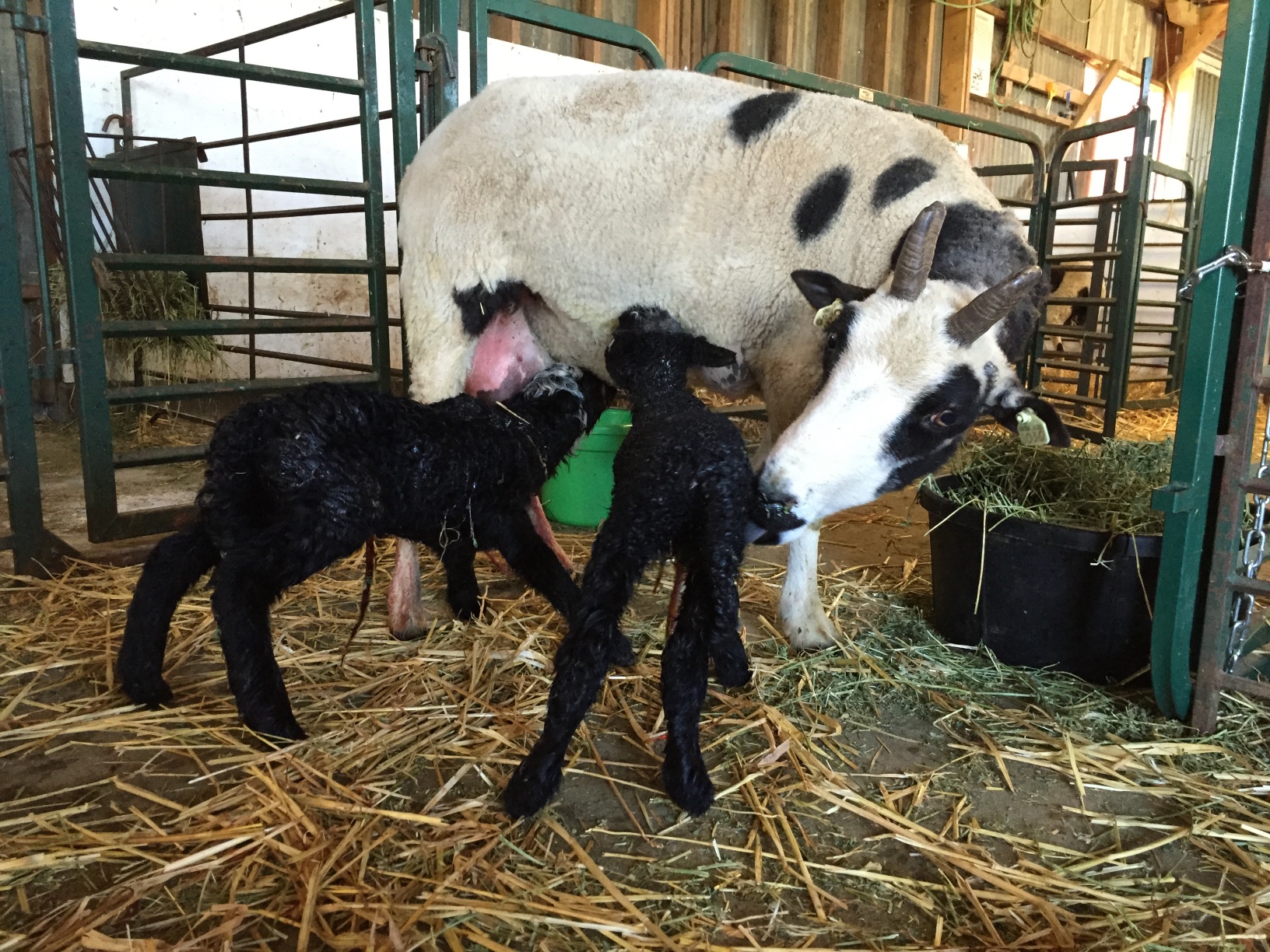 We were impatiently waiting for Jazz to lamb. I was sure that she would have triplets because she was so huge. She surprised me with twins the day after Farm Day. They are 9.6 and 12 pounds. At that size it's good there were only two of them.
We were impatiently waiting for Jazz to lamb. I was sure that she would have triplets because she was so huge. She surprised me with twins the day after Farm Day. They are 9.6 and 12 pounds. At that size it's good there were only two of them.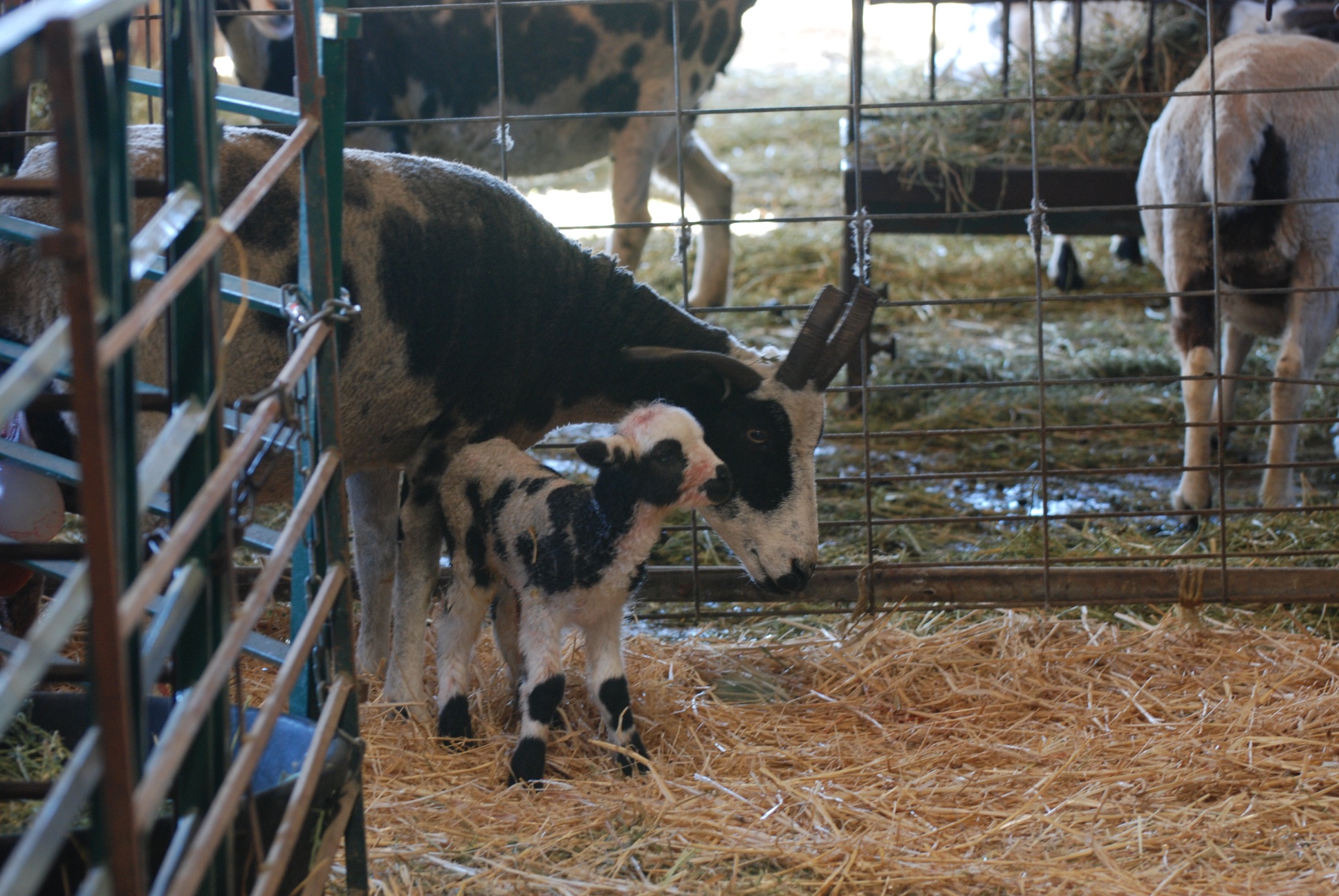 Lana had a very pretty lilac ewe lamb. Eventually, after it seemed things were taking a long time, I checked and found another lamb, pulled it, and spent about twenty minutes trying to make it live. I don't know if it was doomed from the start or aspirated fluid during birth, but it could never get a good enough breath and it died.
Lana had a very pretty lilac ewe lamb. Eventually, after it seemed things were taking a long time, I checked and found another lamb, pulled it, and spent about twenty minutes trying to make it live. I don't know if it was doomed from the start or aspirated fluid during birth, but it could never get a good enough breath and it died. 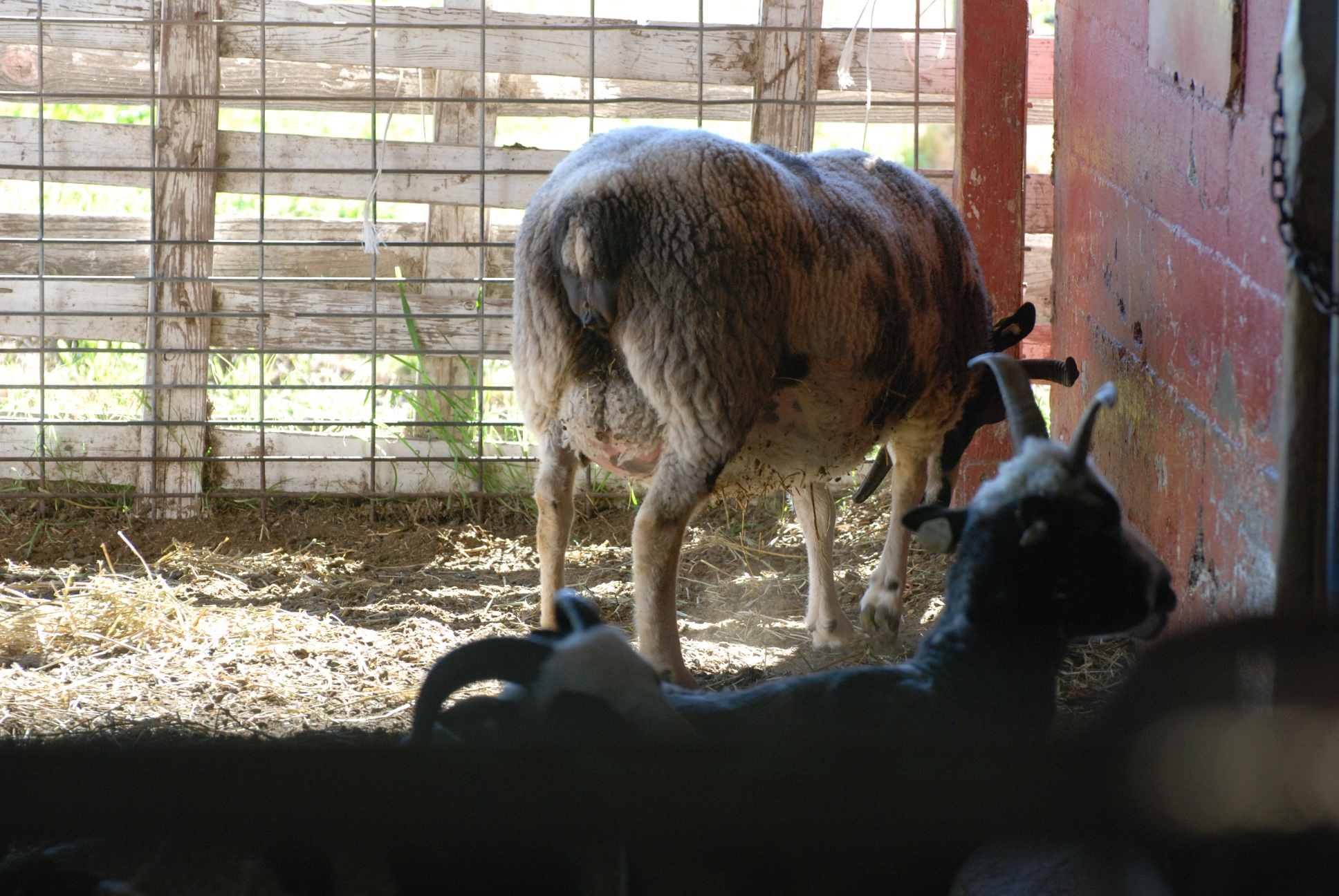 In the meantime Raquel was in labor. I have been in touch with some students at the UC Davis vet school who are interested in coming out for some hands-on practice. It's been difficult to coordinate their schedules with sheep lambing, but they were able to come out then for a couple of hours. Unfortunately Raquel didn't lamb while they were here but they did do some ear tagging, tail banding...
In the meantime Raquel was in labor. I have been in touch with some students at the UC Davis vet school who are interested in coming out for some hands-on practice. It's been difficult to coordinate their schedules with sheep lambing, but they were able to come out then for a couple of hours. Unfortunately Raquel didn't lamb while they were here but they did do some ear tagging, tail banding...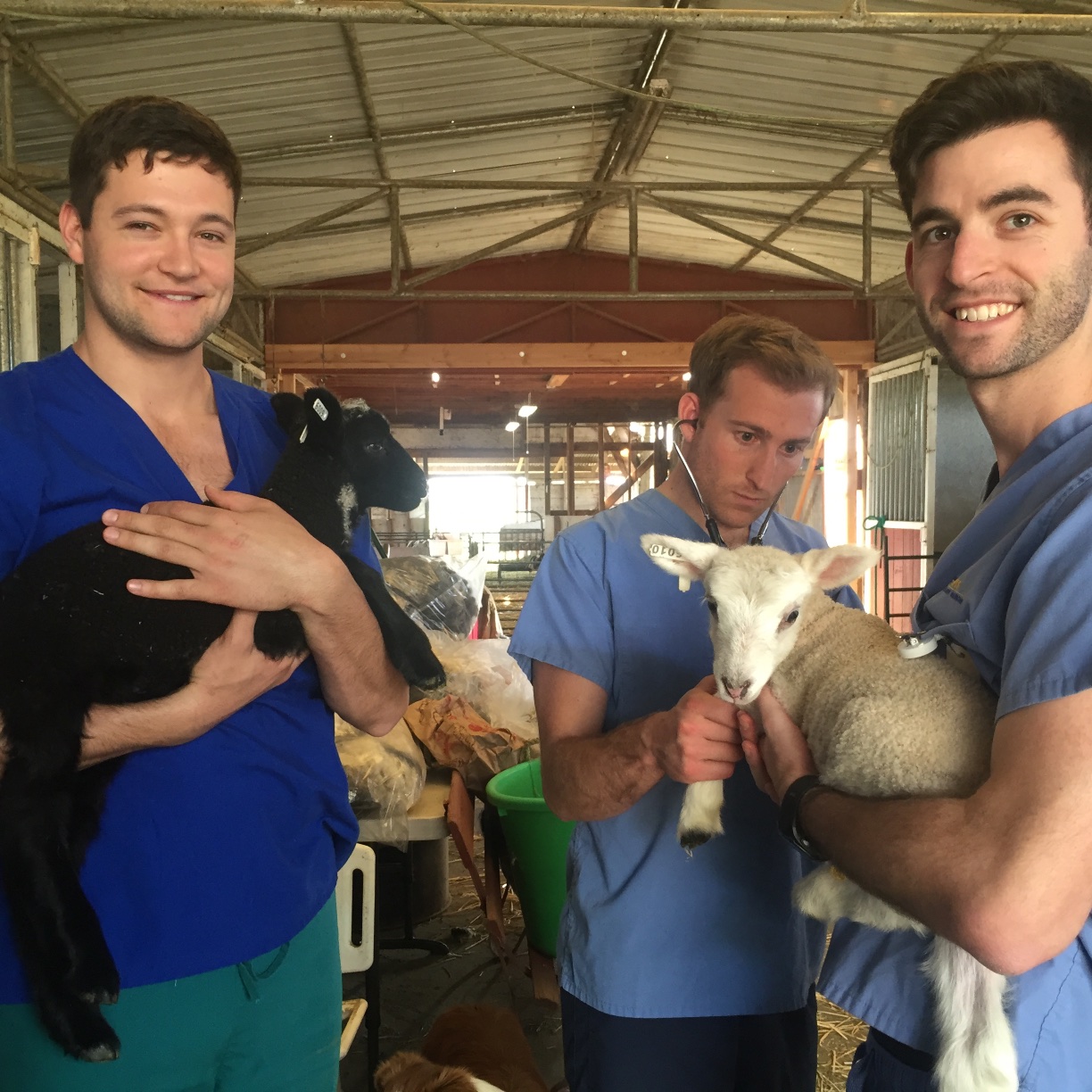 ...and they listened to the normal and the not-as-healthy lungs of these twins, one of whom has been getting penicillin because he almost died from pneumonia following a difficult birth (in
...and they listened to the normal and the not-as-healthy lungs of these twins, one of whom has been getting penicillin because he almost died from pneumonia following a difficult birth (in 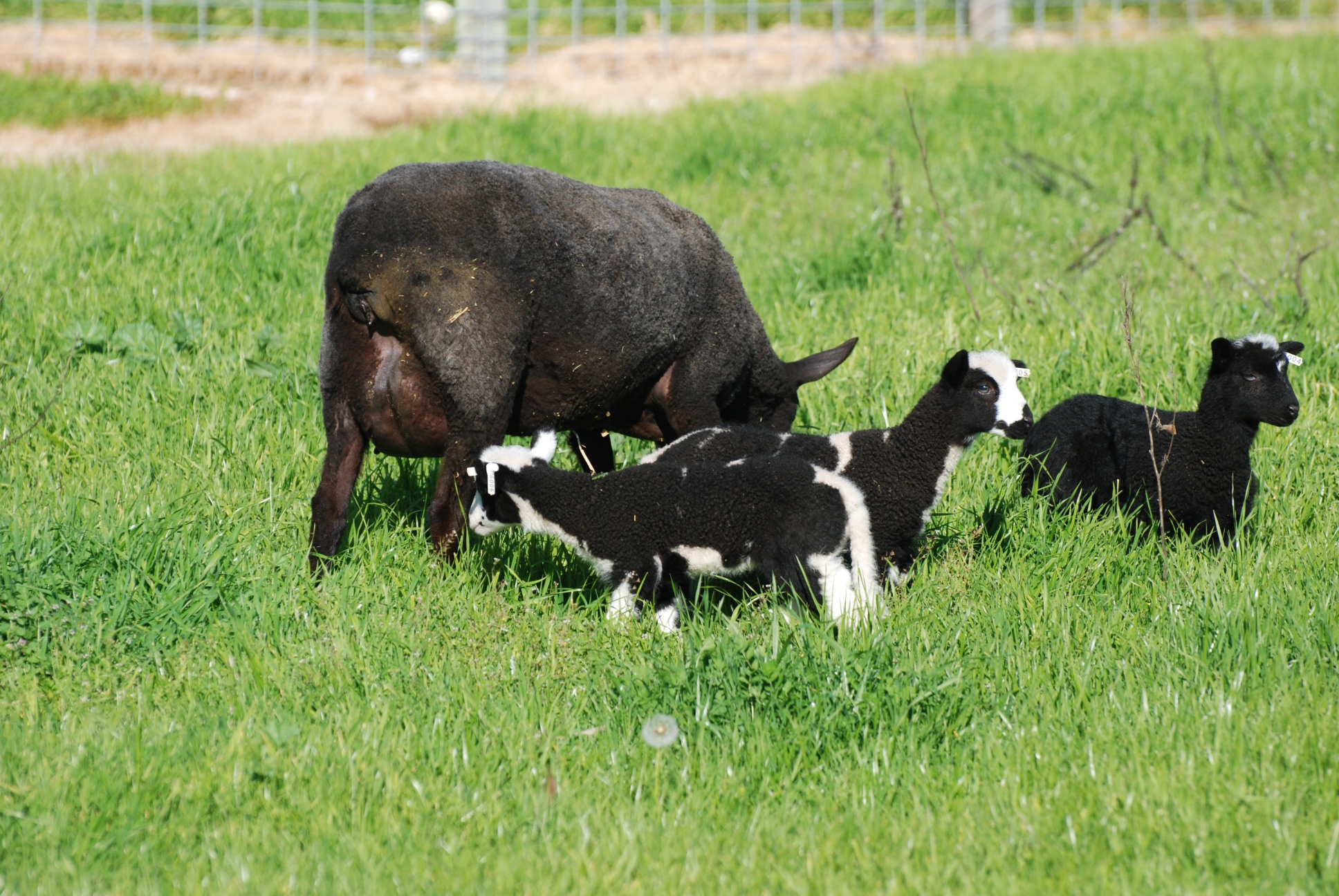 We finally got the ewes with the first lambs out on the pasture. Can you tell where all the mom's food is going now?
We finally got the ewes with the first lambs out on the pasture. Can you tell where all the mom's food is going now?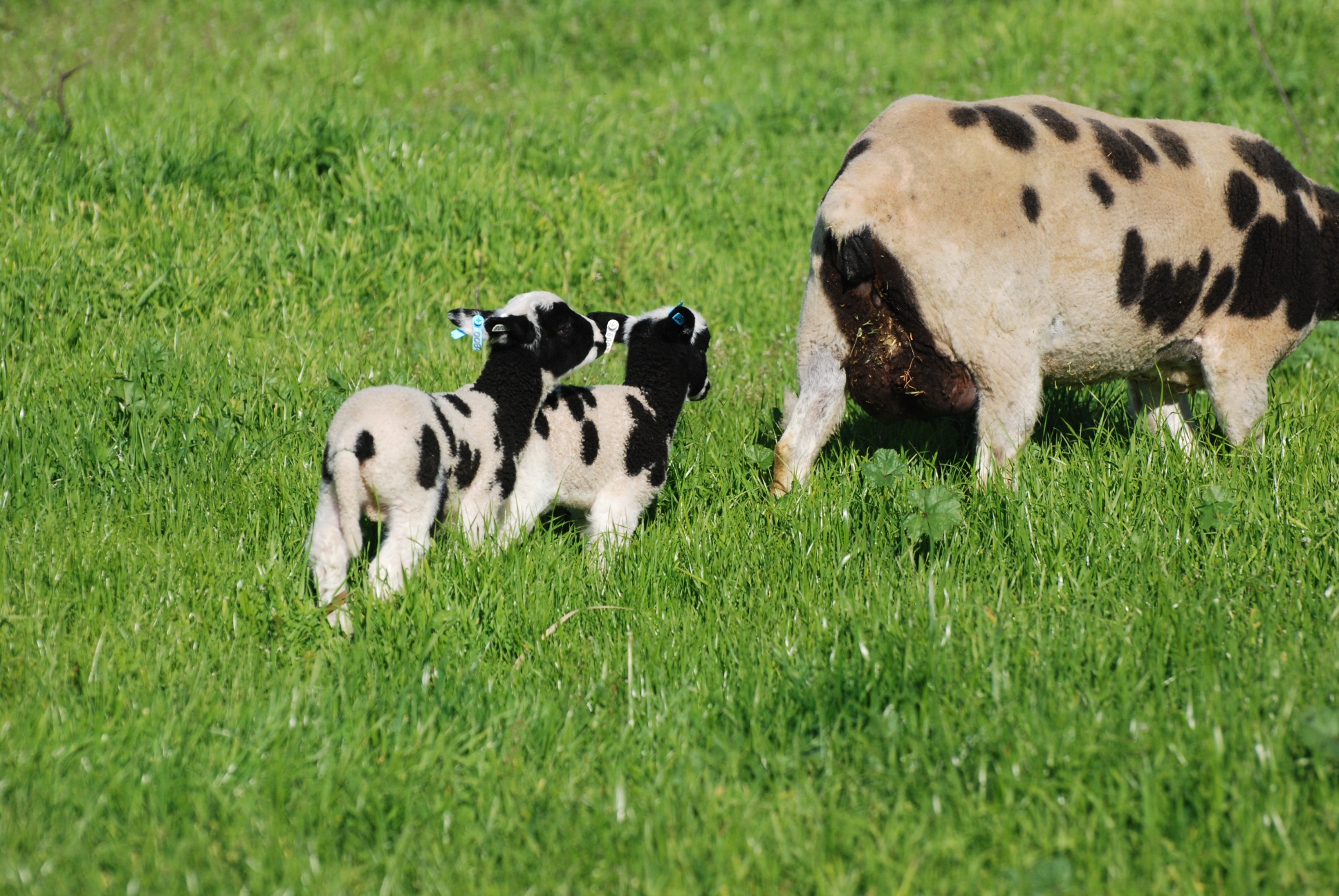 After getting the ewe through the end of pregnancy and then lambing in good health, the next challenge is keeping an eye on the udder health. As the milk is coming in (the lesser amount of colostrum giving way to a greater quantity of milk) the udder may become engorged. If there is tenderness and the ewe doesn't let the lambs nurse on one side it becomes a vicious cycle. Sore udder and teat...no nursing...more milk backing up...udder more full and sore. This can eventually lead to mastitis which, if not treated, can ultimately kill the ewe or at least ruin her udder.
After getting the ewe through the end of pregnancy and then lambing in good health, the next challenge is keeping an eye on the udder health. As the milk is coming in (the lesser amount of colostrum giving way to a greater quantity of milk) the udder may become engorged. If there is tenderness and the ewe doesn't let the lambs nurse on one side it becomes a vicious cycle. Sore udder and teat...no nursing...more milk backing up...udder more full and sore. This can eventually lead to mastitis which, if not treated, can ultimately kill the ewe or at least ruin her udder.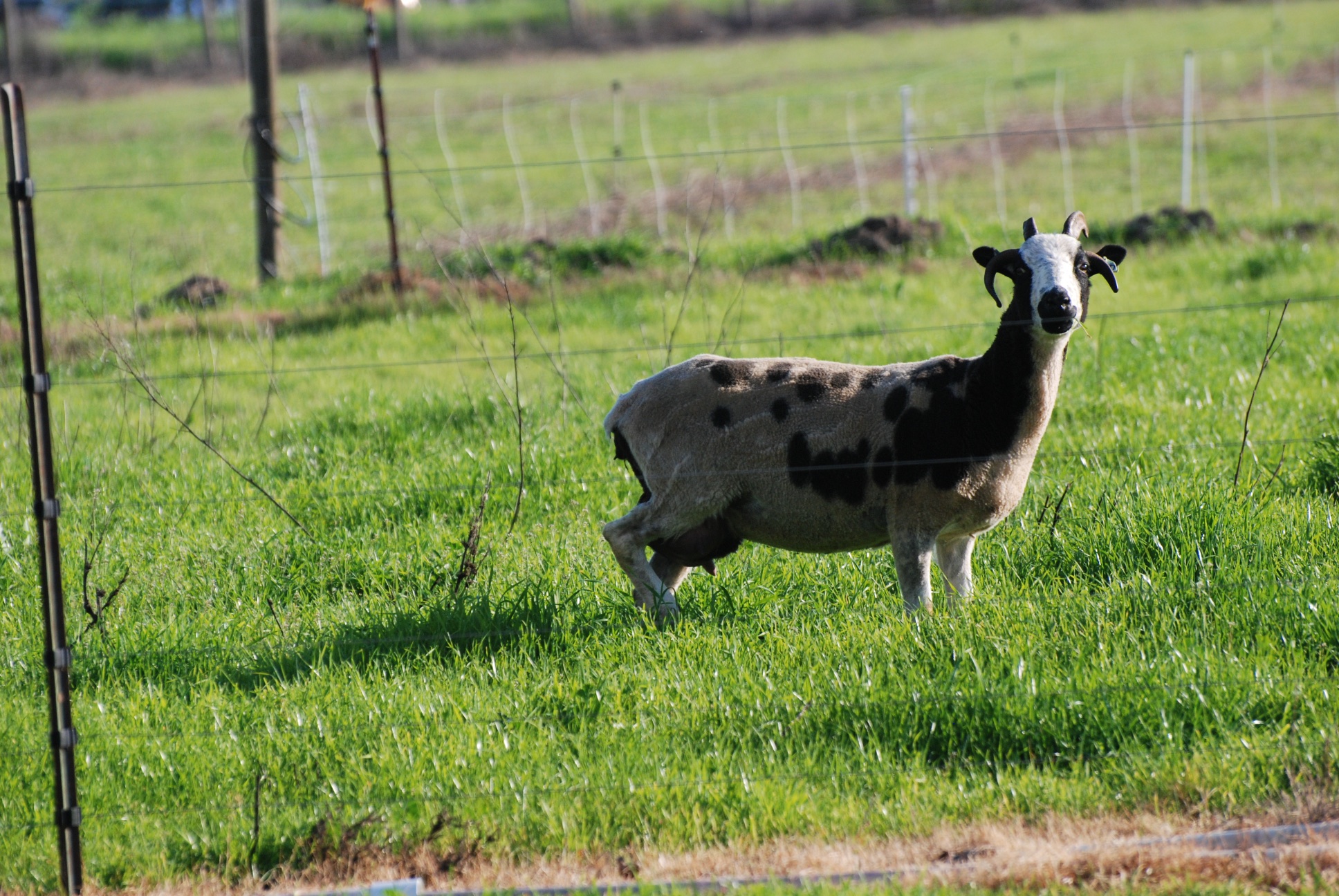 Walking back to the house I noticed Mae standing like this. "Lameness" in a ewe who in nursing lambs may have nothing to do with the feet at all, but be because her udder is full and painful.
Walking back to the house I noticed Mae standing like this. "Lameness" in a ewe who in nursing lambs may have nothing to do with the feet at all, but be because her udder is full and painful.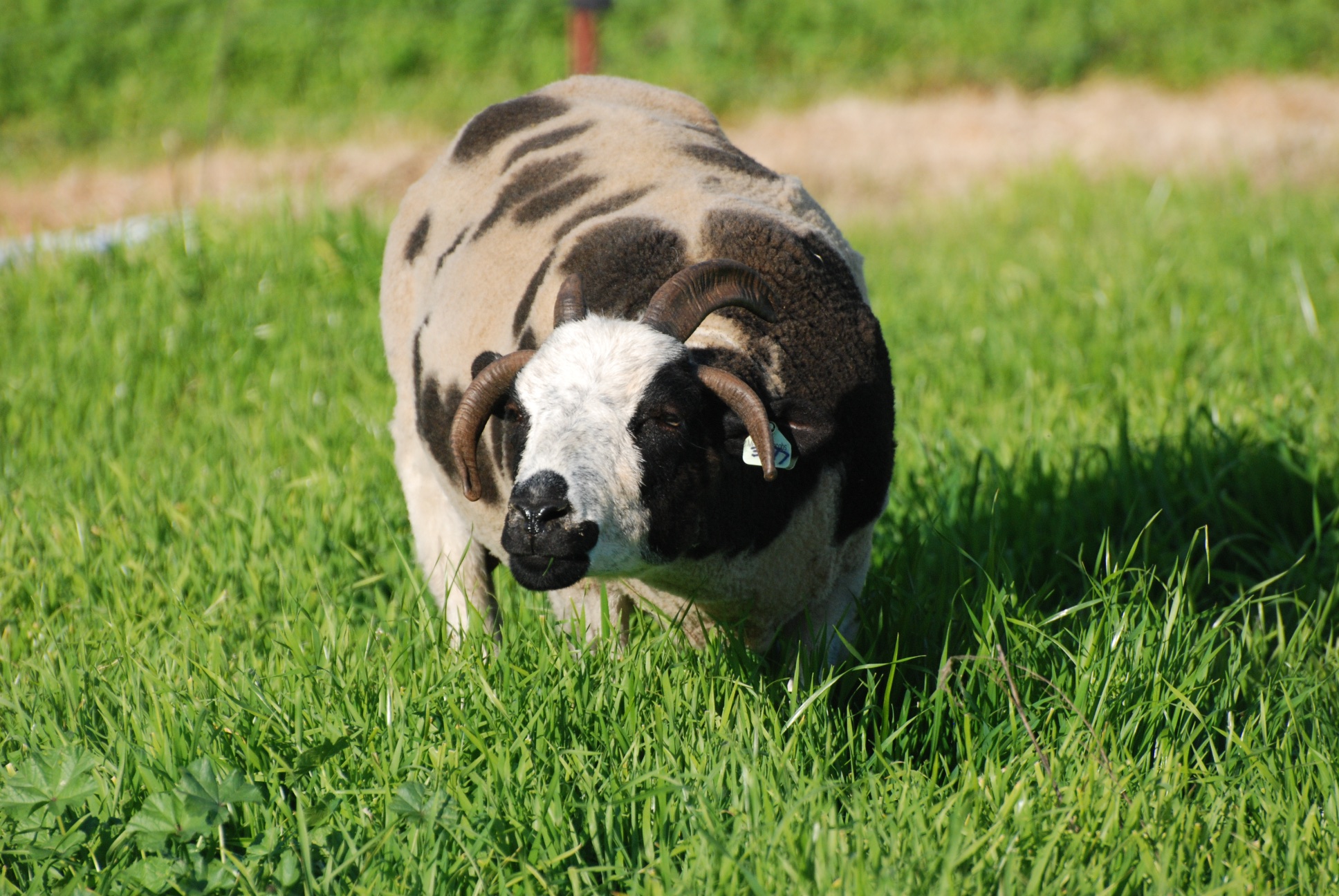 I went out to get her and bring her to the barn. I am amused by her response to me approaching.
I went out to get her and bring her to the barn. I am amused by her response to me approaching.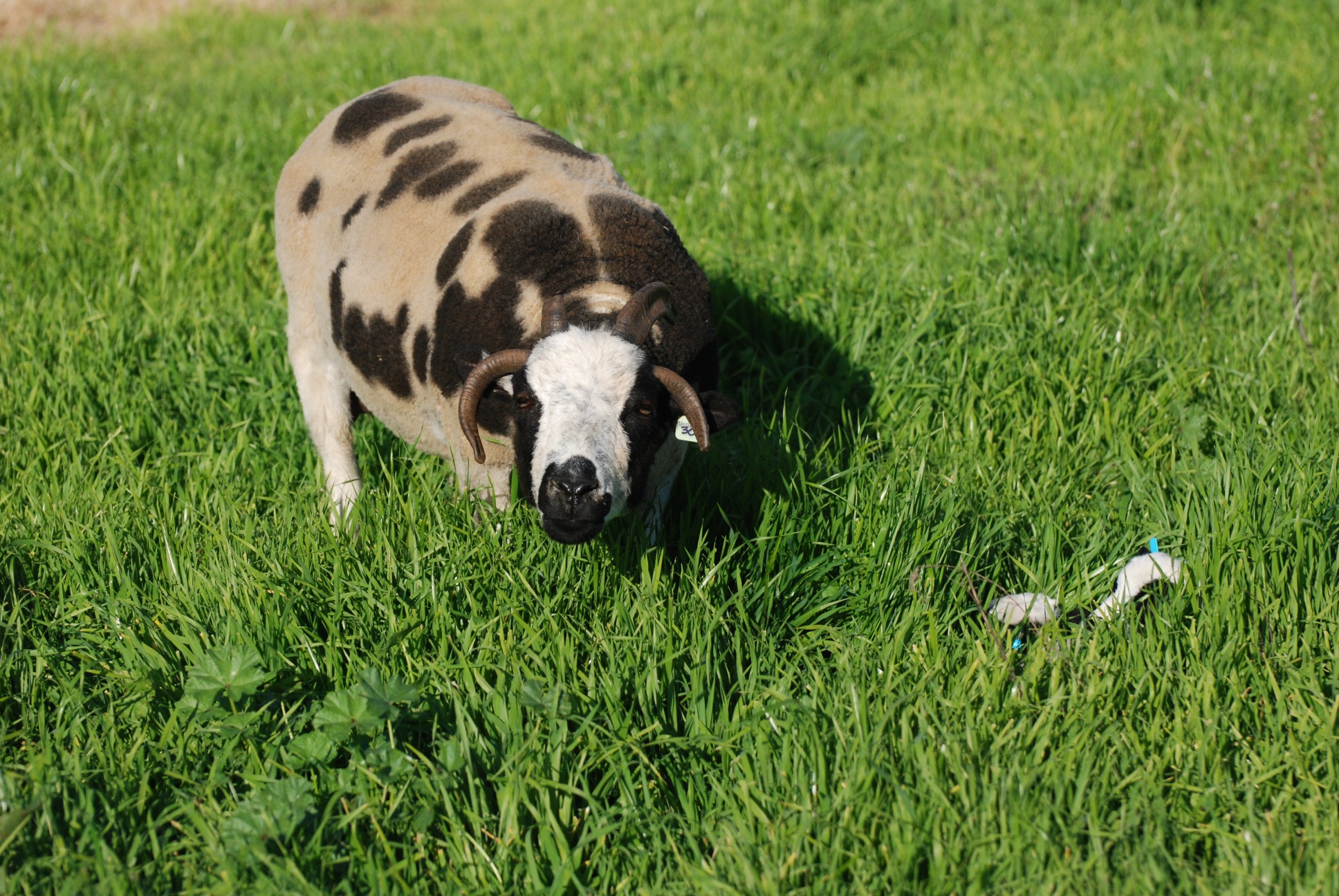 This is why. Her lambs are hidden in the grass.
This is why. Her lambs are hidden in the grass.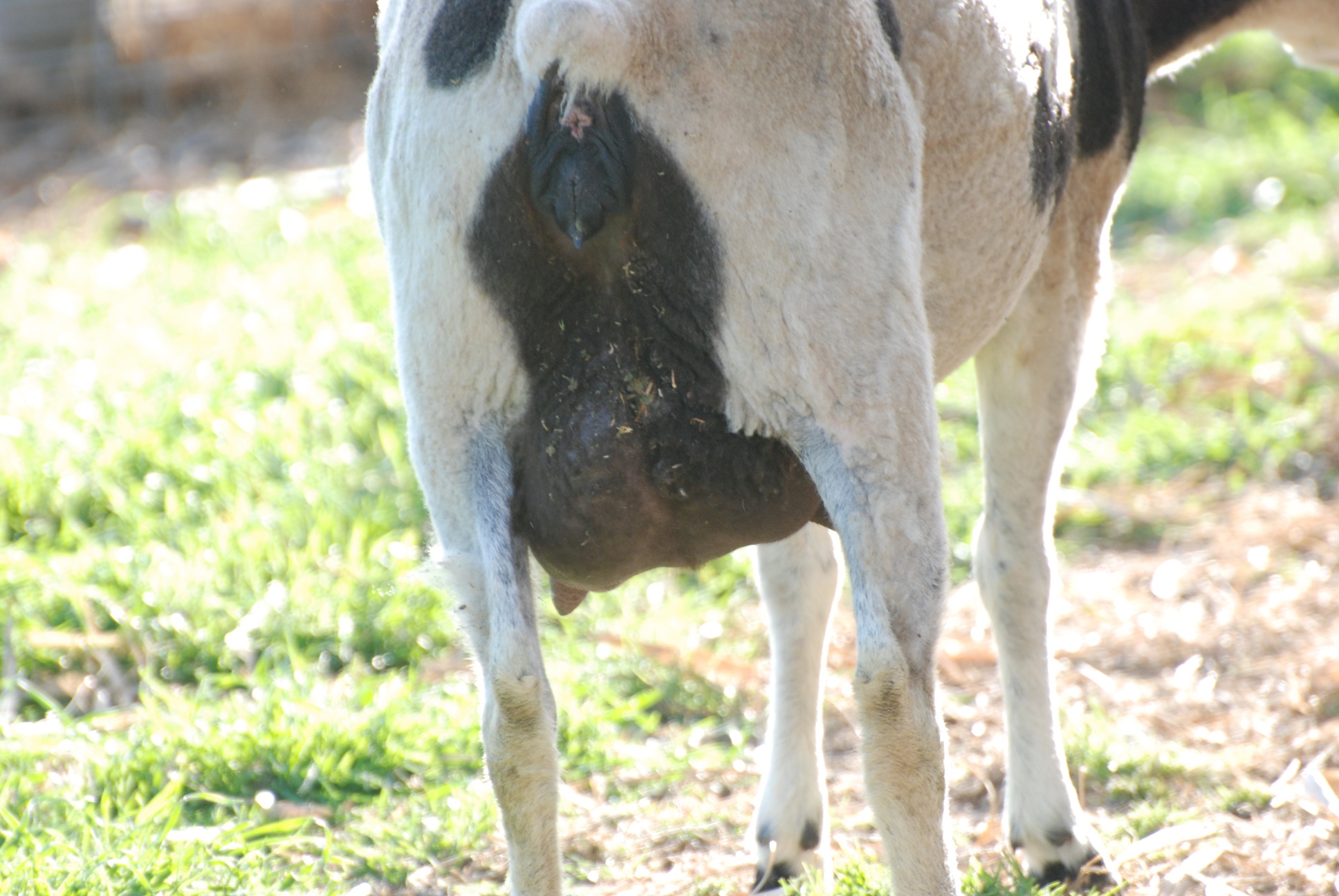 This is how Mae looked walking back to the barn.
This is how Mae looked walking back to the barn.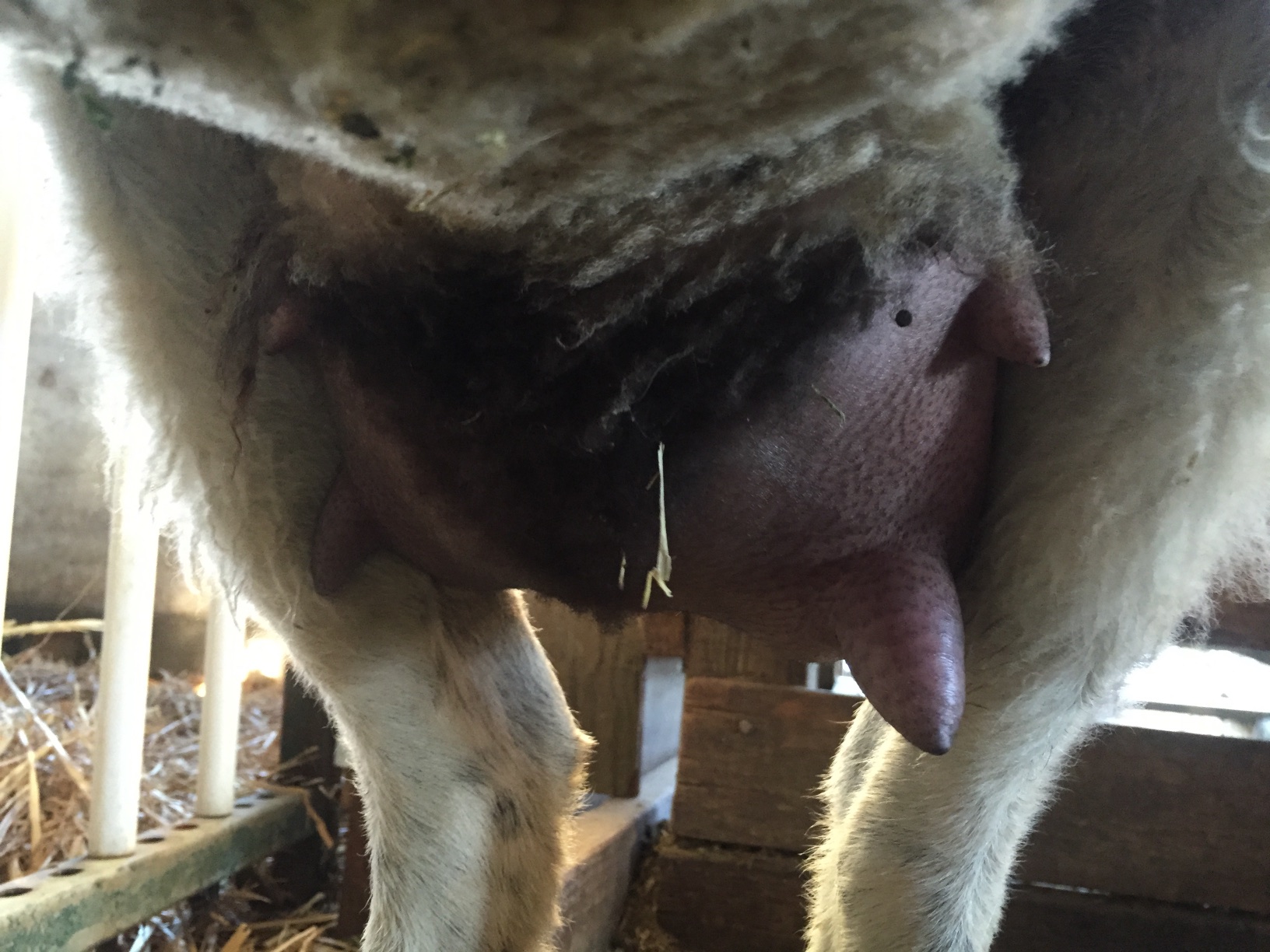 This is from the front. I tied her to the fence and milked the one side, taking 7.5 ounces.
This is from the front. I tied her to the fence and milked the one side, taking 7.5 ounces.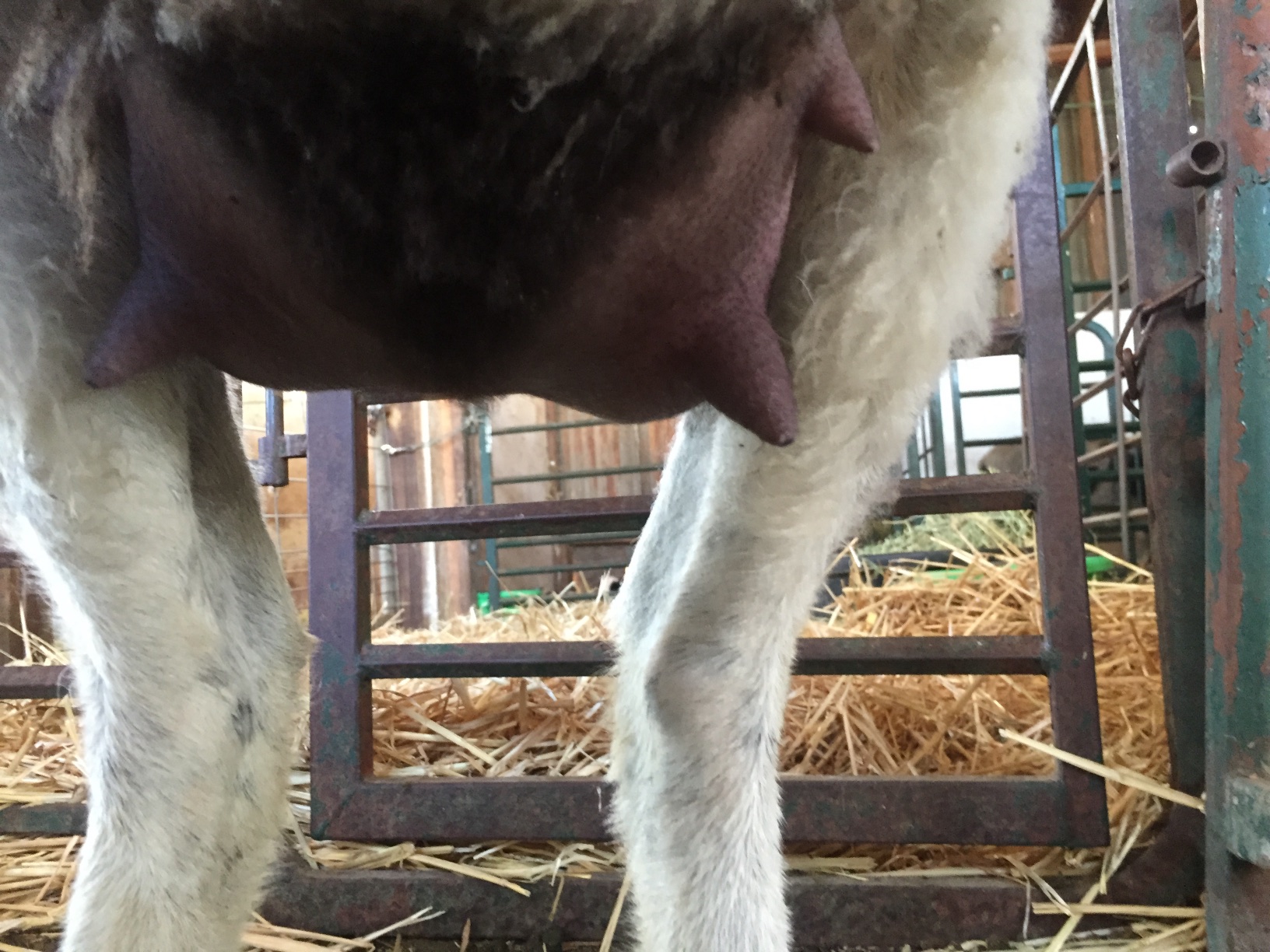 Then it looked and felt balanced. I milked her again this morning. There was another ewe in a similar situation and I had to milk her a couple of times. I have to remember to be watching for that over the next few weeks as these ewes lamb.
Then it looked and felt balanced. I milked her again this morning. There was another ewe in a similar situation and I had to milk her a couple of times. I have to remember to be watching for that over the next few weeks as these ewes lamb.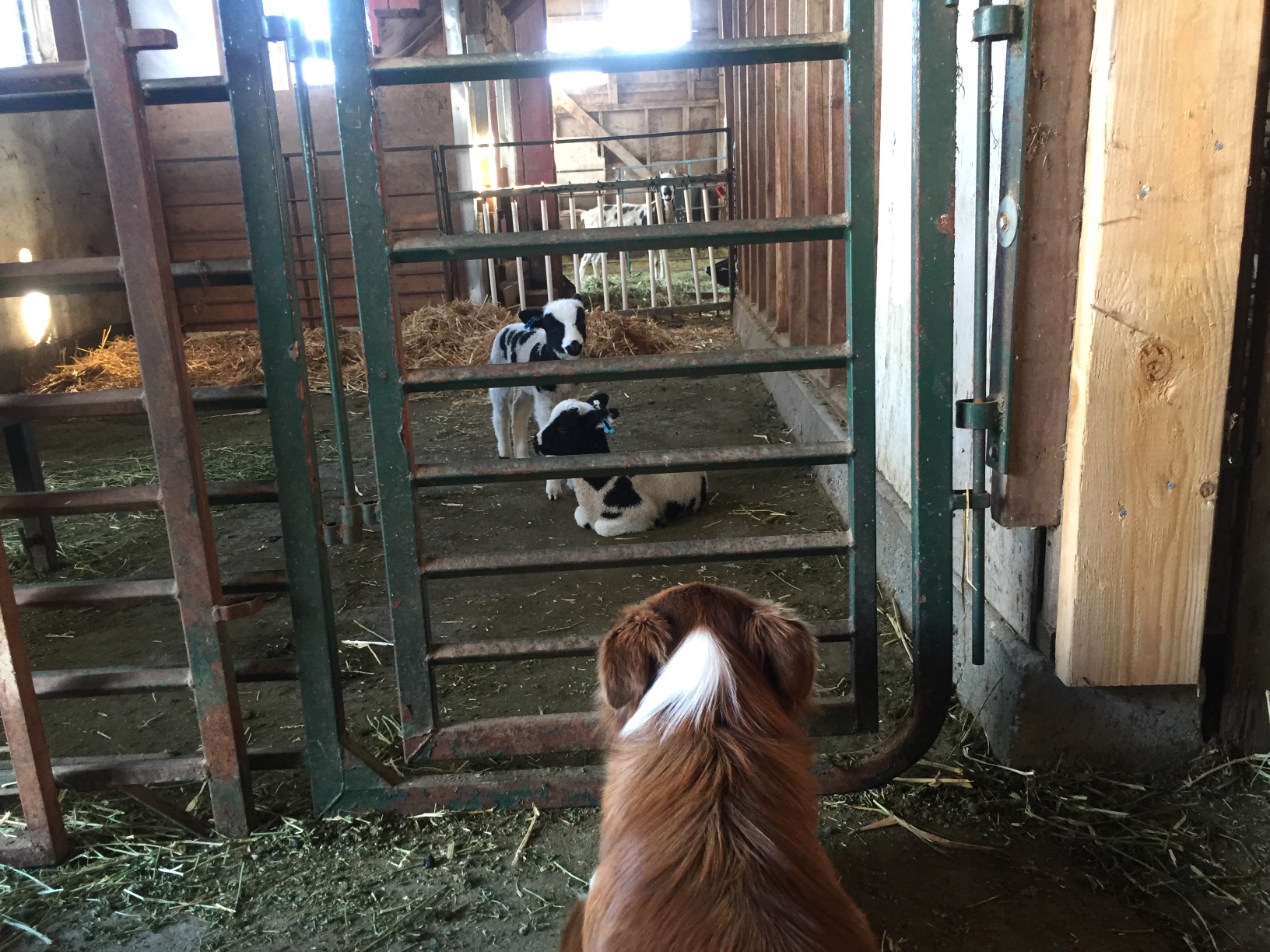 We set up the creep for the lambs. They can get through the narrow slots on that panel. The ewes aren't always happy that their babies can go somewhere that they can't follow.
We set up the creep for the lambs. They can get through the narrow slots on that panel. The ewes aren't always happy that their babies can go somewhere that they can't follow.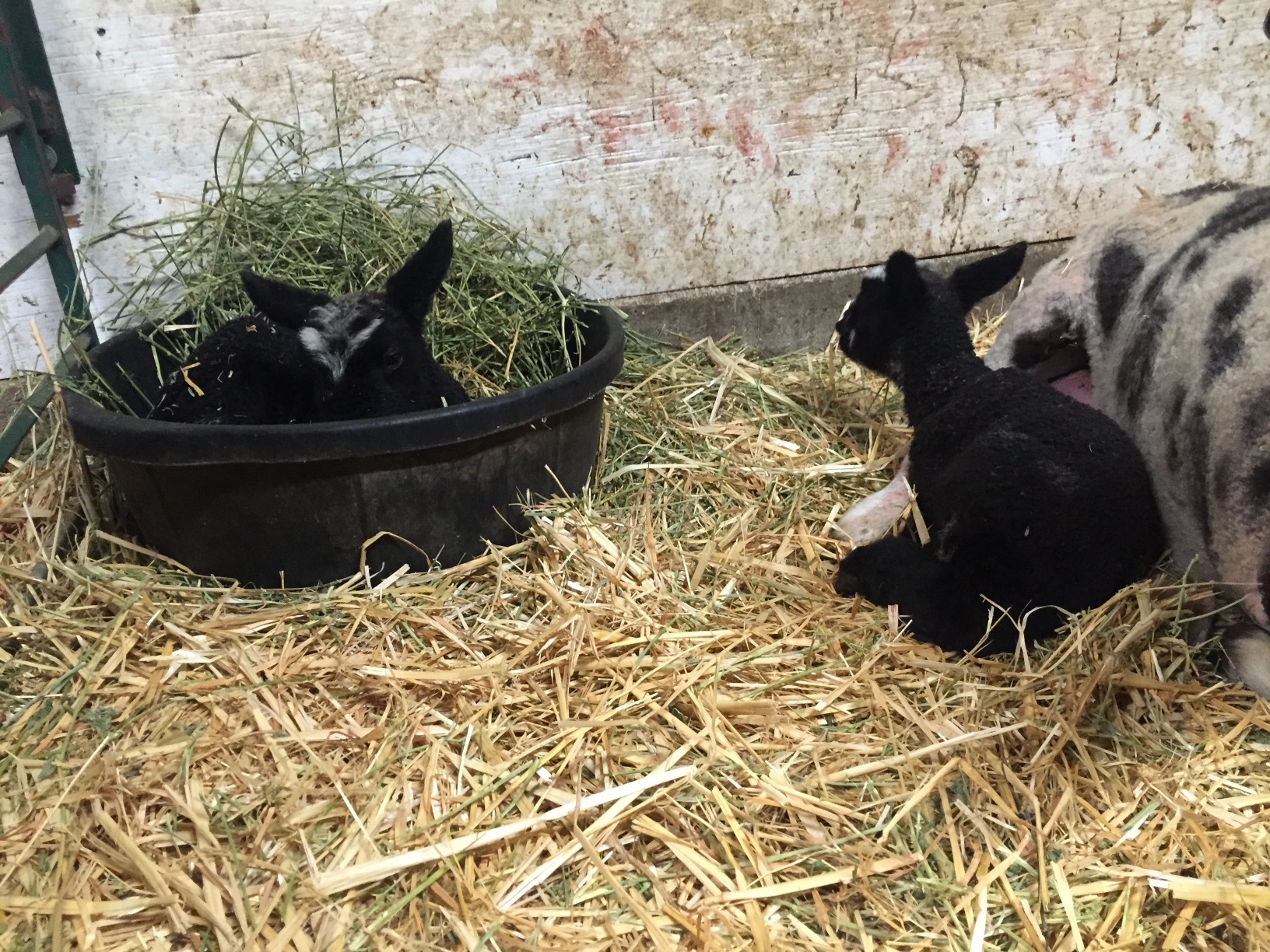 These are BFL-X lambs born the night before.
These are BFL-X lambs born the night before.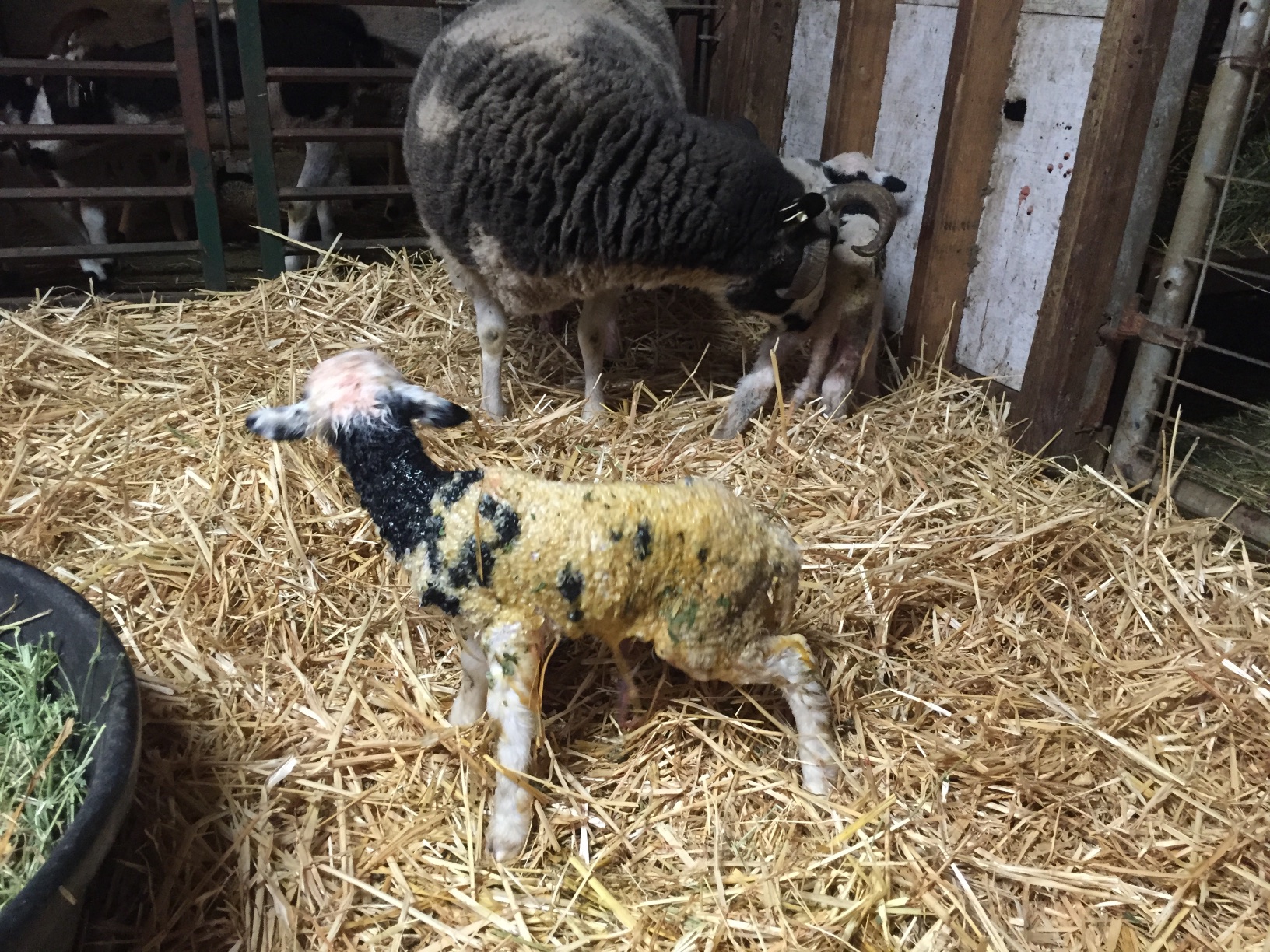 The last lambing of the day was Raquel. After the vet students had left and I had finished working outside I finally went to the house. I went back to the barn to check and these lambs had been born. It wasn't until later at the last check around midnight that I realized that Raquel didn't want one of them. But that is another story.
The last lambing of the day was Raquel. After the vet students had left and I had finished working outside I finally went to the house. I went back to the barn to check and these lambs had been born. It wasn't until later at the last check around midnight that I realized that Raquel didn't want one of them. But that is another story.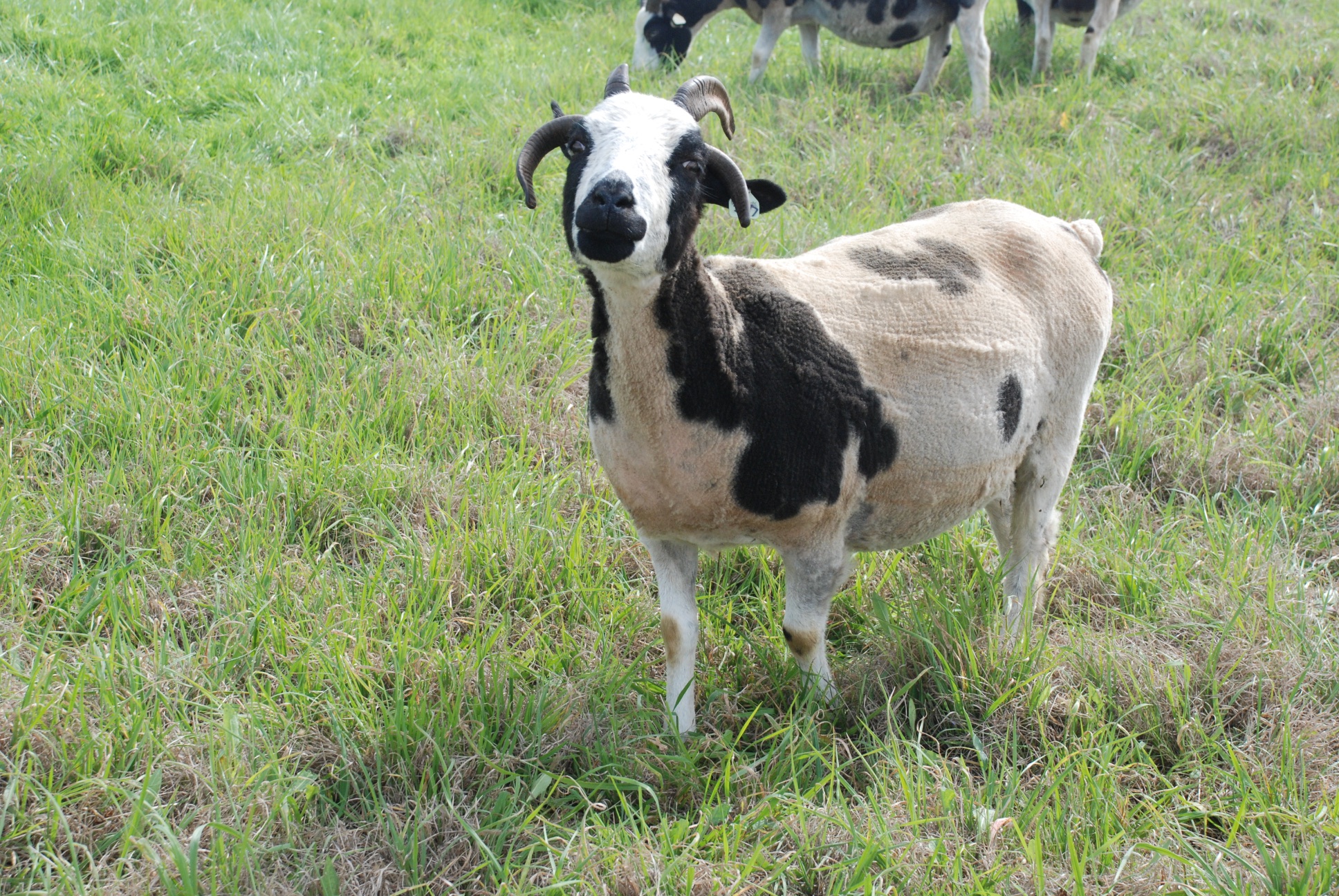 Mae from the front.
Mae from the front.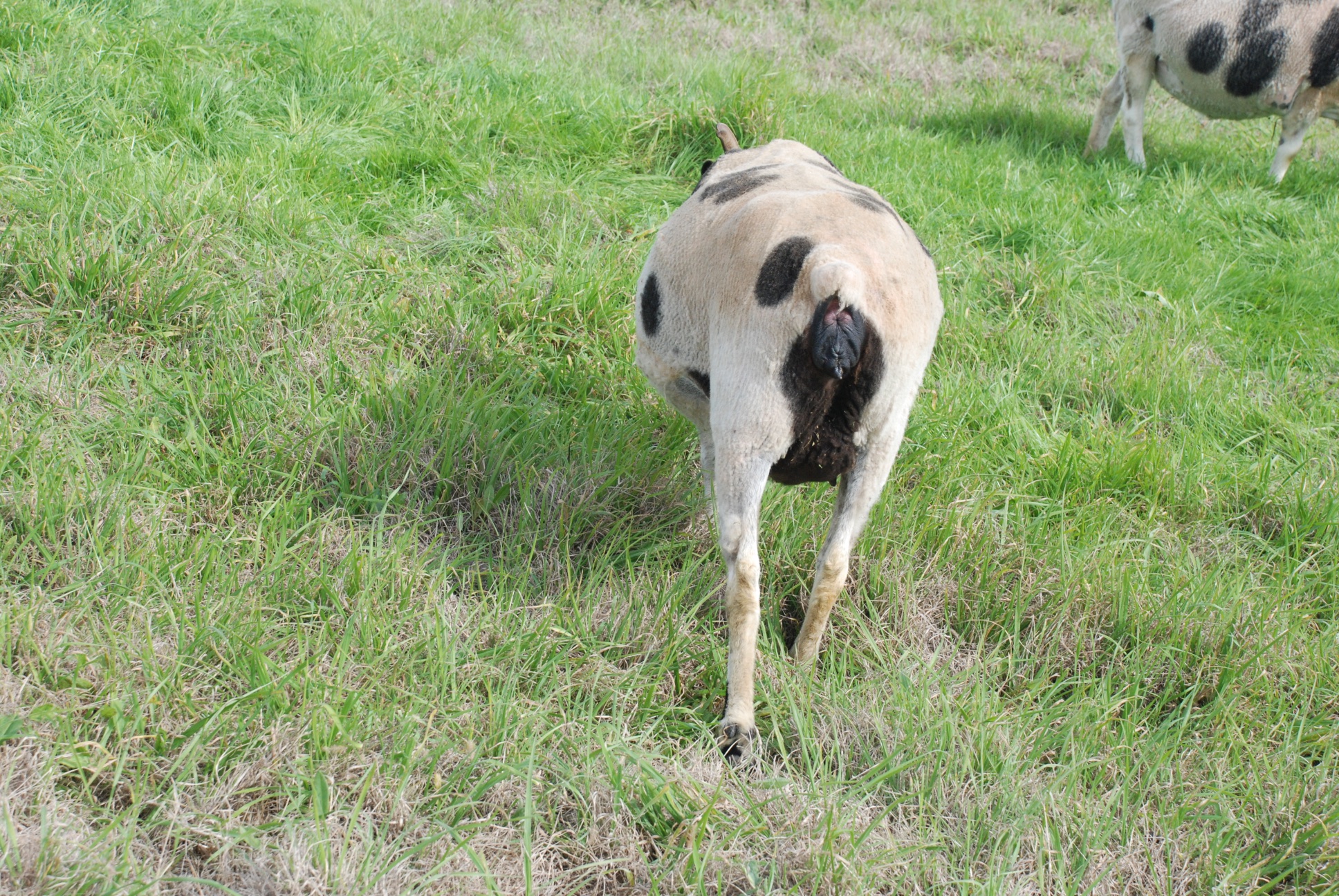 Mae from the rear.
Mae from the rear.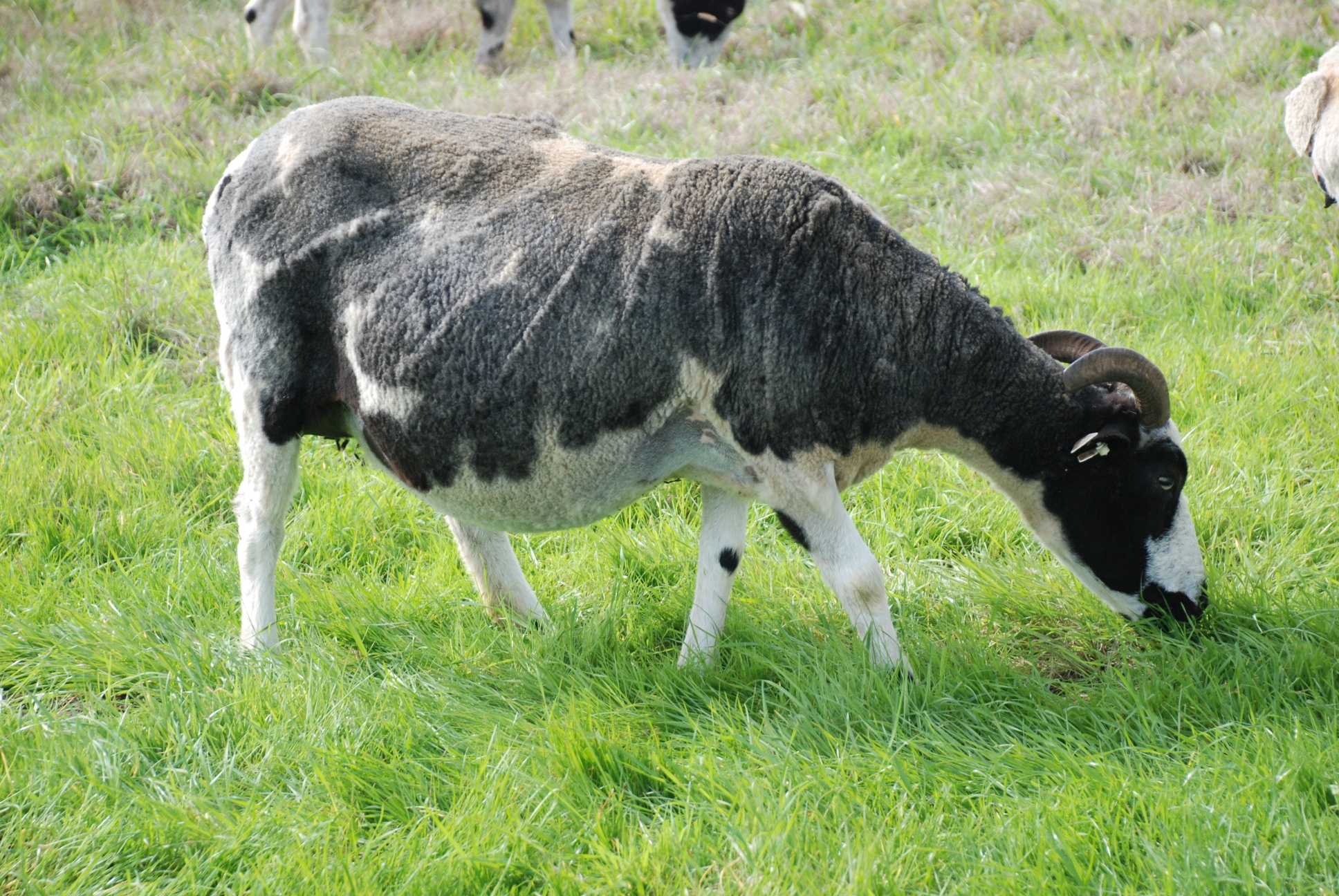 Shelby from the side.
Shelby from the side.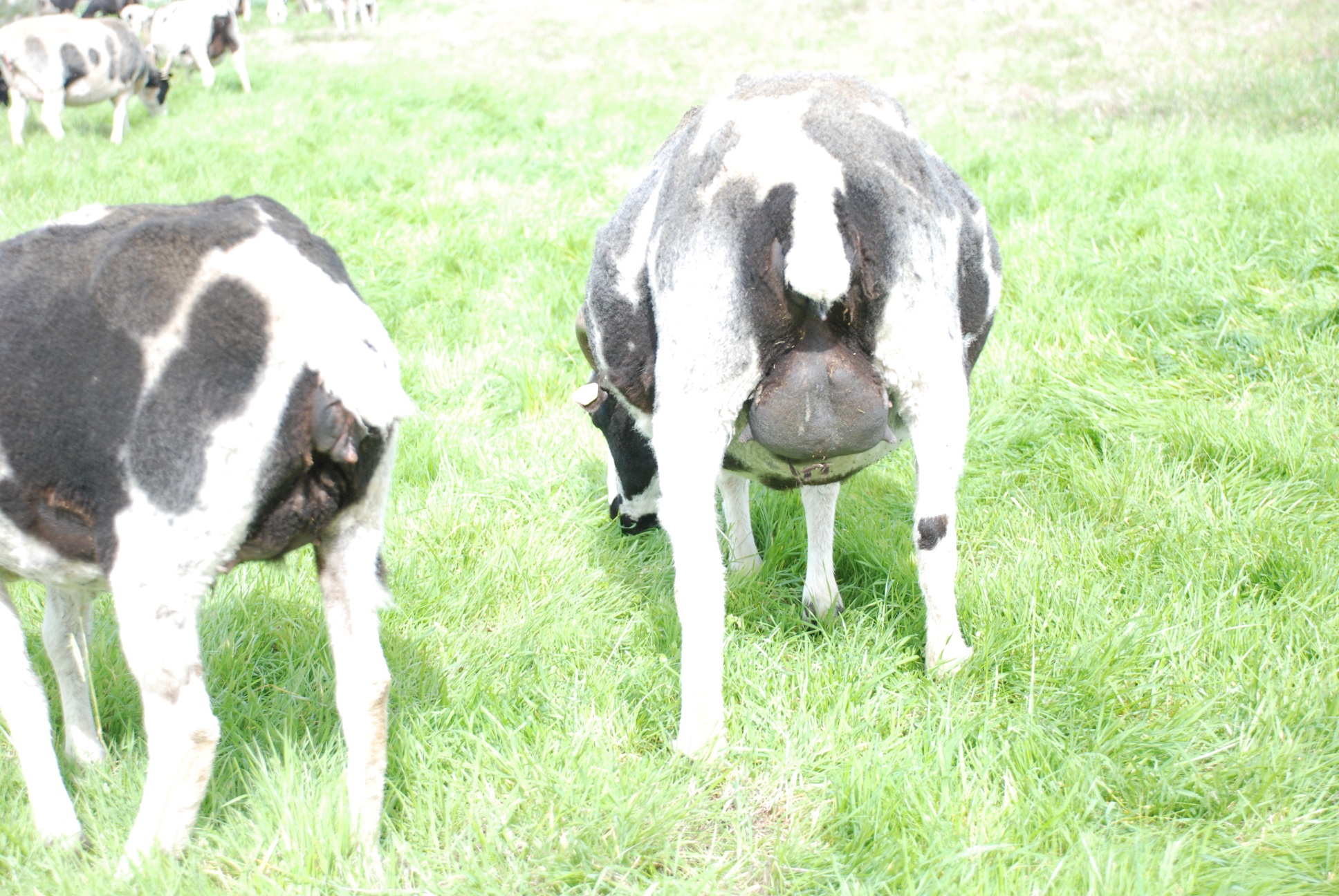 Shelby from the rear.
Shelby from the rear.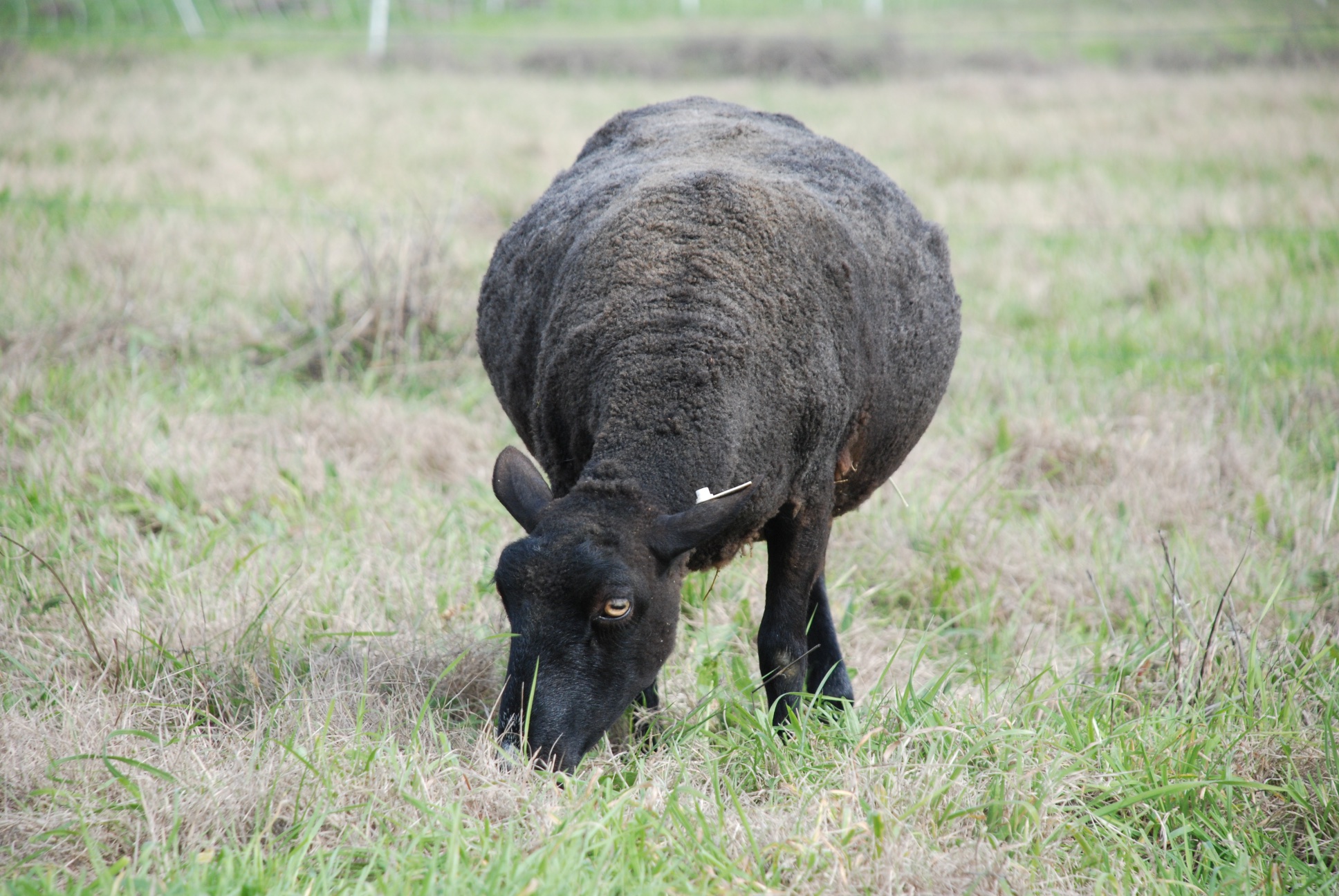 Esmerelda, front.
Esmerelda, front.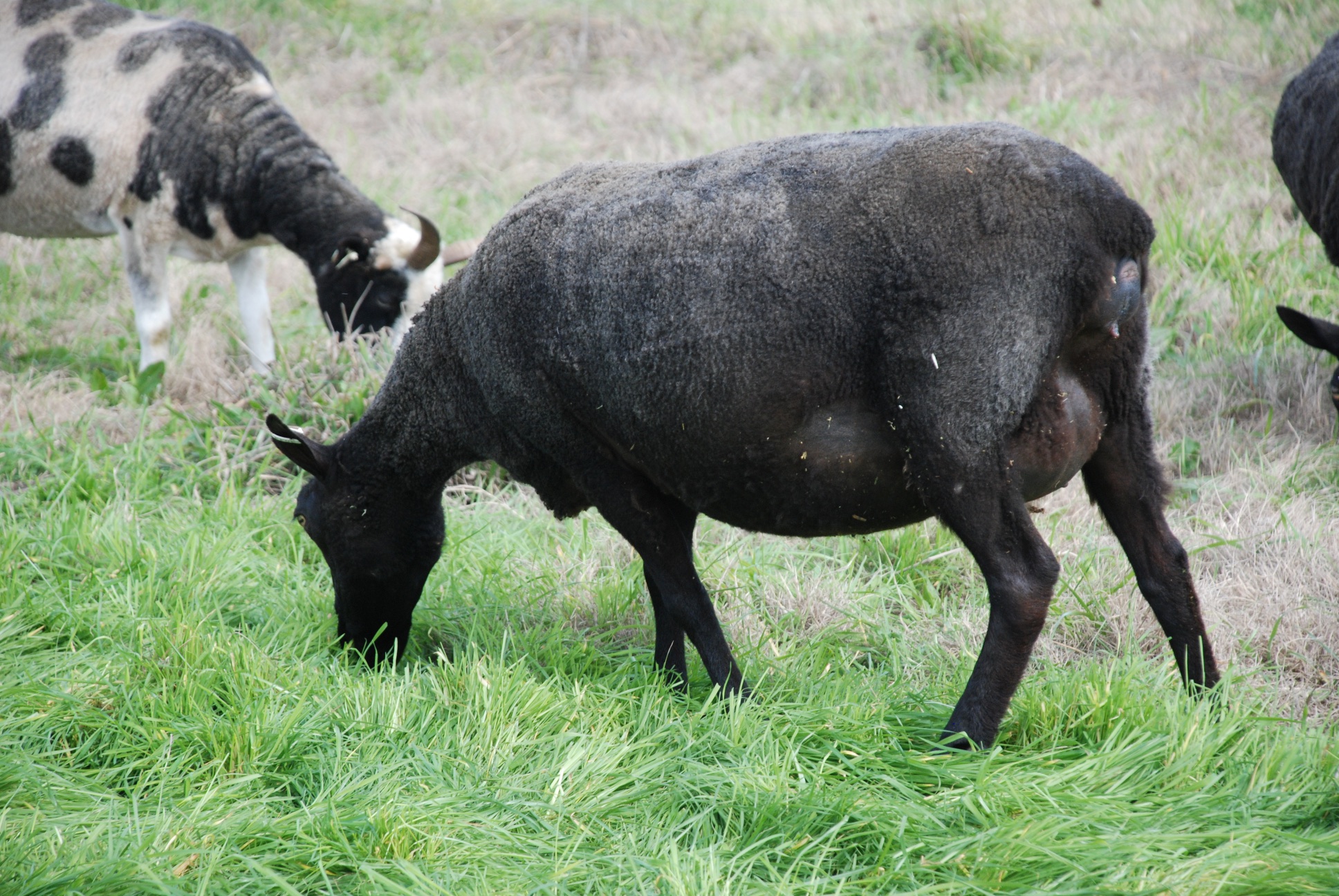 Esmerelda, rear.
Esmerelda, rear.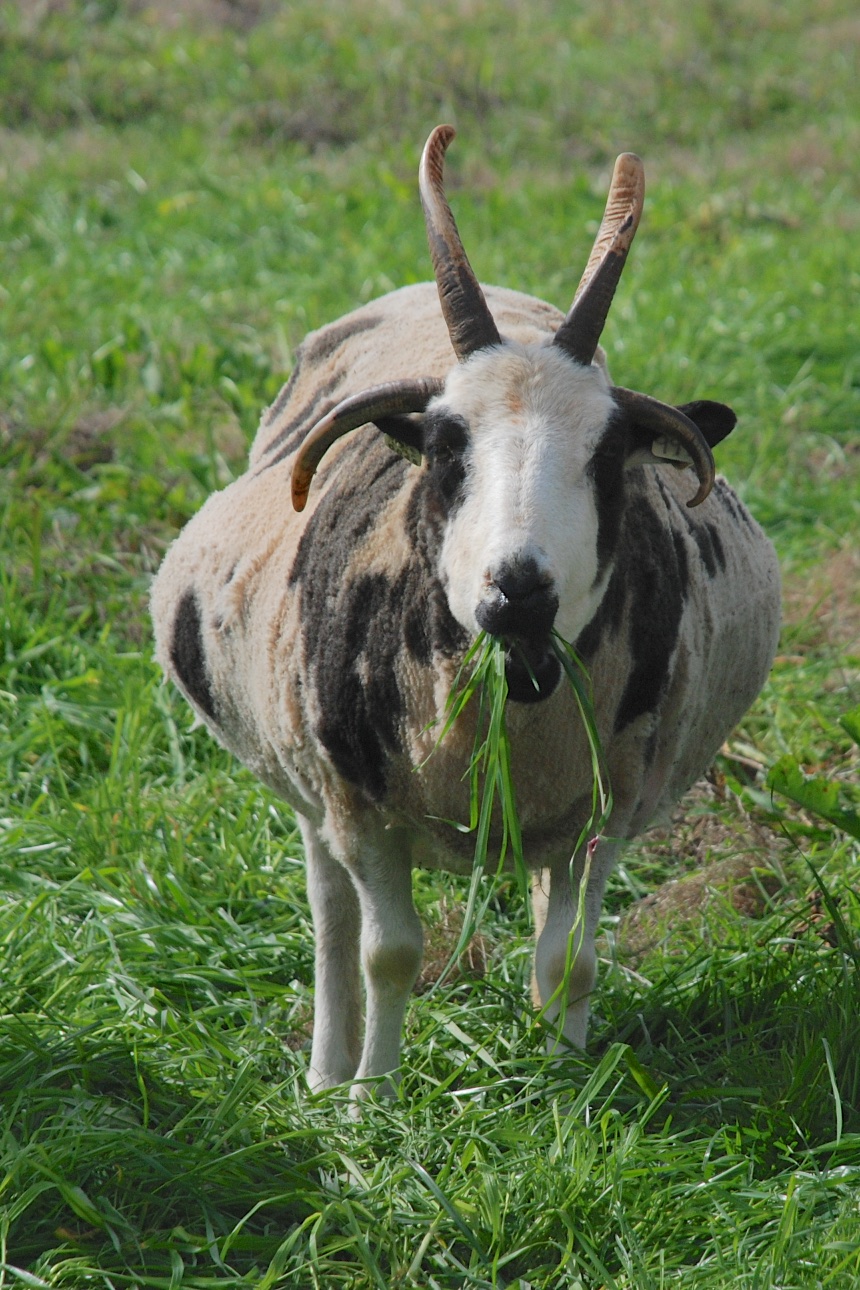 Athena from the front.
Athena from the front.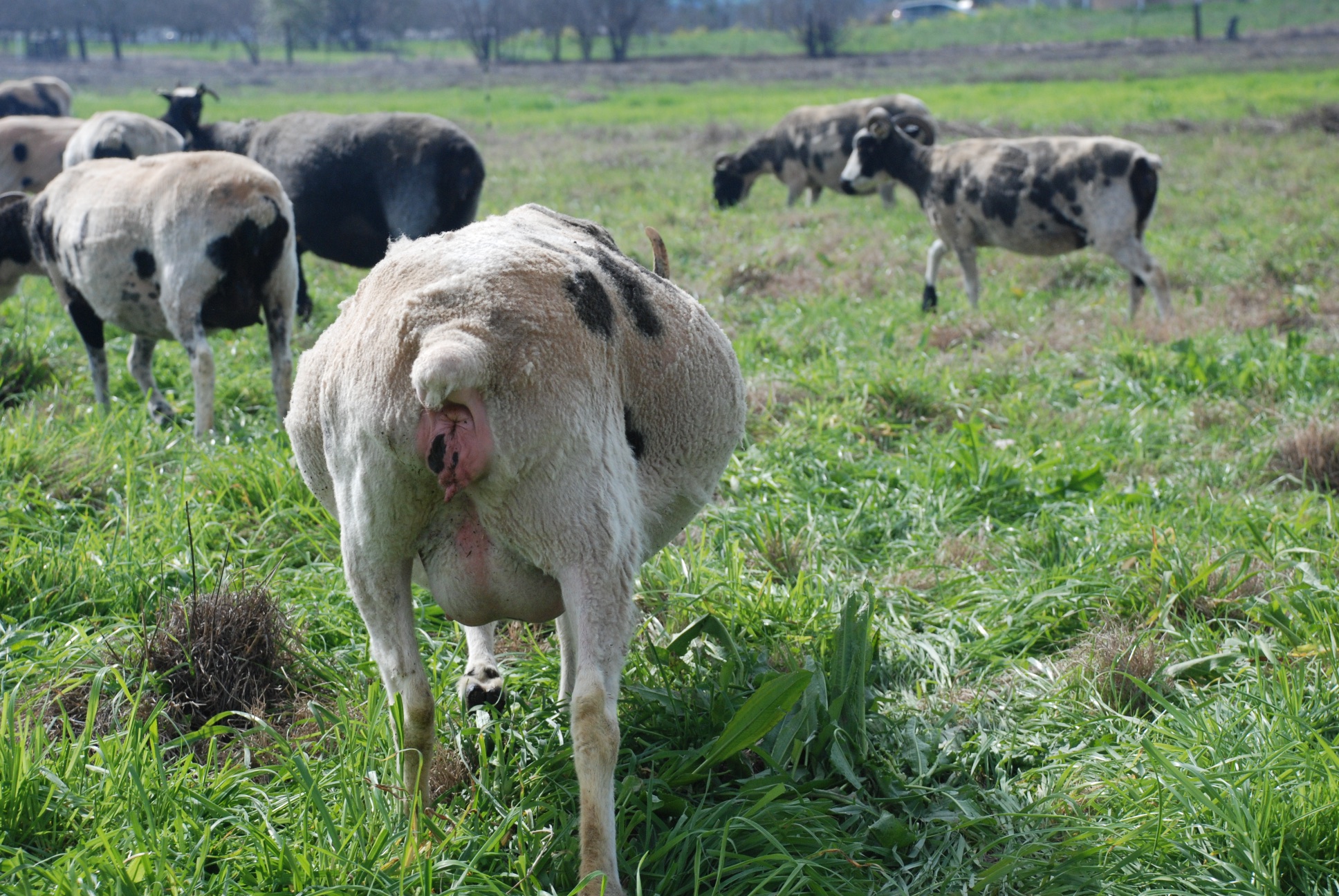 Athena from the rear.
Athena from the rear.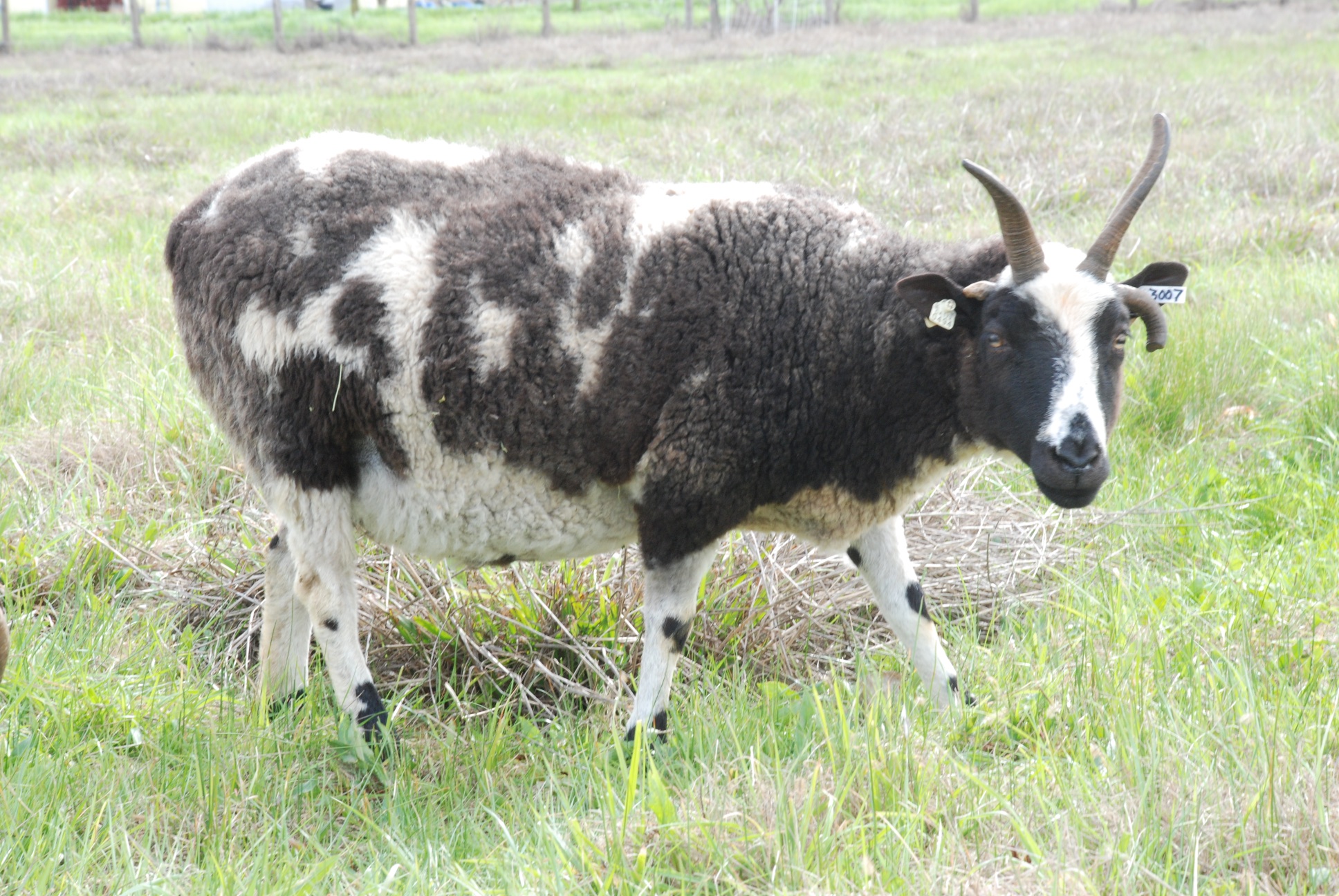 Marilyn is due 2/26.
Marilyn is due 2/26. 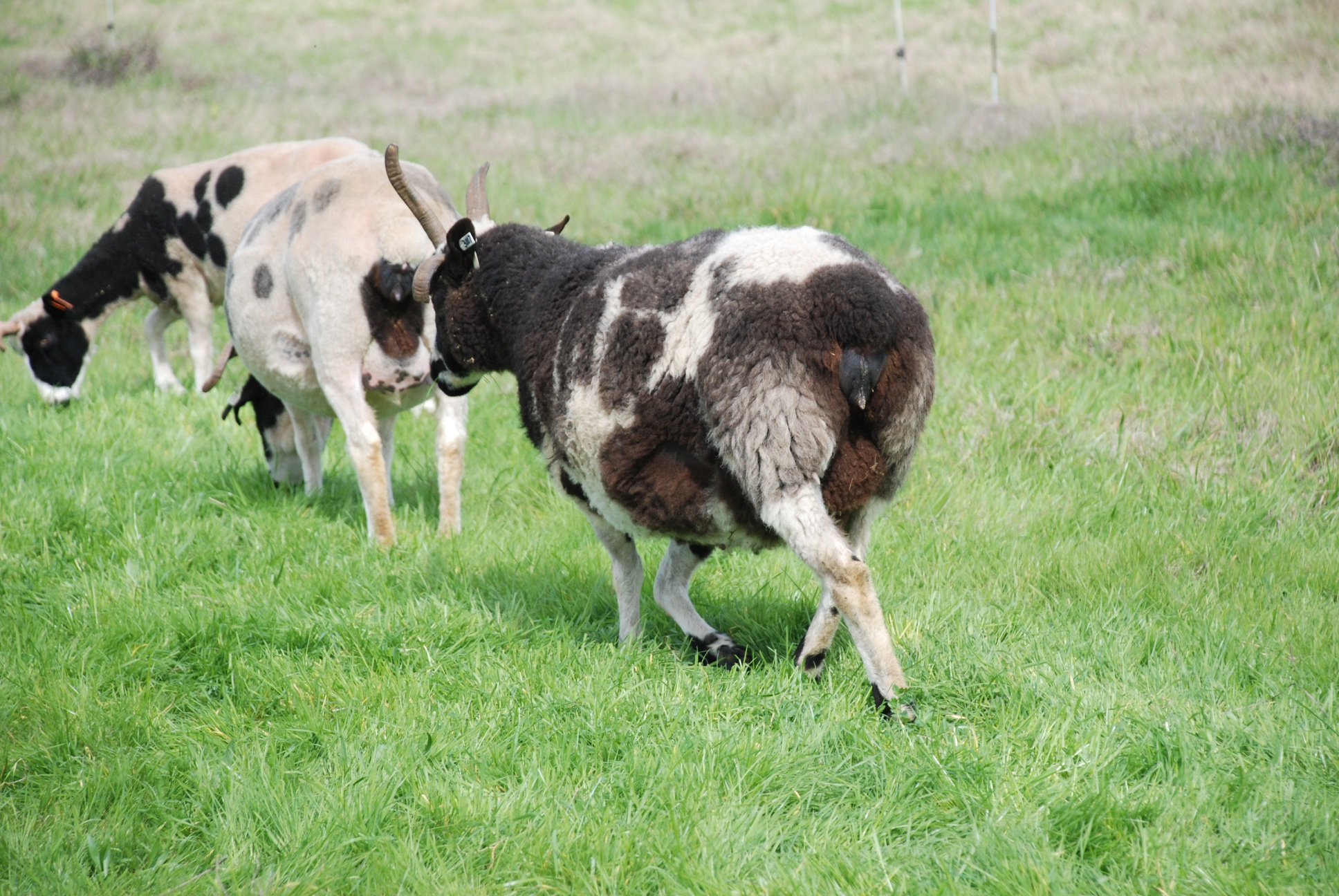 Here she is from the rear. She was shorn in November. I sure like the recently shorn views better for this.
Here she is from the rear. She was shorn in November. I sure like the recently shorn views better for this.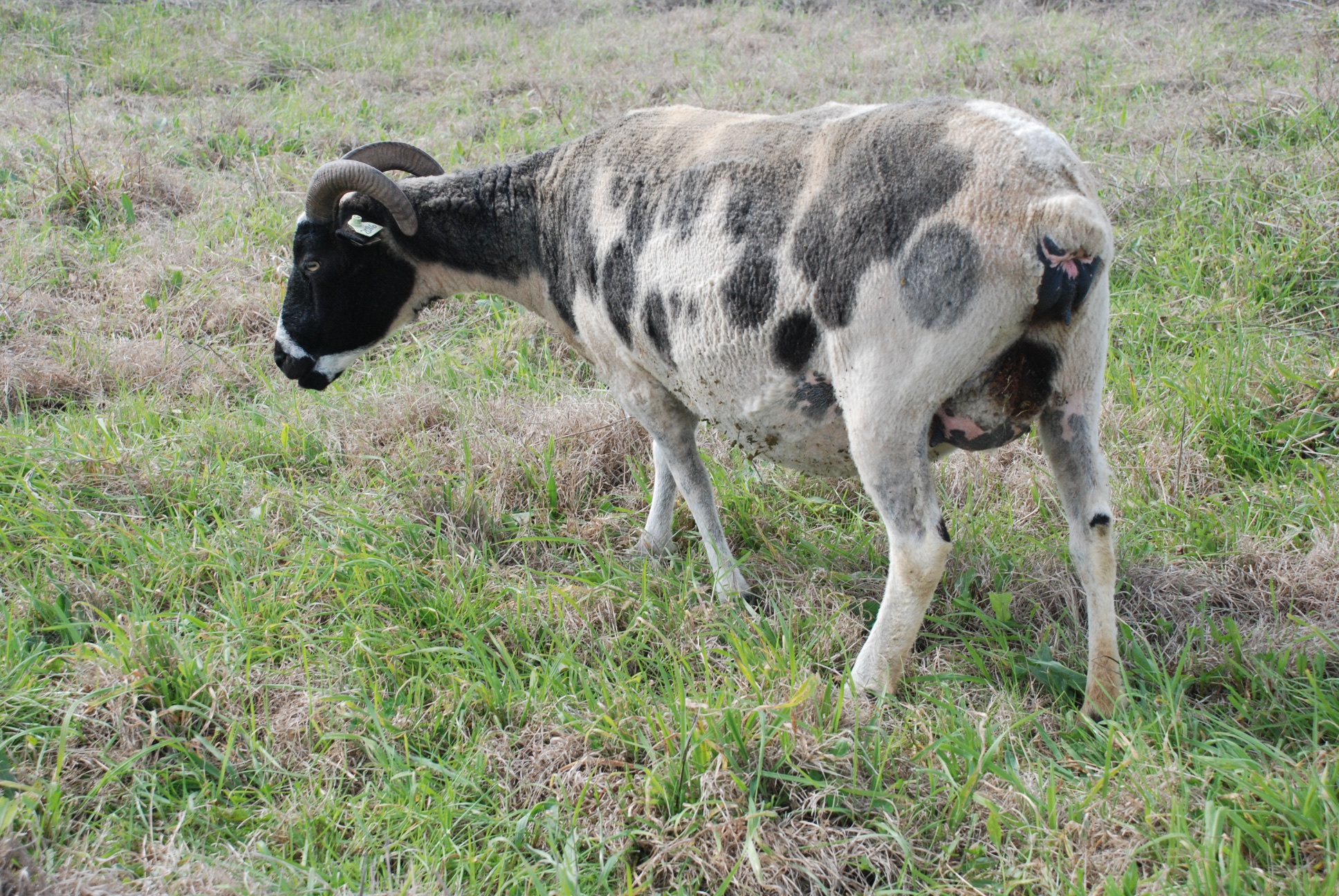 Noel is due 2/27.
Noel is due 2/27.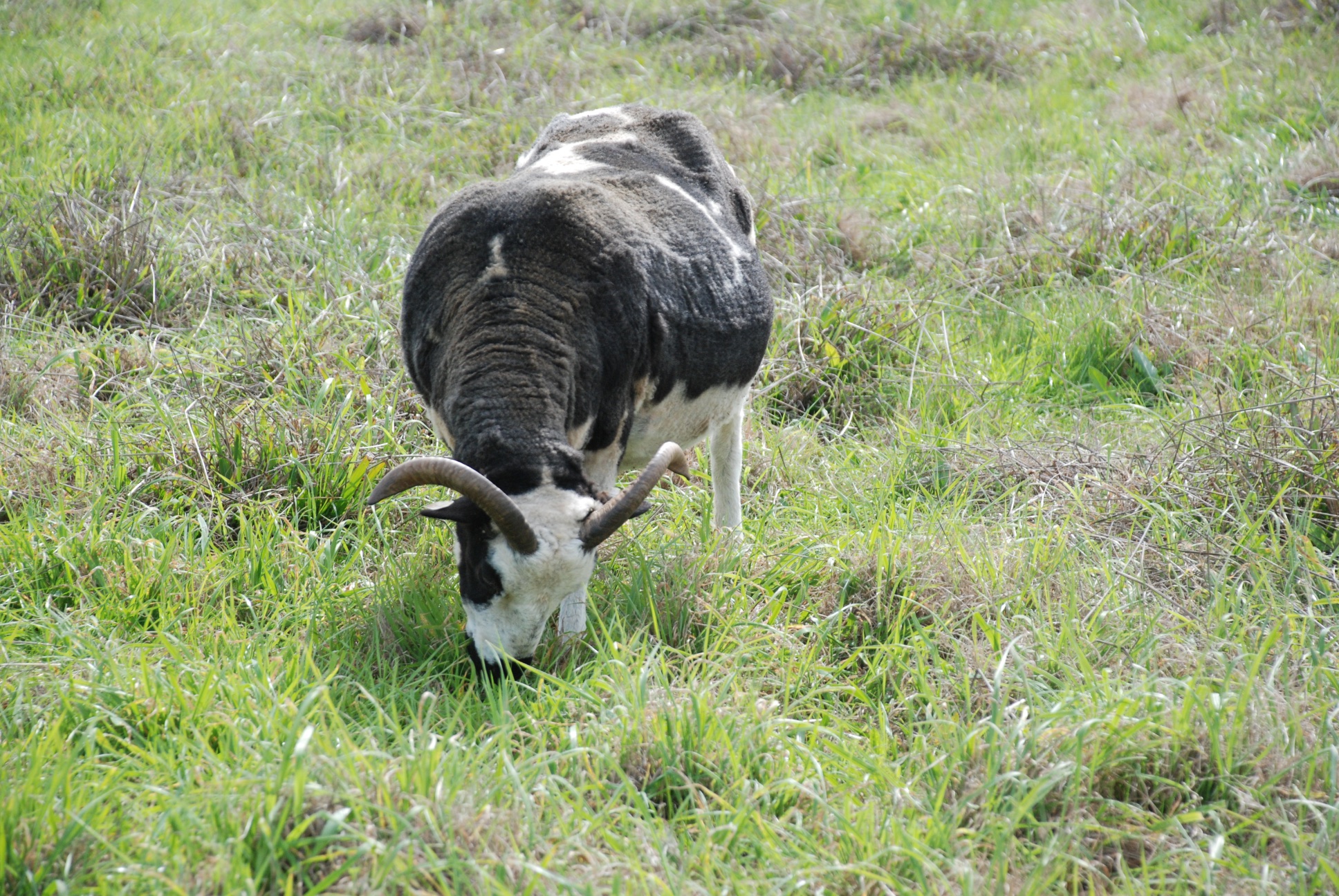 Fran is due 2/28.
Fran is due 2/28.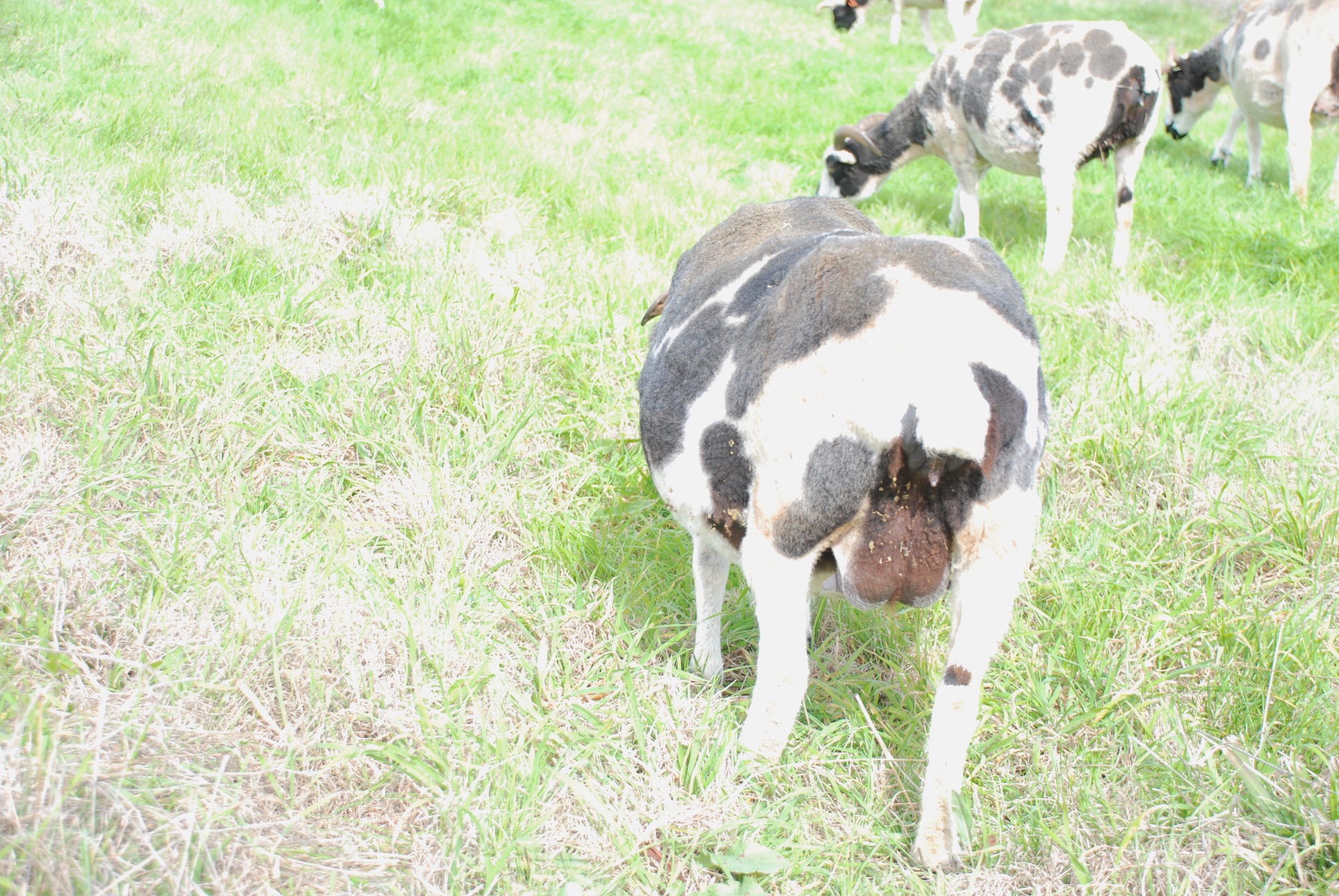 Fran from the rear.
Fran from the rear.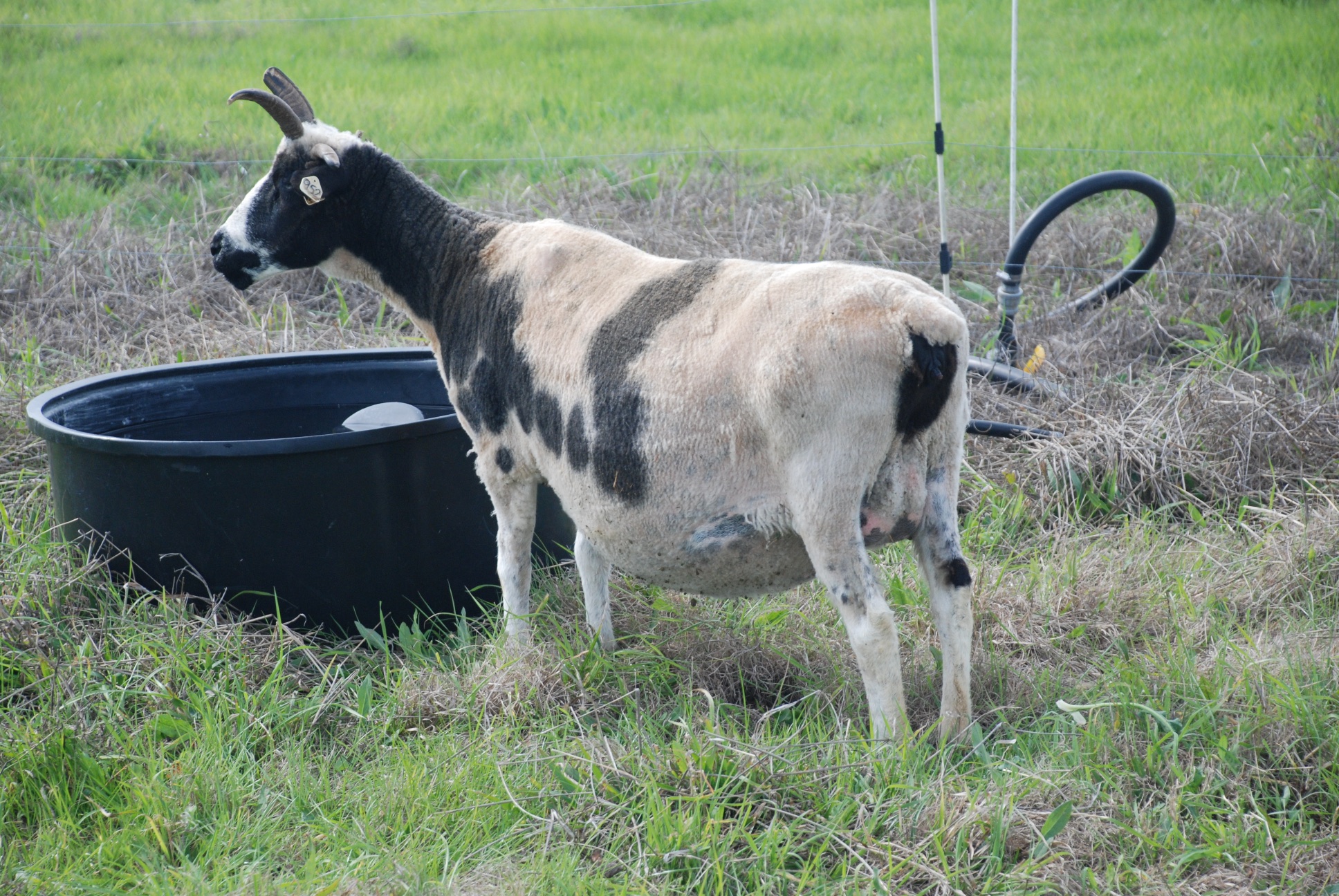 Spring isn't due until March 5 but she always looks so big I thought I'd just give you a view.
Spring isn't due until March 5 but she always looks so big I thought I'd just give you a view.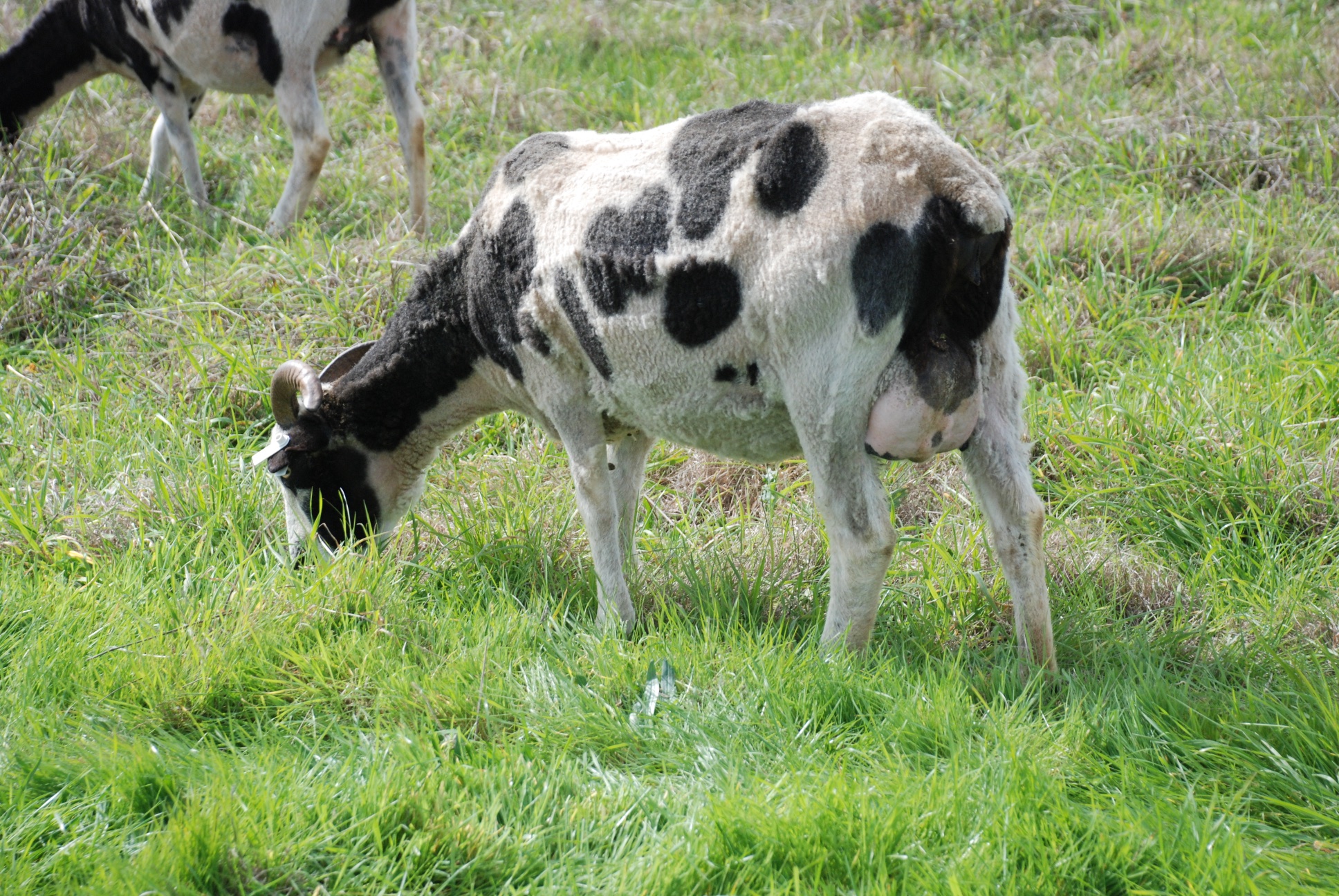 Who is this? Trick question. That is Delight who is nursing twins.
Who is this? Trick question. That is Delight who is nursing twins.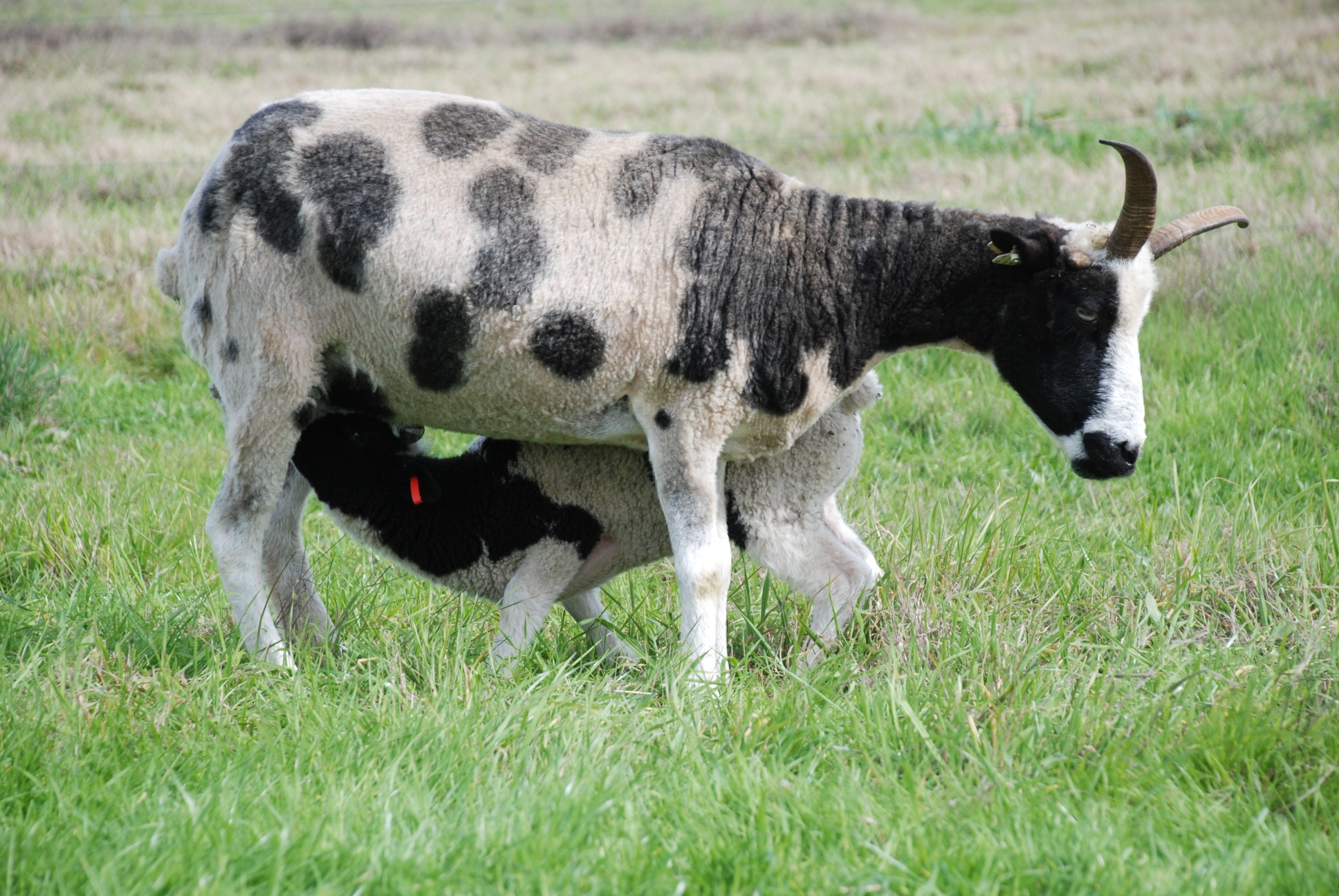 And here is Dazzle with her single. You can sure see the difference in body condition of ewes that are nursing month old lambs.
And here is Dazzle with her single. You can sure see the difference in body condition of ewes that are nursing month old lambs.